After a four-year hiatus, we finally made a return visit to Portugal in September 2021! In 2017, long before anyone imagined a pandemic would press pause on basically everything, we visited this gorgeous country for the first time with a group of friends. On that trip, we visited Lisbon, Lagos, Evora and Porto (with day trips to Cascais and Obidos). For our September 2021 return, we decided to give Lisbon another go (our first visit was cut short), and spend more time in Cascais and one of our favorites, Lagos. Other than those repeats, all other stops would be new adventures for us.
We were embarking on a trip right when Europe was starting to reopen from its long Covid shutdown, and we braced ourselves for potential changes and disruptions along the journey. Fortunately, we only had to change our plans once, and that was at the very start of the trip: two days prior to our departure from the US, the Netherlands imposed a mandatory 10-day quarantine for travelers arriving from the US. We were supposed to spend a night in Amsterdam before continuing on to Portugal, so this was a major calamity as a 10-day quarantine in Amsterdam was a BIG disruption. Thankfully, Delta and KLM are codeshare partners, so we were able to join the two separate flight reservations under a single ticket, and arrive in Portugal a day early, transiting through Amsterdam and avoiding the dreaded quarantine.
At the time of our visit, Portugal had strict Covid protocals in place for non-Europeans. We had to provide a negative PCR to enter the country, and negative test results before checking in to each accomodation, including the Airbnb. These rapid tests were purchased as a six pack at the pharmacy and performed in the presence of hotel reception. We needed PCR tests to travel to the Azores and to return to mainland Portugal. Some restaurants asked for our vaccine cards, but most did not. Masks were worn everywhere, including outdoors, except while eating/drinking.
We spent 18 days in Portugal with the following itinerary:
- Arrival in Porto, ground transfer to Hotel da Oliveira in Guimaraes
- Guimaraes 3 nights
- Pick up rental car in Guimaraes, drive to Aveiro for lunch
- Drive to Coimbra
- Coimbra, 2 nights at Sapientia Boutique Hotel
- Drive to Cascais
- Cascais, 2 nights at Hotel Albatroz
- Drive to Lagos, return rental car
- Lagos, 5 nights, Airbnb
- Train to Lisbon
- Lisbon, 2 nights, Madalena Beautique hotel
- Fly to Ponta Delgada, Azores
- Ponta Delgada, 4 nights, Grand Hotel Açores Atlântico
Often referred to as the birthplace of Portugal, Guimaraes is an incredibly beautiful, well preserved medieval city, just 30-minutes north of Porto. If you’ve already spent time in Porto and want to explore new territory, I definitely recommend spending a few days in Guimaraes. If you’re staying in Porto, Guimaraes makes an excellent day trip and is small enough to see most of it on foot in one day.
We were happy with our three-night stay which allowed us to take a very leisurely approach to site seeing while we adjusted to the time change. Most of our days were spent walking along the ancient cobblestones, popping in to a café or a church and people watching. The 10th century Castelo de Guimaraes is a top attraction, and from the castle ramparts you can enjoy the view of the countryside. Further south of town, the Igreja de Nossa Senhora da Consolacio presents a gorgeous flower garden on the Largo Republica do Brasil, and just down the street is the grand Convento de S. Francisco. The remains of this church date to the 1400s, and the intricate tile work in the interior is in the typical Azulejo style. While exploring Guimaraes, be sure to take note of the Passos or Stations of the Via Sacra, which are devotions to the Passion of Christ. In 1727, seven chapels were built in Guimarães but today there are only five: Passo do Largo do Carmo, Passo da Rua de Santa Maria, Passo do Largo da Misericórdia, Passo da Senhora da Guia and Passo do Campo da Feira.
Our favorite thing in Guimaraes was wandering the squares and small passages in and around the Lago da Oliveira. Our hotel had a splendid viewpoint over the Praca de Santiago, which is lit at night with twinkle lights, with cafe tables occupied by people enjoying a nightcap or music emanating from a nearby establishment.
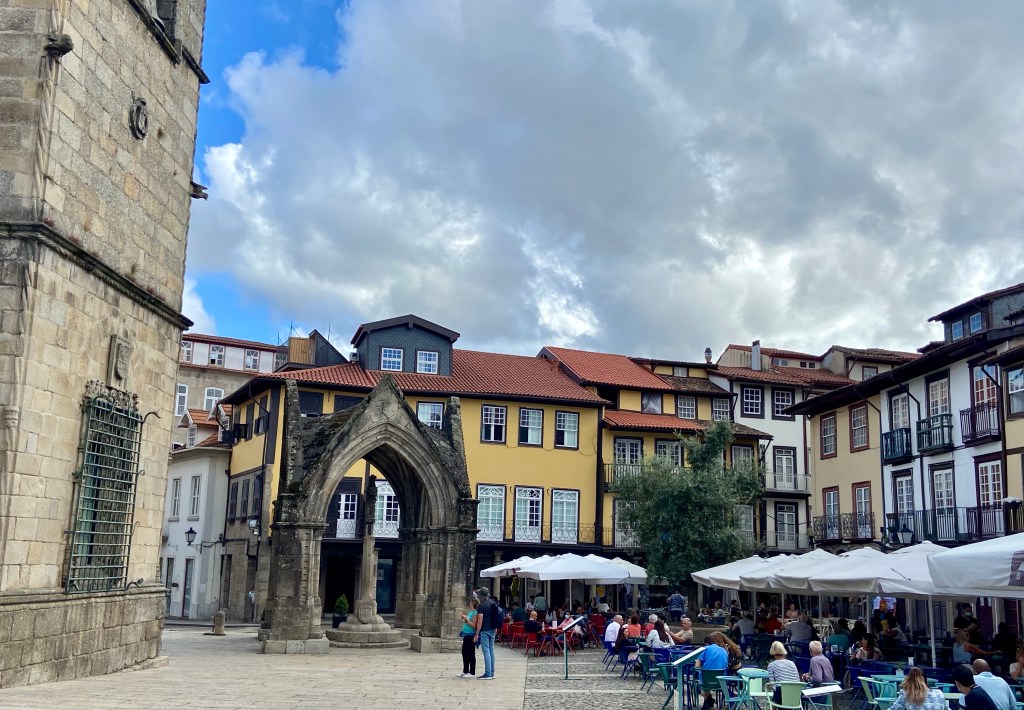

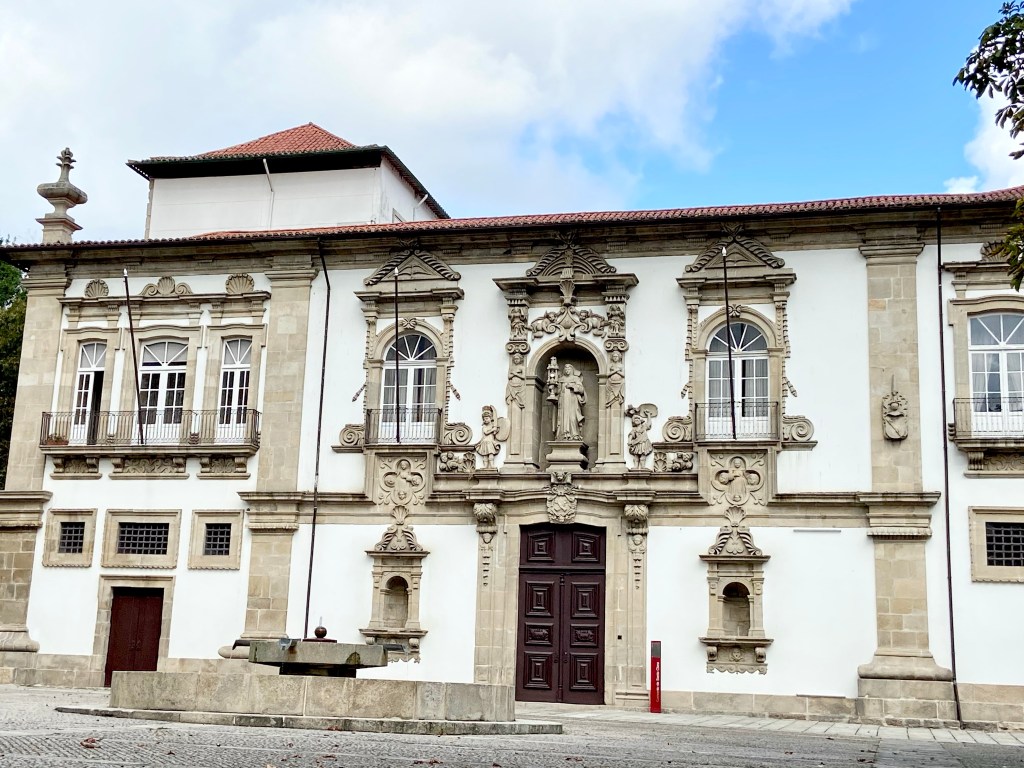
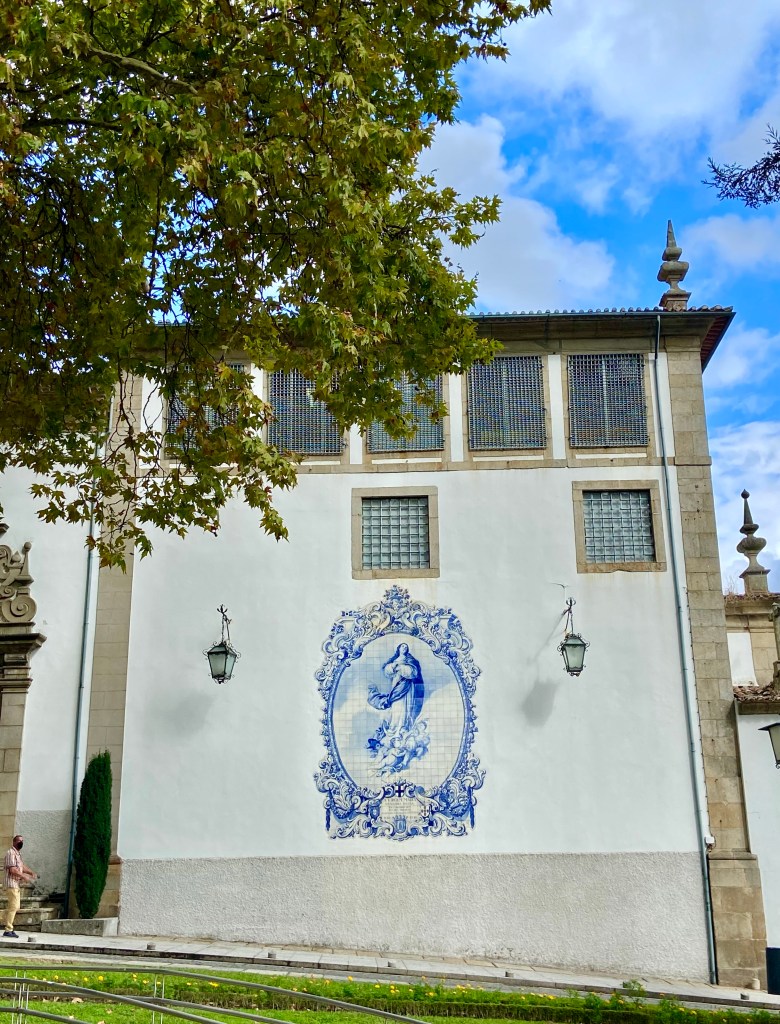
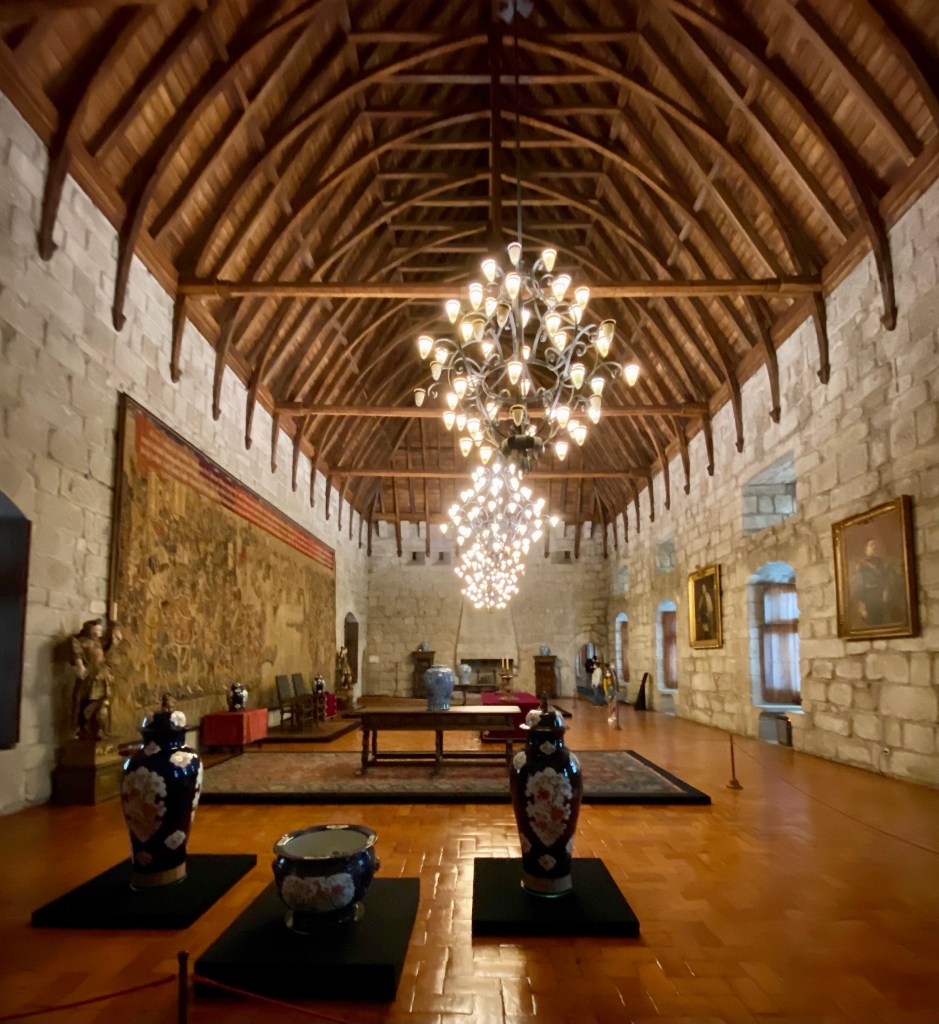
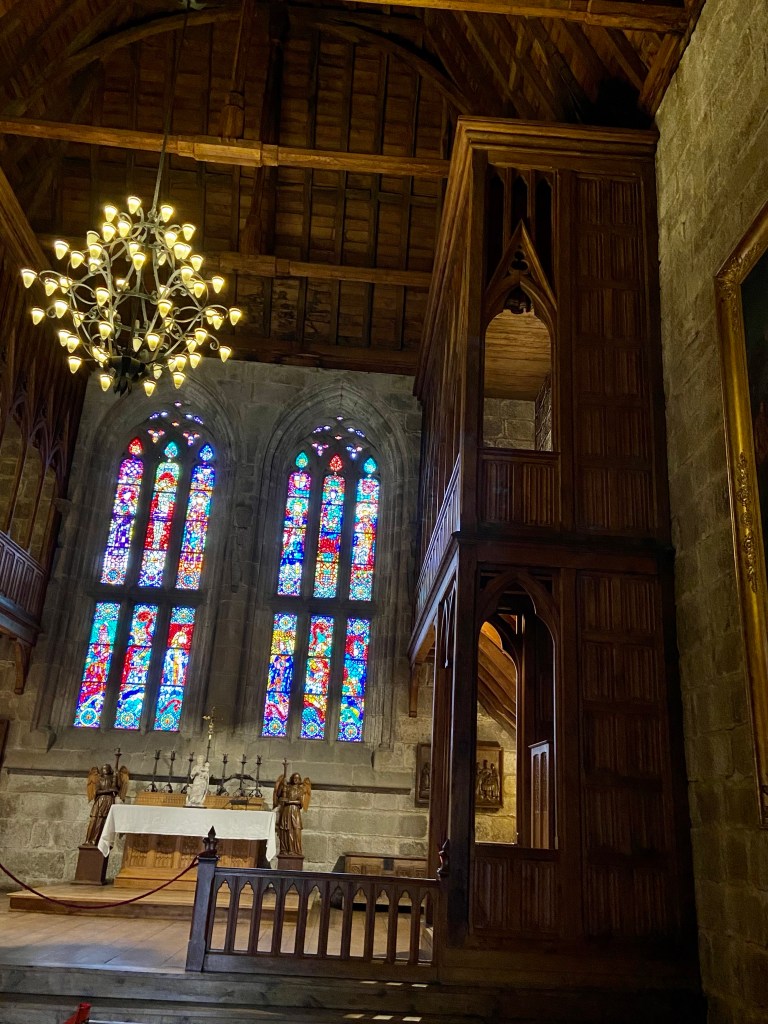


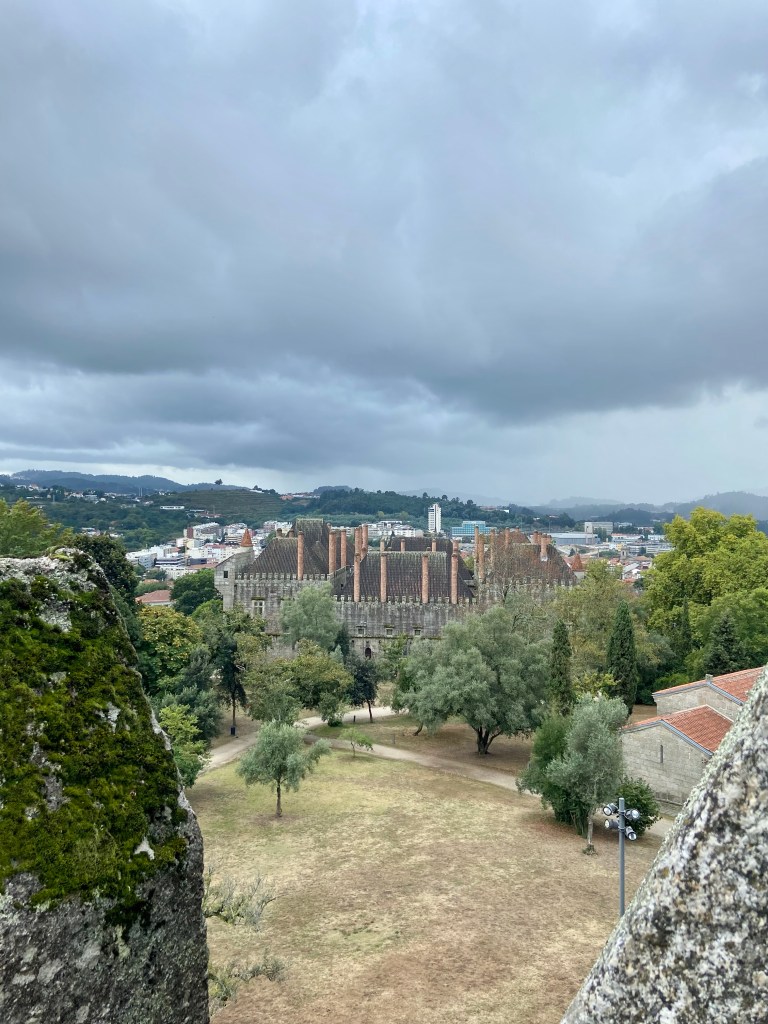
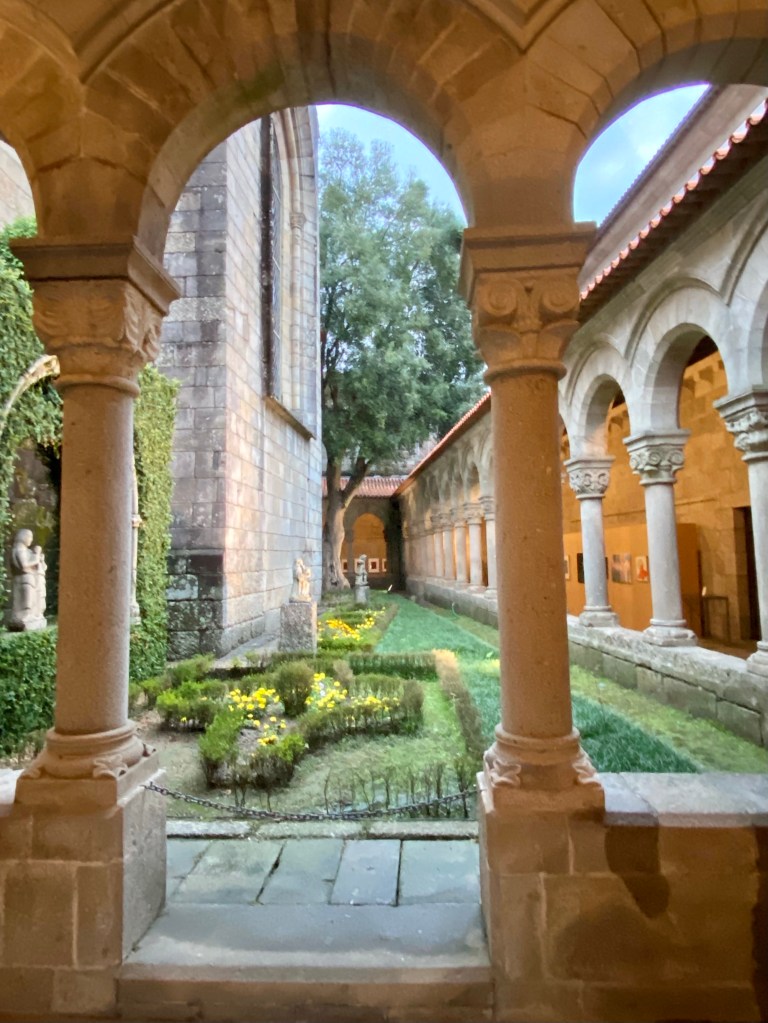
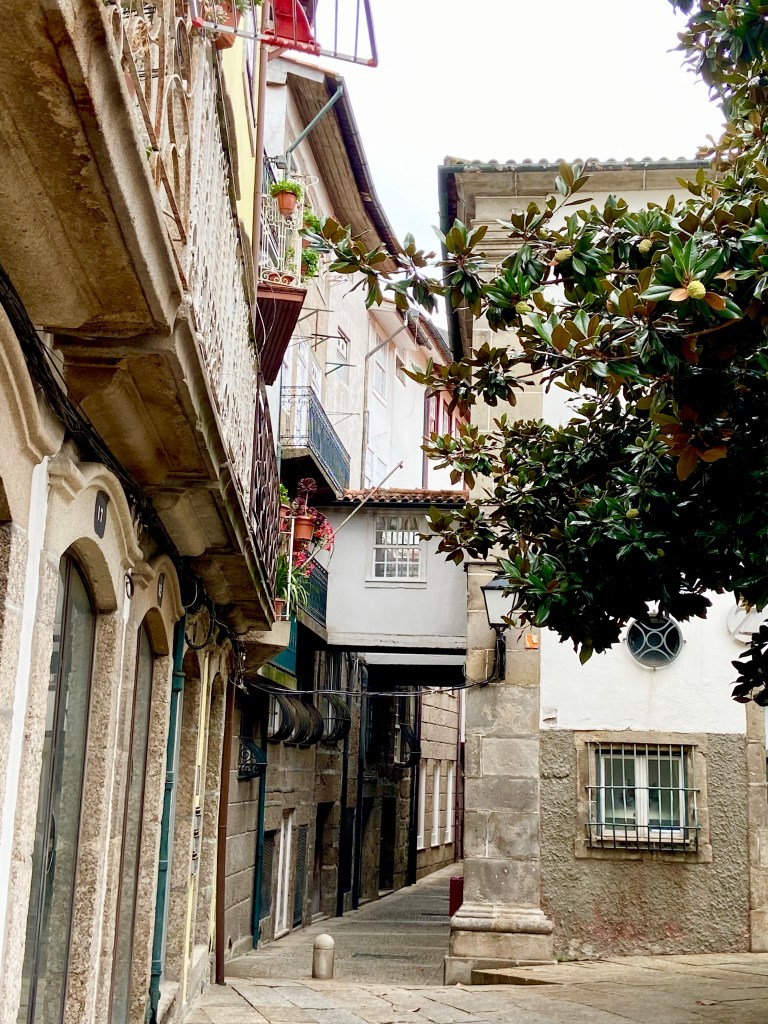




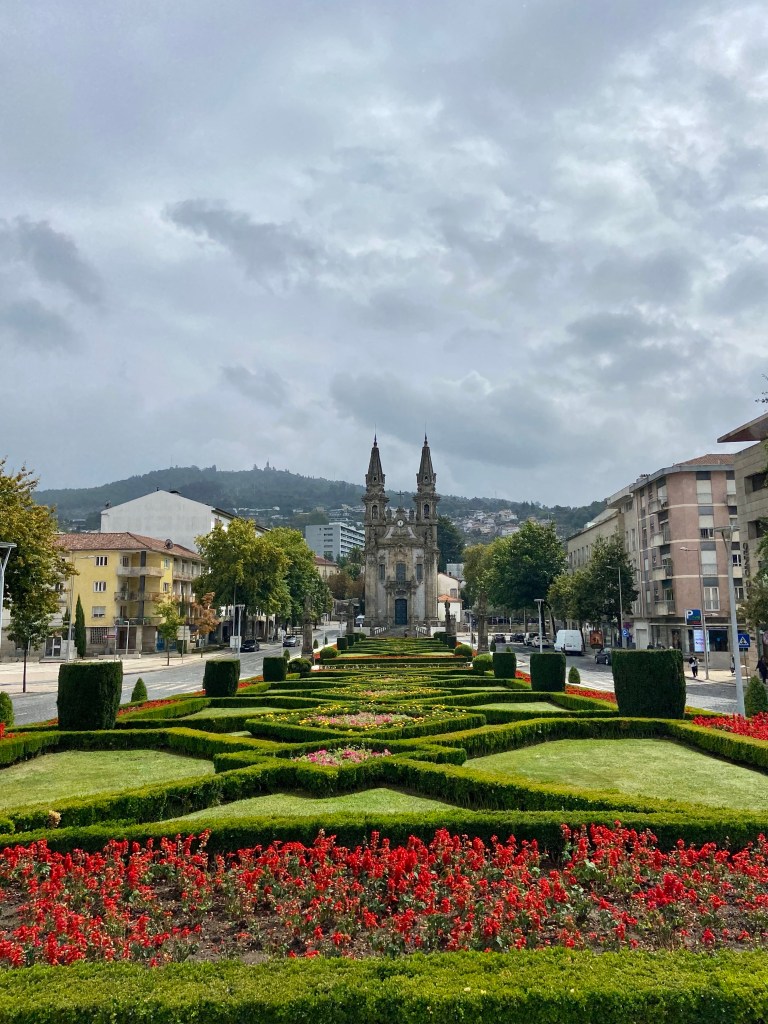

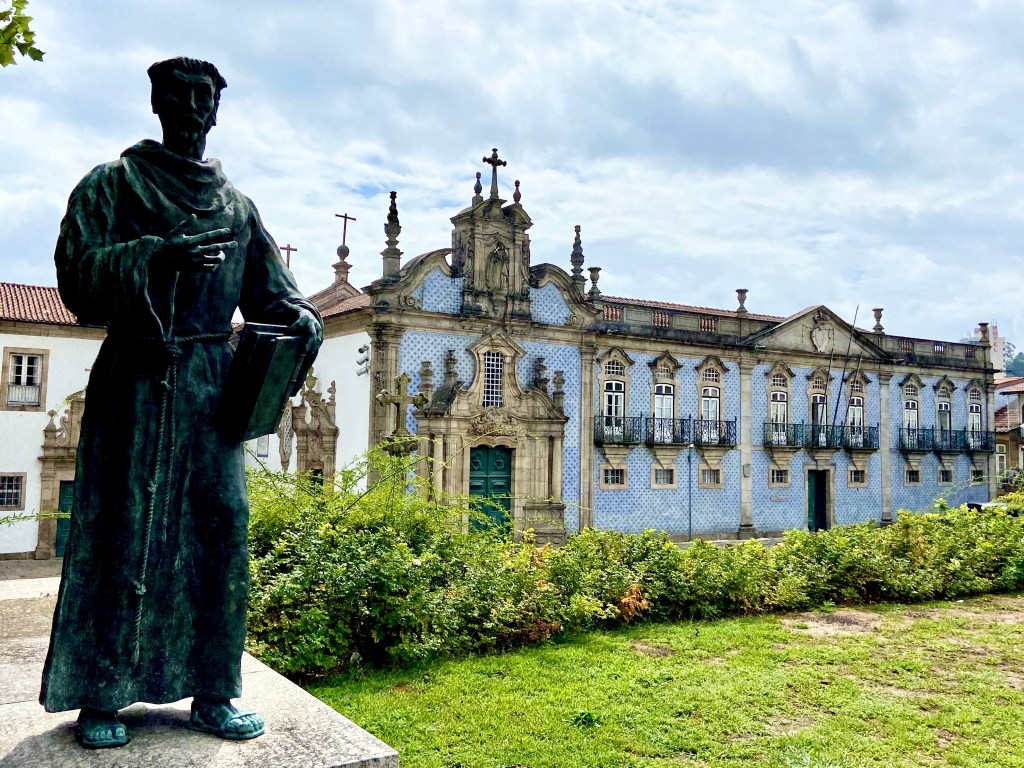

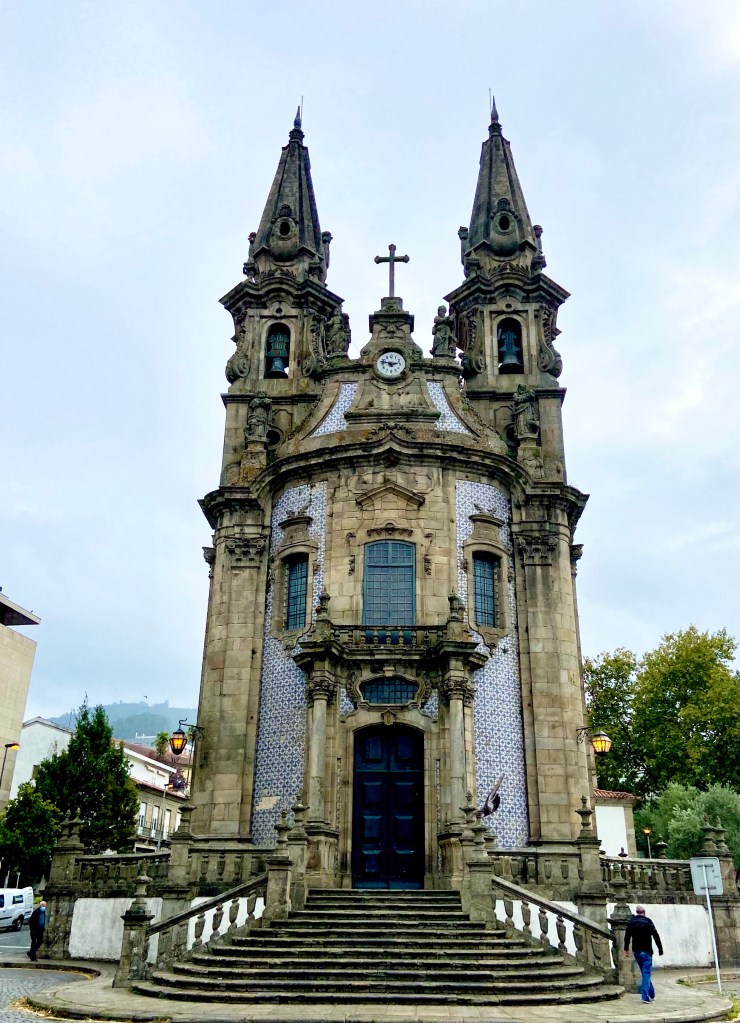
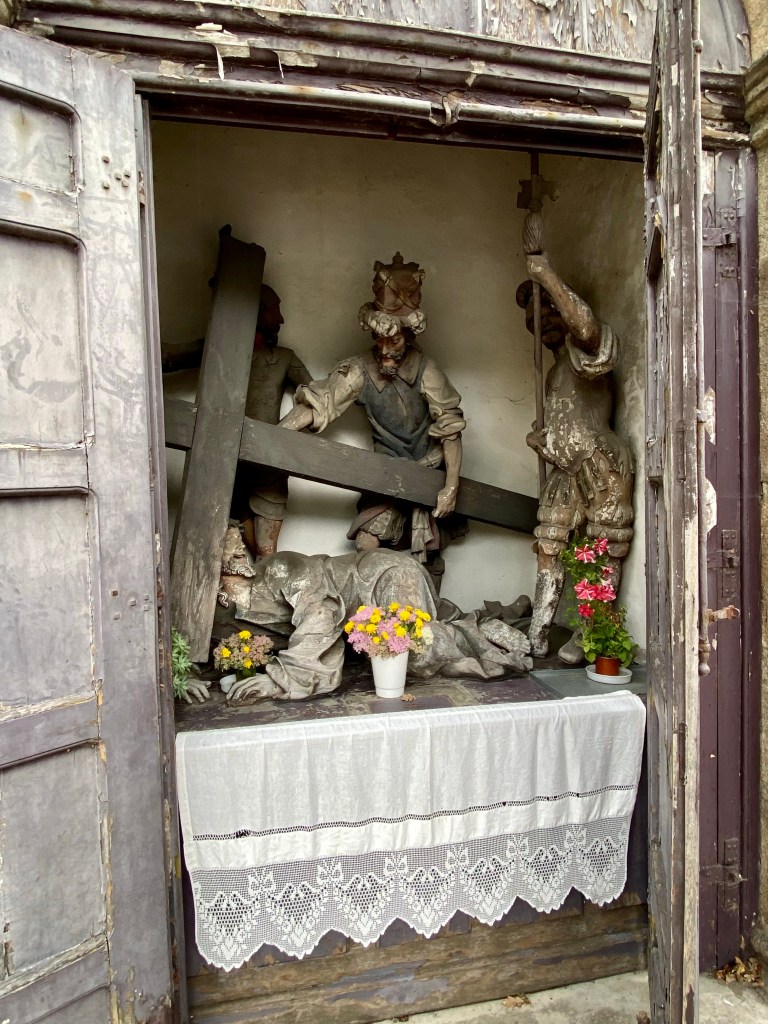
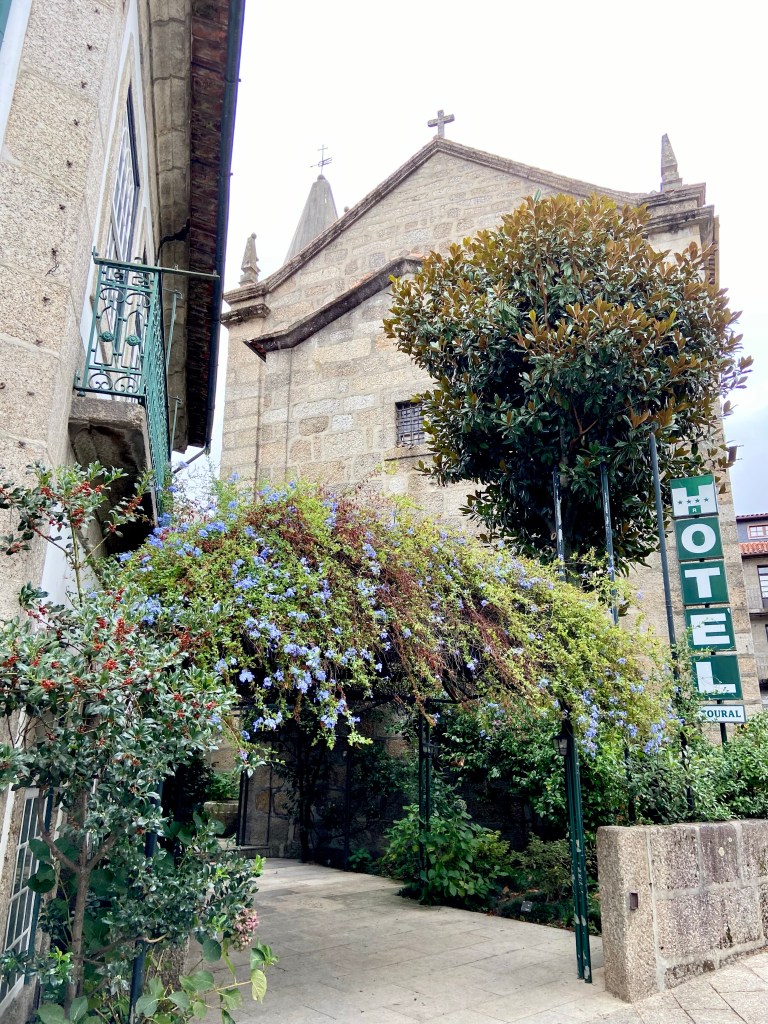
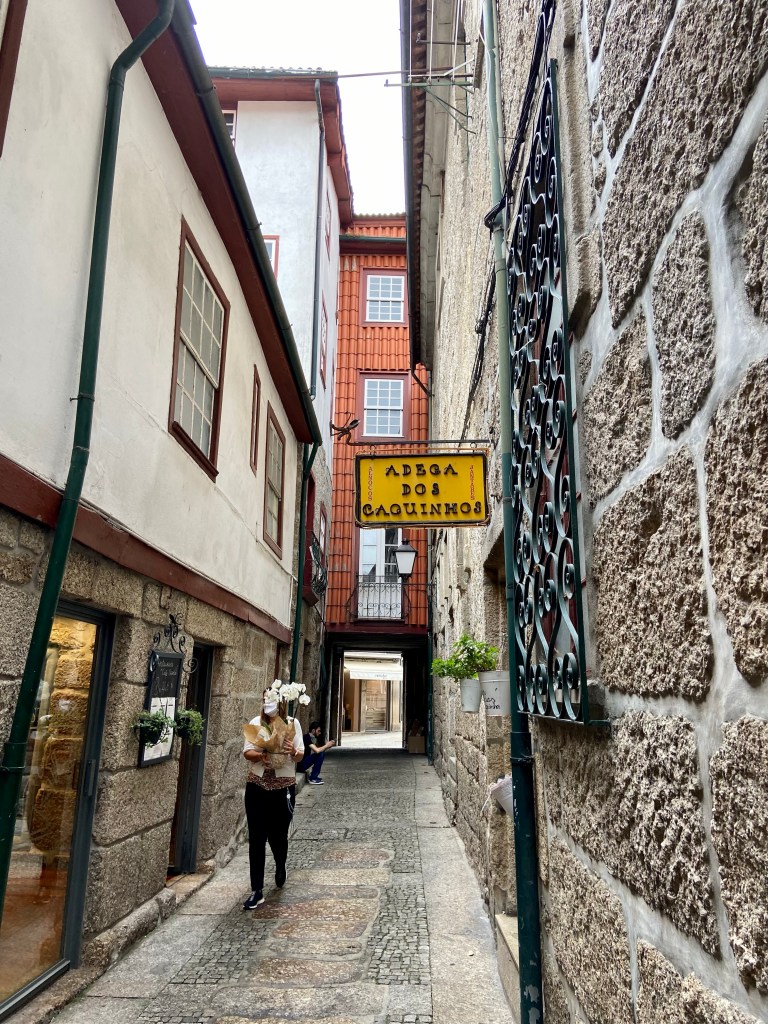
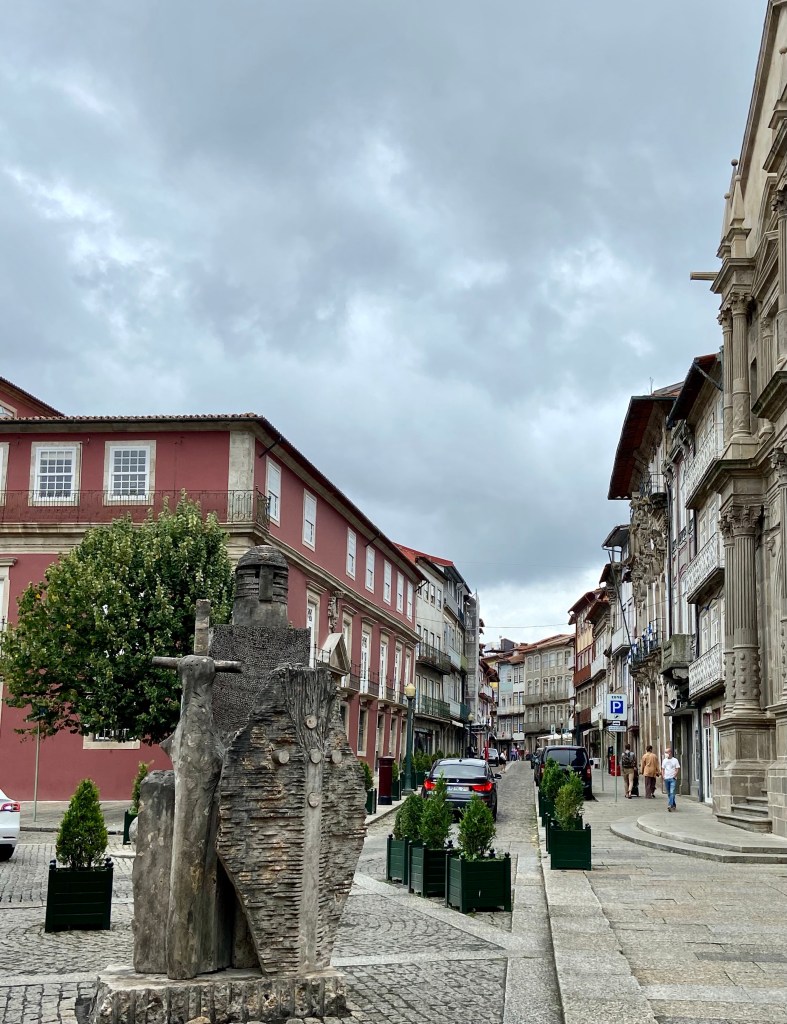
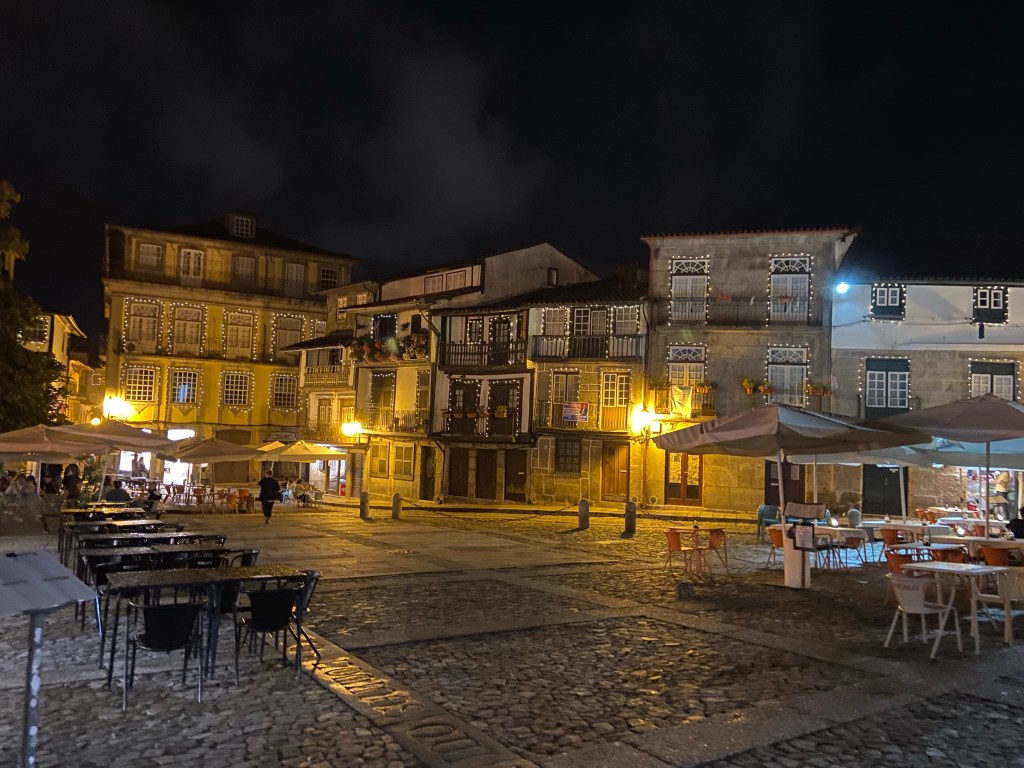
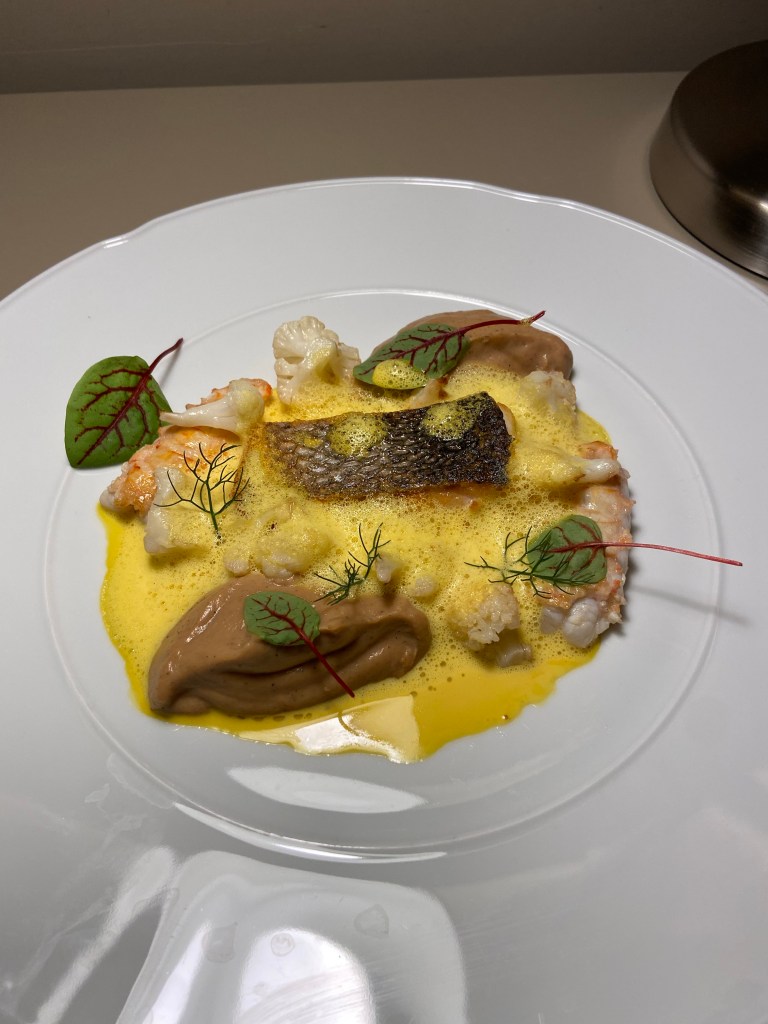
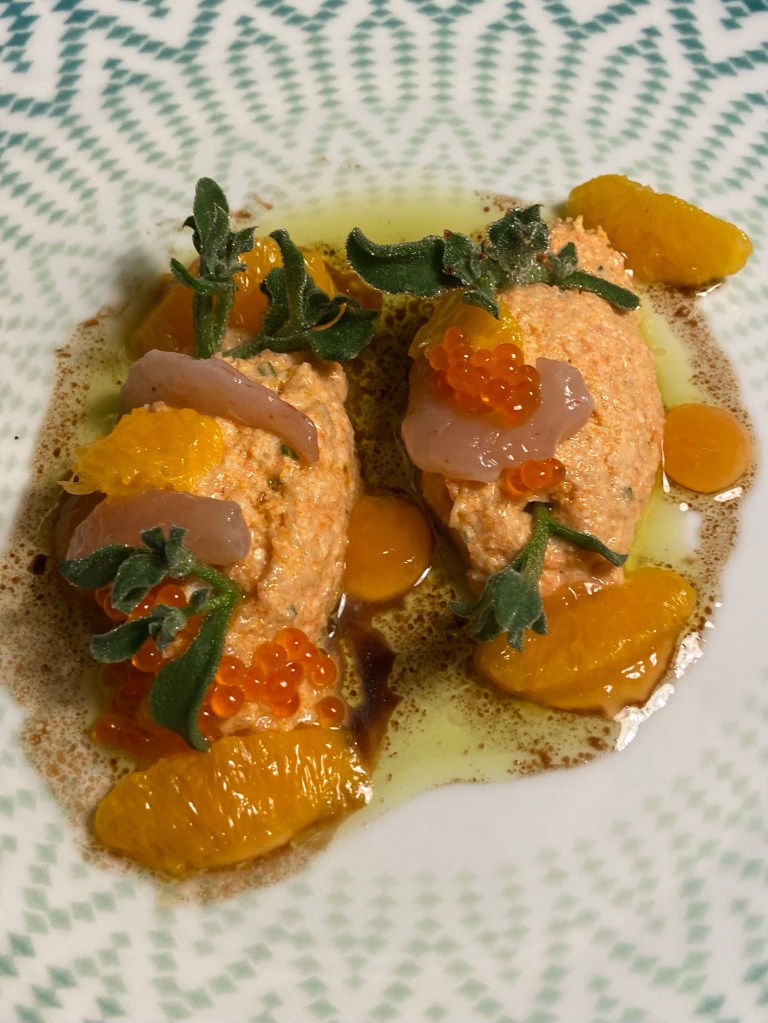


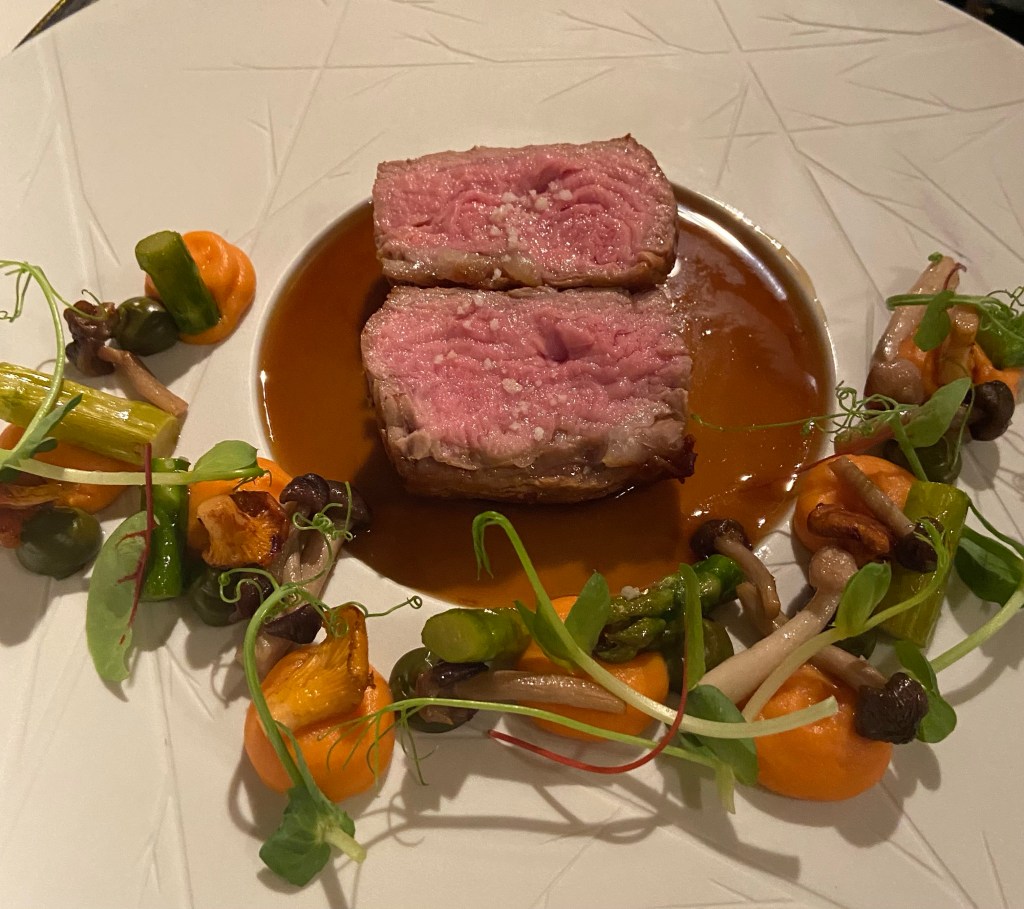
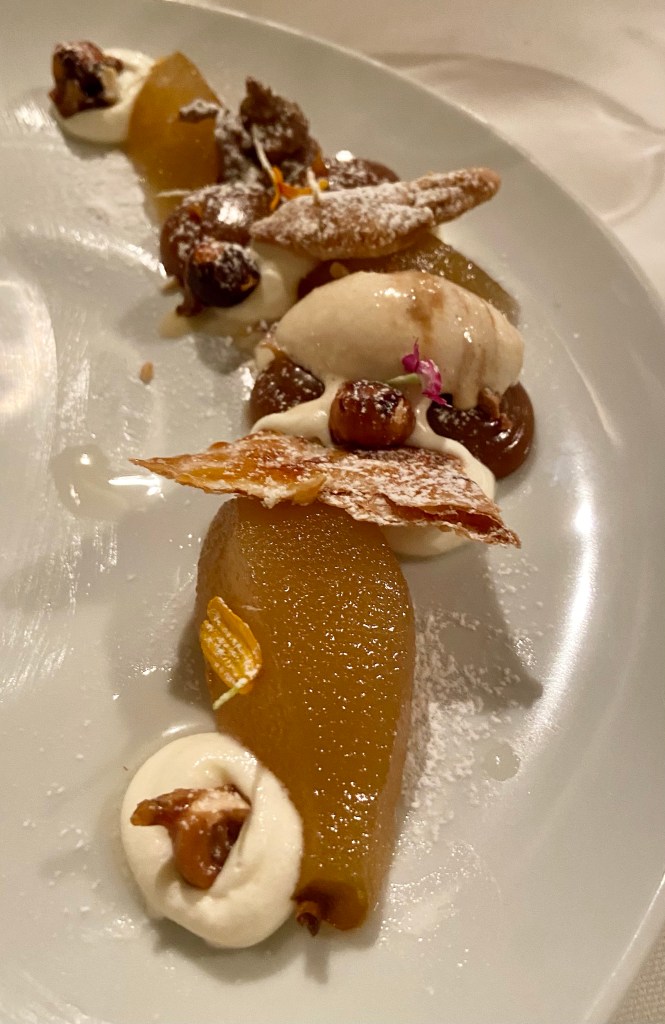
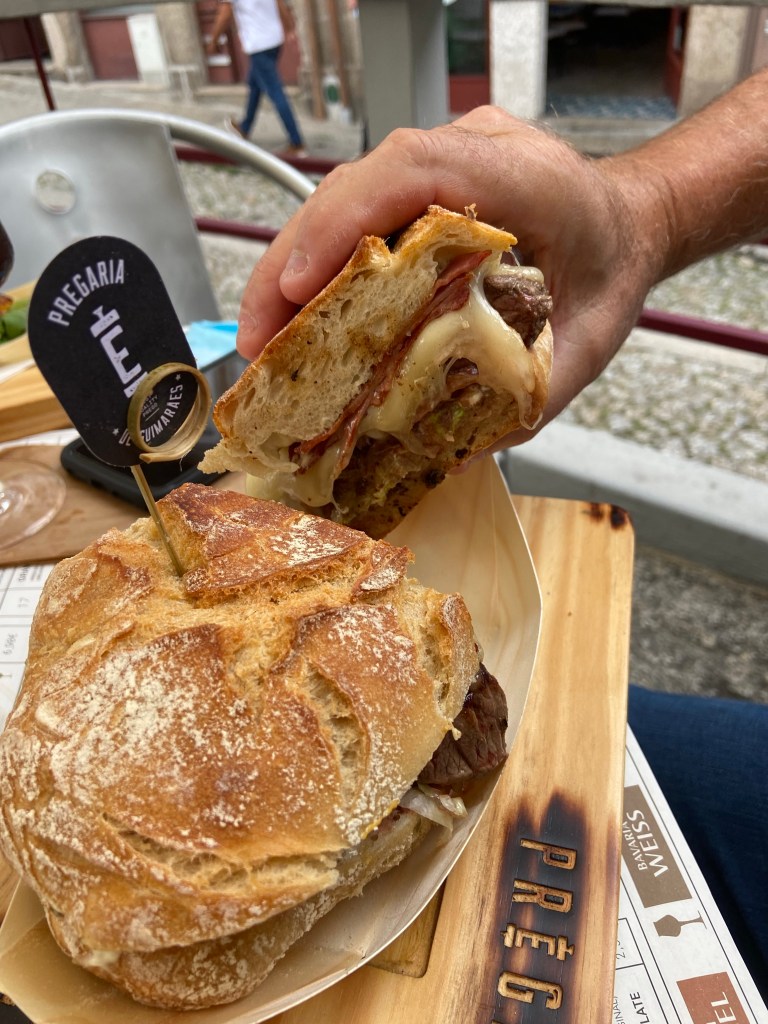
At the end of our stay in Guimaraes, we collected a rental car and drove 1.5 hours to Aveiro for lunch and a stroll. Set along a lagoon called Ria de Aveiro, the town is known for its canals, which are navigated by colorful boats (barcos moliceiros), traditionally used to harvest seaweed. Definitely take a minute to admire the interesting art on the boats! Aveiro is another small town that is perfect for a day trip. The pedestrian area starting at the Obelisco da Liberdade is lined with eateries and places to stop for an al fresco beverage or gelato.
Since we were only stopping in Aveiro en route to Coimbra, we didn’t engage in everything Aveiro has to offer, but if you have the time, it’s possible to take a water tour on the moliceros, stroll the ocean-front village of Costa Nova, or if it’s rainy, check out the Museu de Aveiro, which is housed in a former monastery.
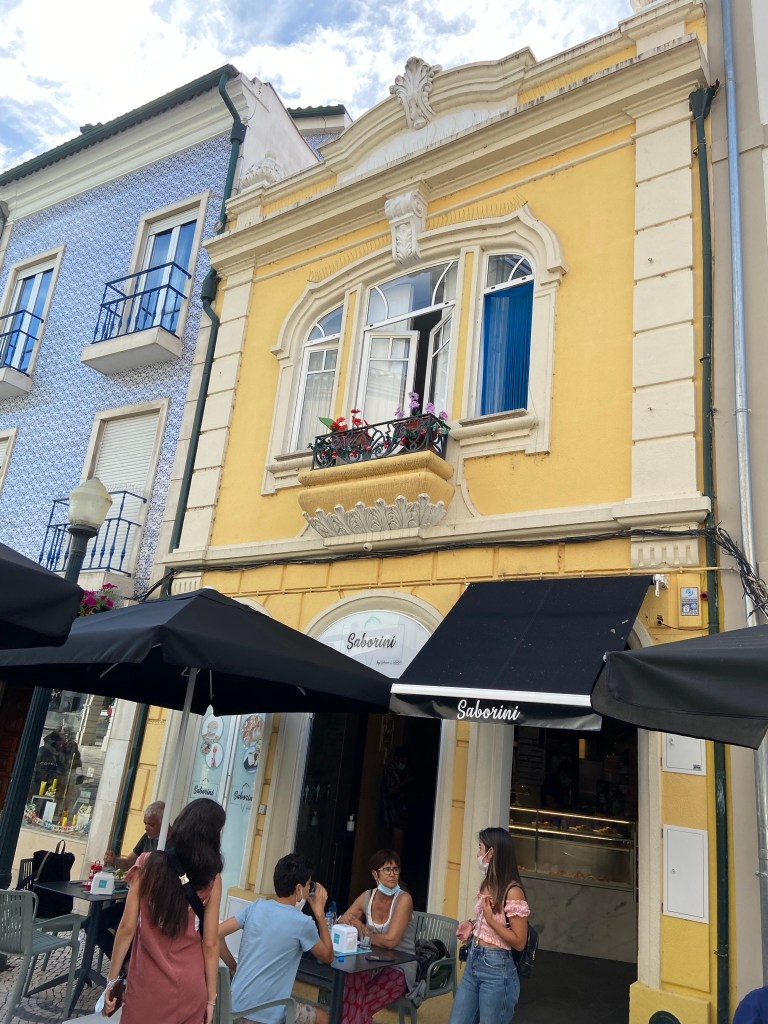

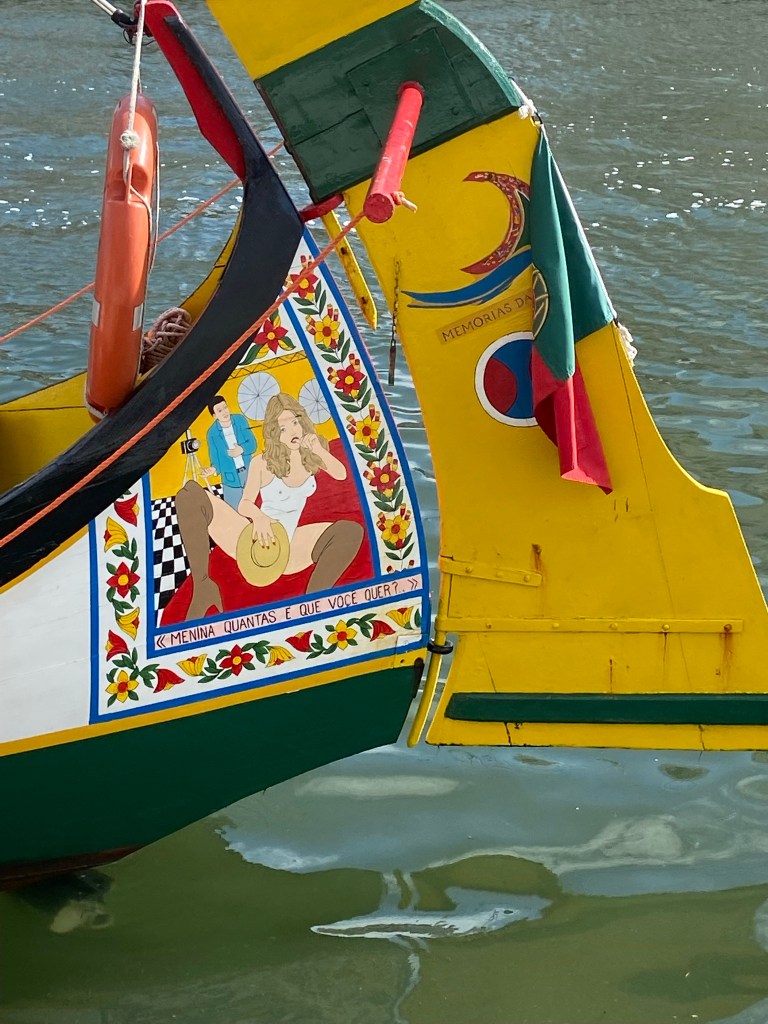
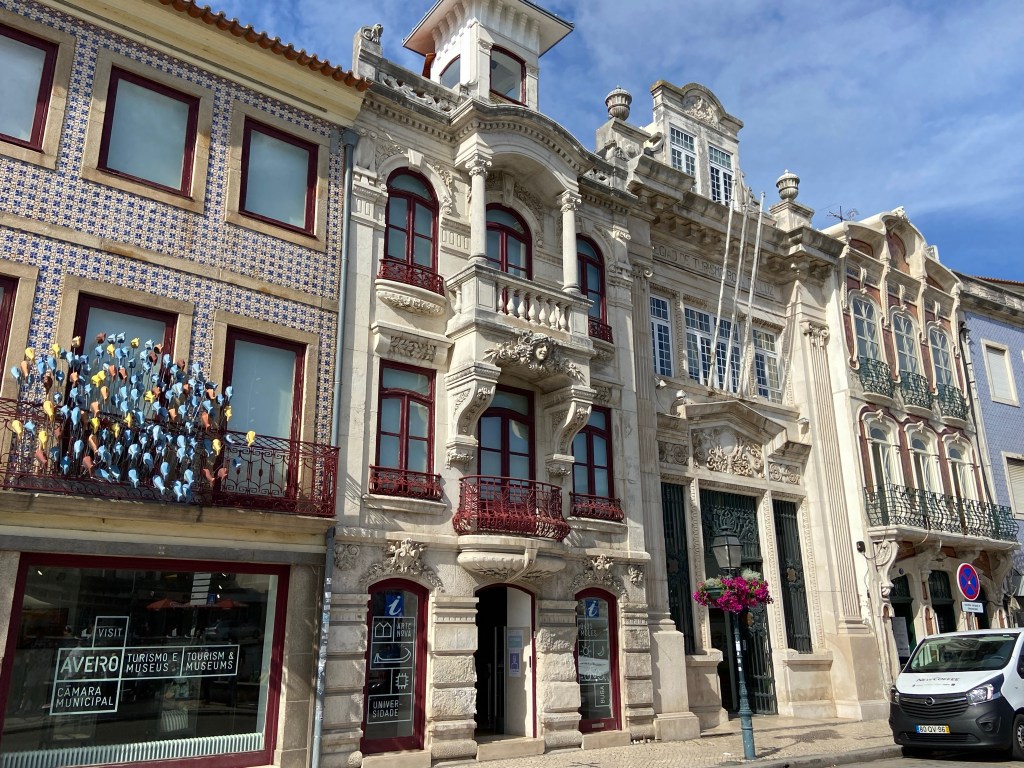
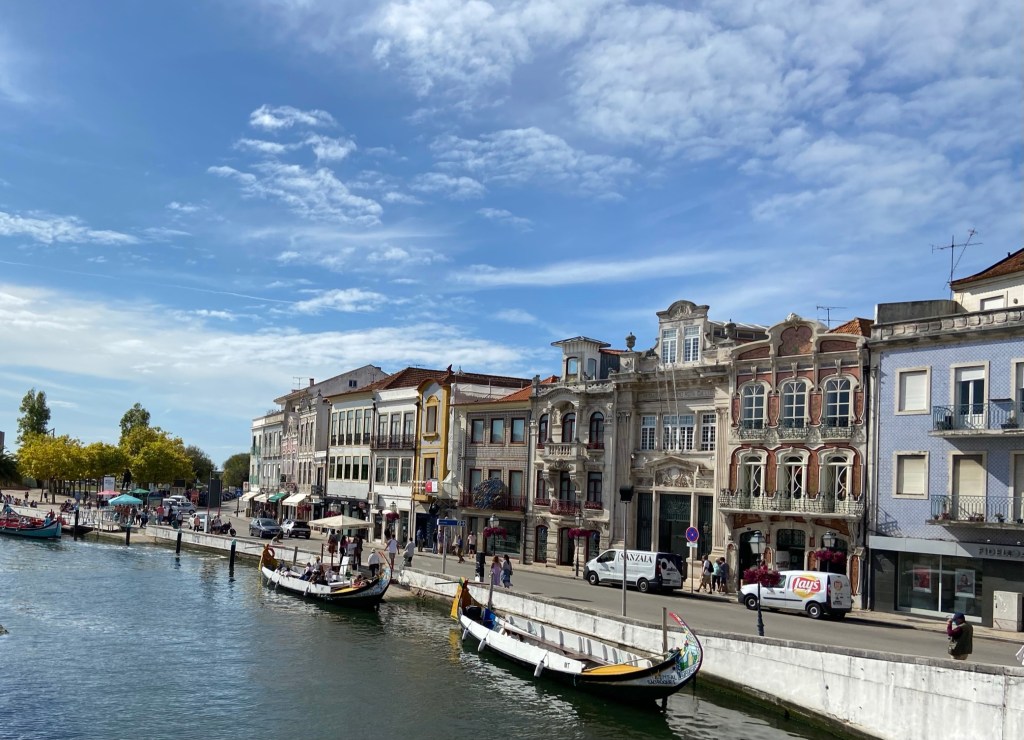
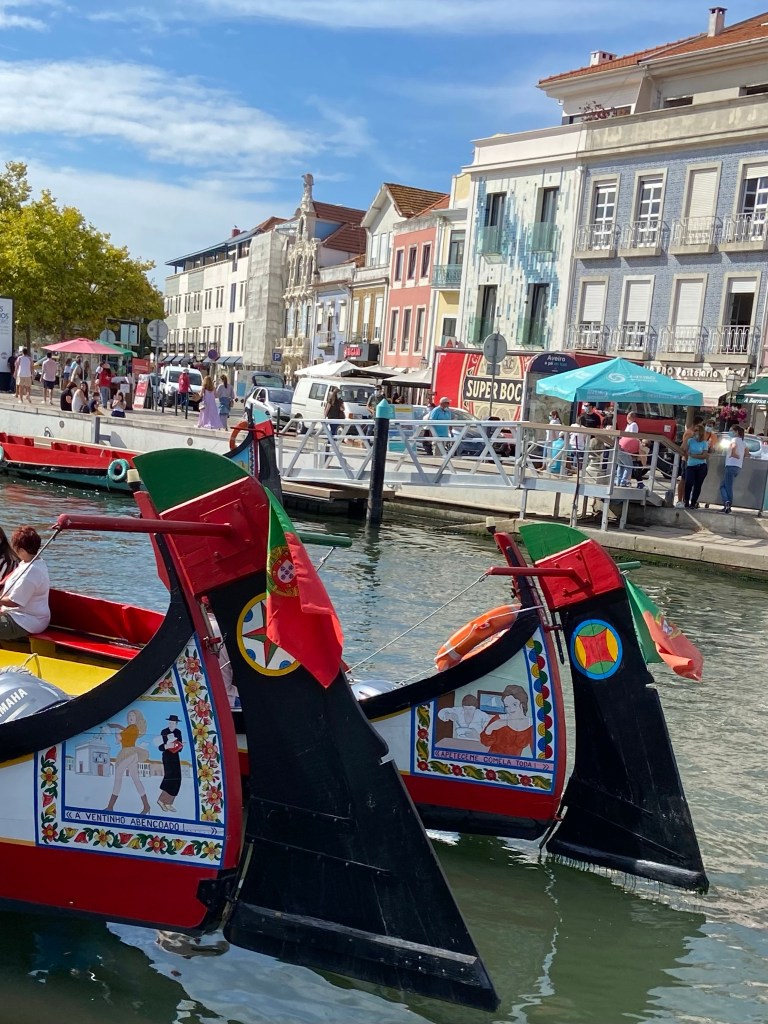
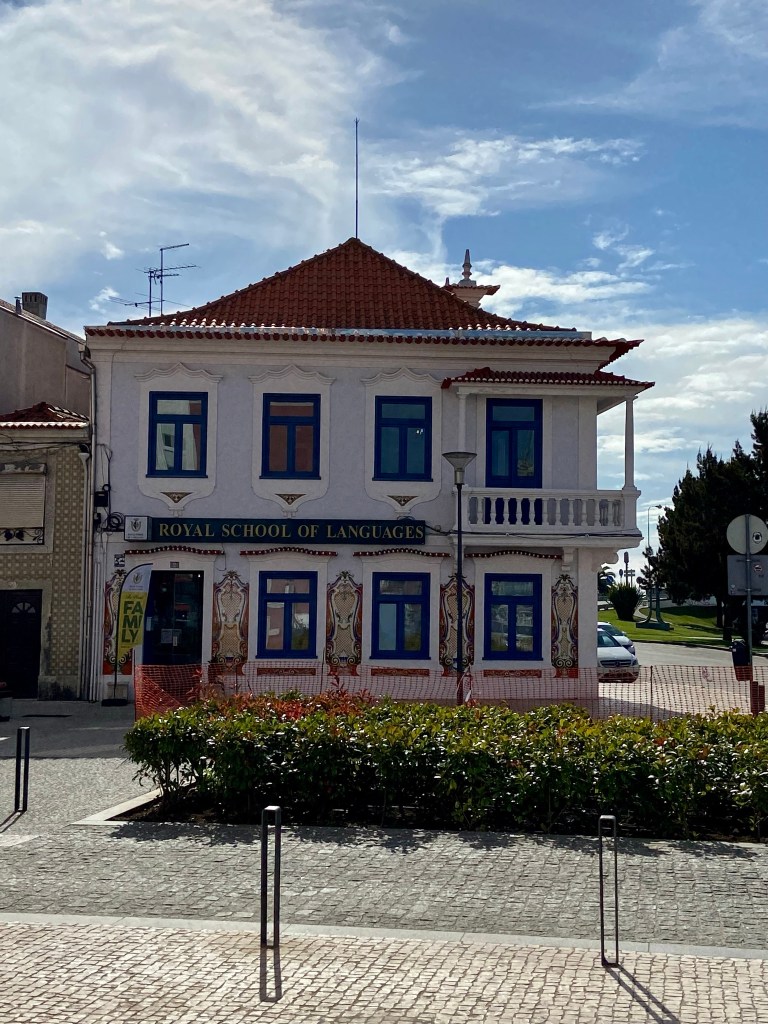
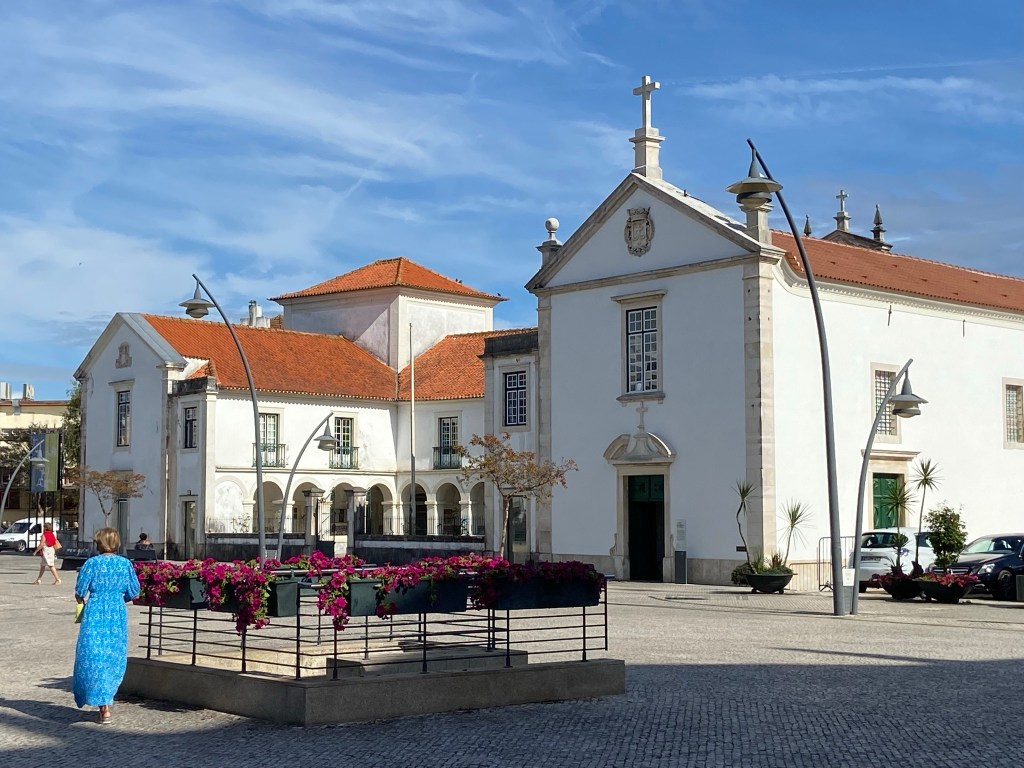
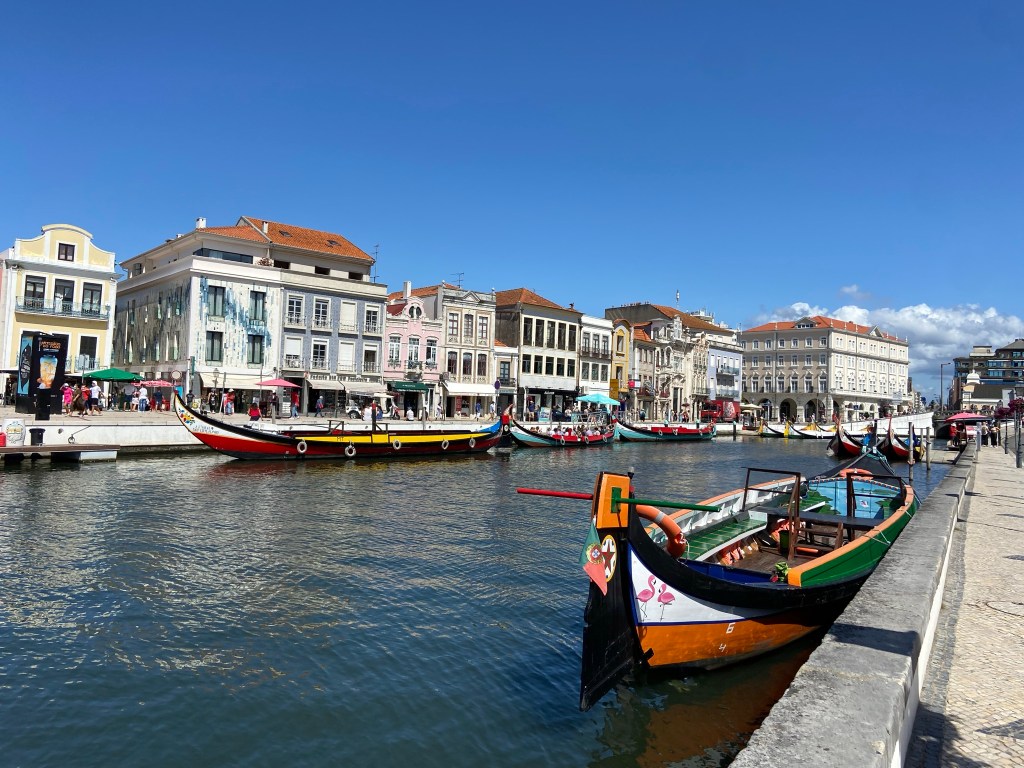



After a few hours wandering around Aveiro, we continued our drive to Coimbra where we would stay for two nights. Our hotel was located on the hill close to the university, which is the main attraction in town. Driving a car through the back lanes was hair-raising (we came perilously close to driving the car in to a crevasse created by construction), and walking to and from the hotel during our stay provided an excellent work out! If this kind of excitement isn’t for you, consider staying in the lower town.
We spent the bulk of our two days walking up and down the Rua Ferreira Borges, splitting off frequently to explore the smaller lanes. It was in Coimbra we first witnessed the extravagent tinned food shops, particularly Comur. I promise you have never seen canned food in a fancier setting. The Rua Ferreria is bookended by the Monumento a Joaquim Antonio de Aguiar on one end, and the Praca 8 de Maio at the other. The Praca is also the home of the Santa Cruz Monastery, which looms majestically over the square. The nearby rua de Sarg Mor is another good street for people watching, shopping, and café hopping, and is home to the 12th century church of Sao Tiago.
Our second day in Coimbra was spent exploring the university grounds and the waterfront. The university is one of the oldest in the world (and is THE oldest in Portugal), and has been located at its current place in Coimbra since 1537. The university buildings are absolutely stunning, and from the courtyard of the Palacio Real, you can get a fabulous view of the river and city below. On the banks of the rio Mondego, within the Parque da Cidade Manuel Braga, you will have lots of options for food or just enjoy a relaxing drink.
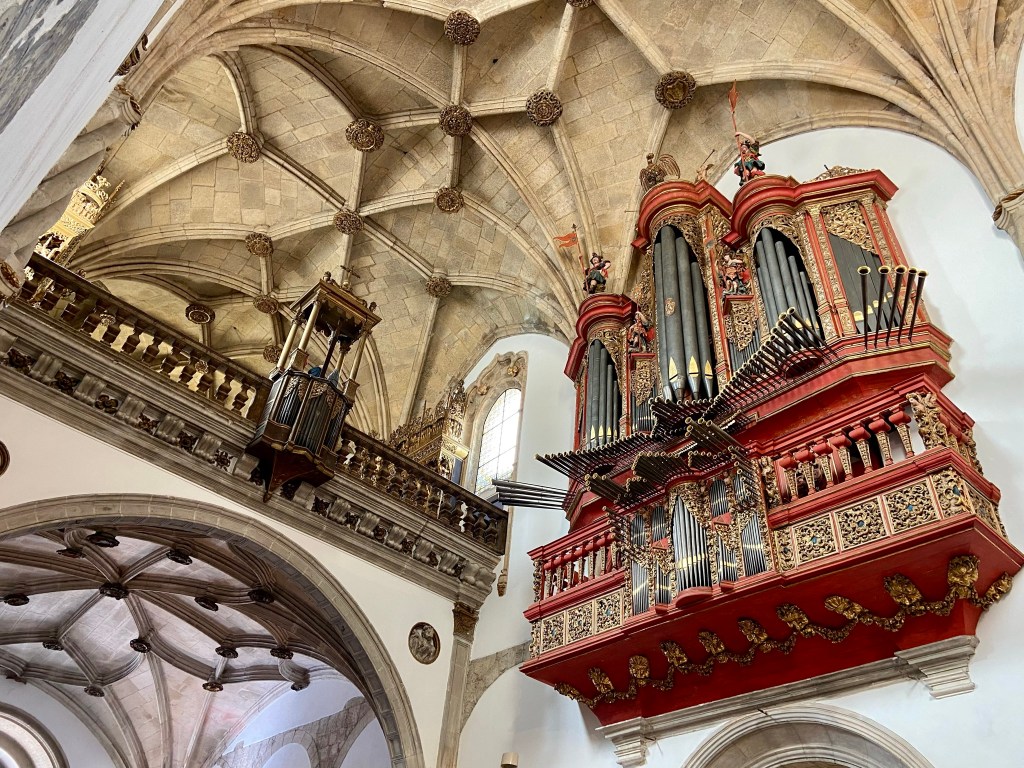




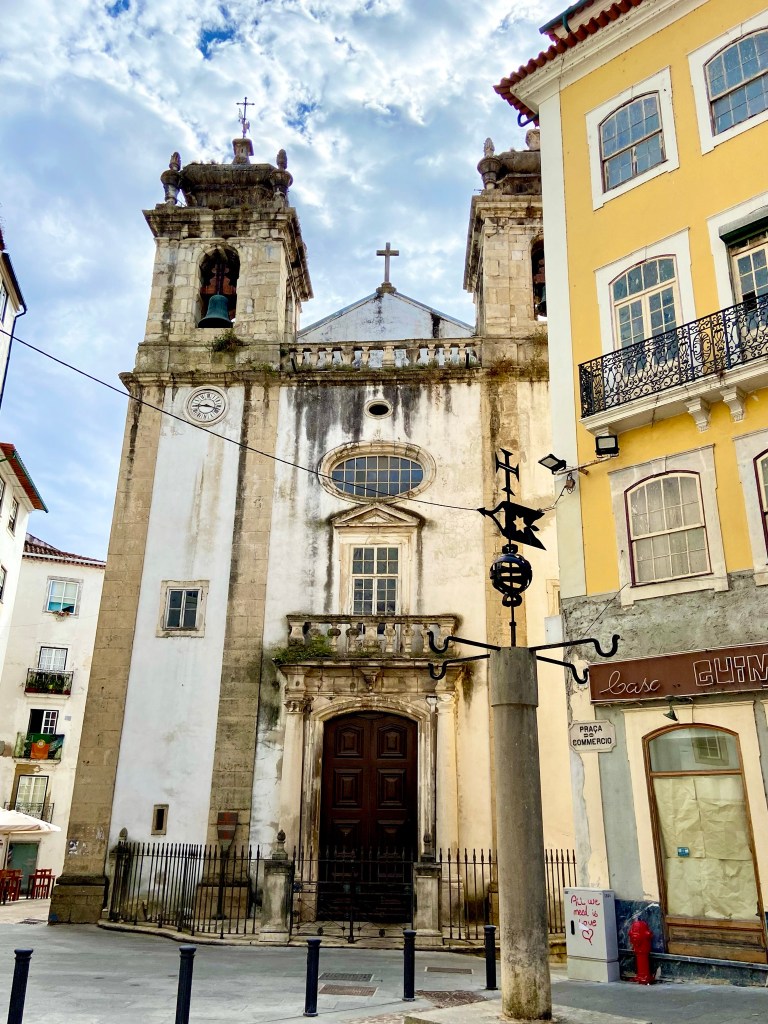


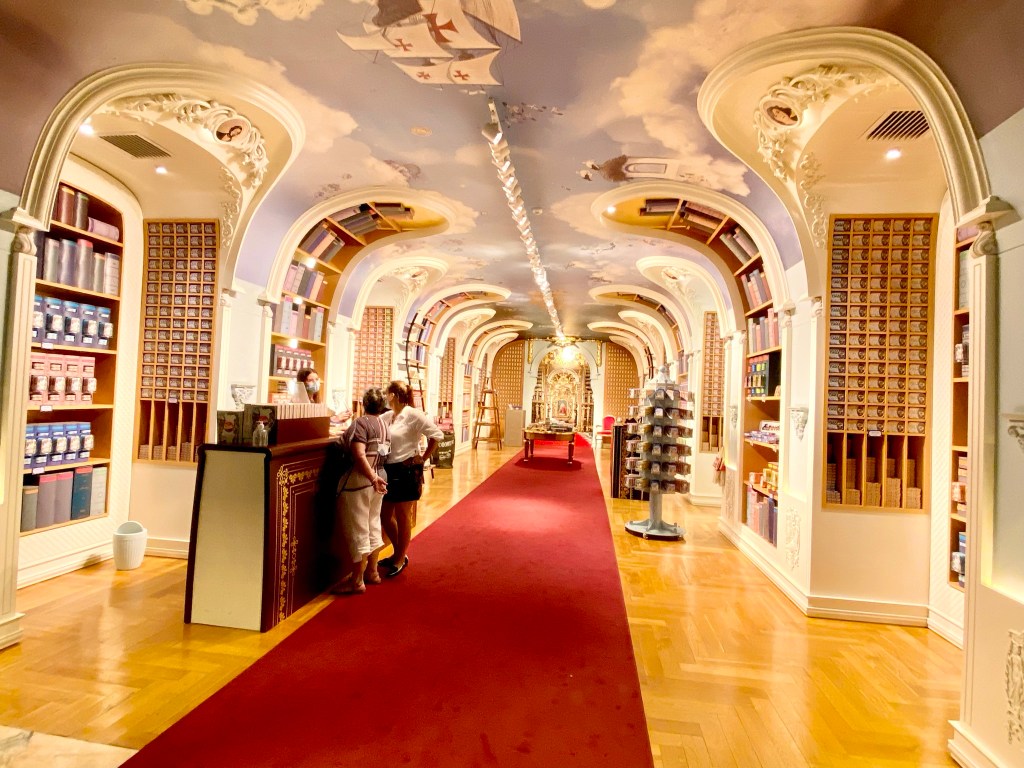
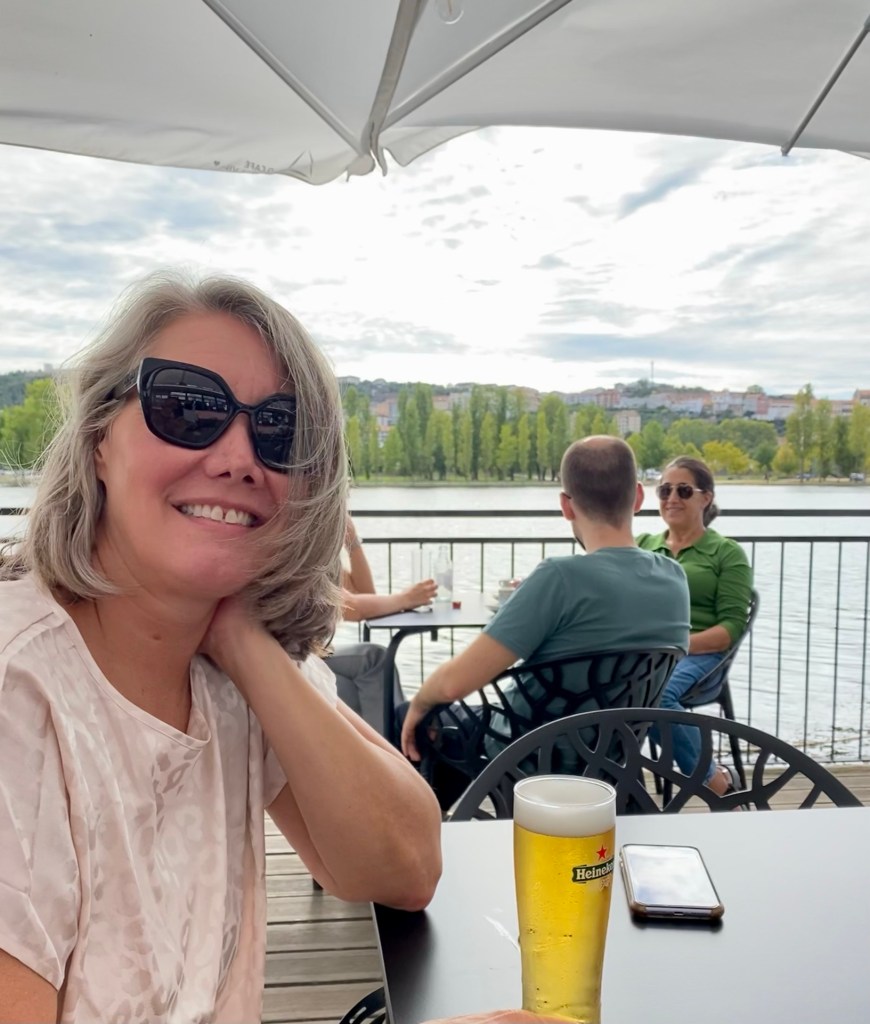

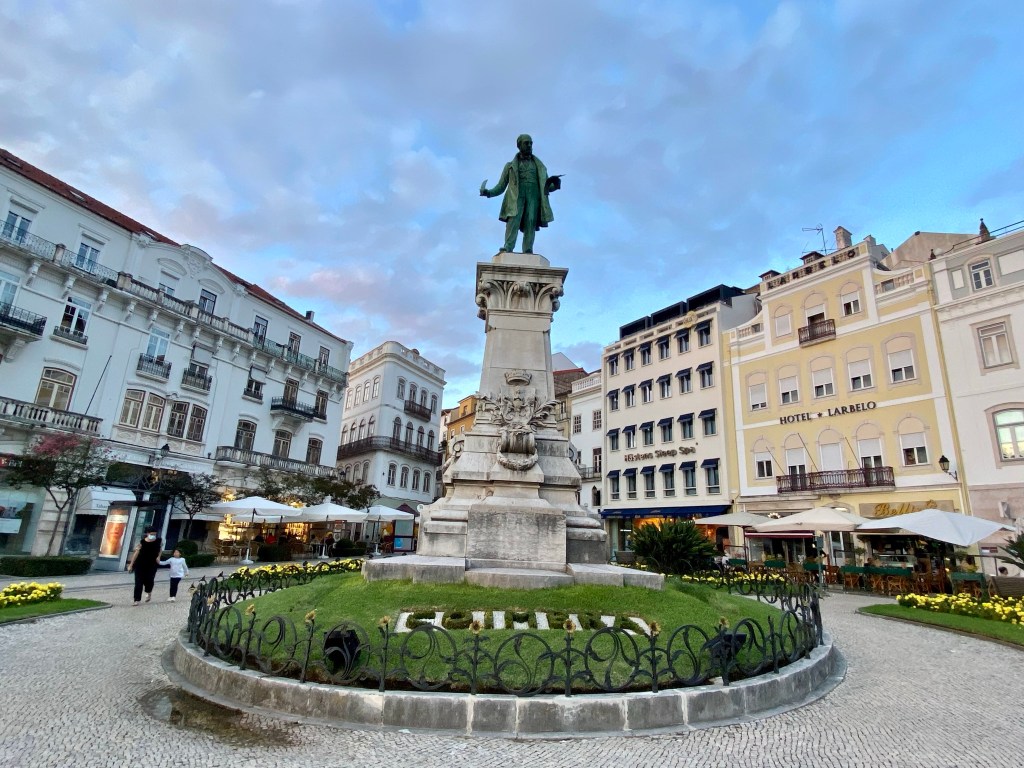
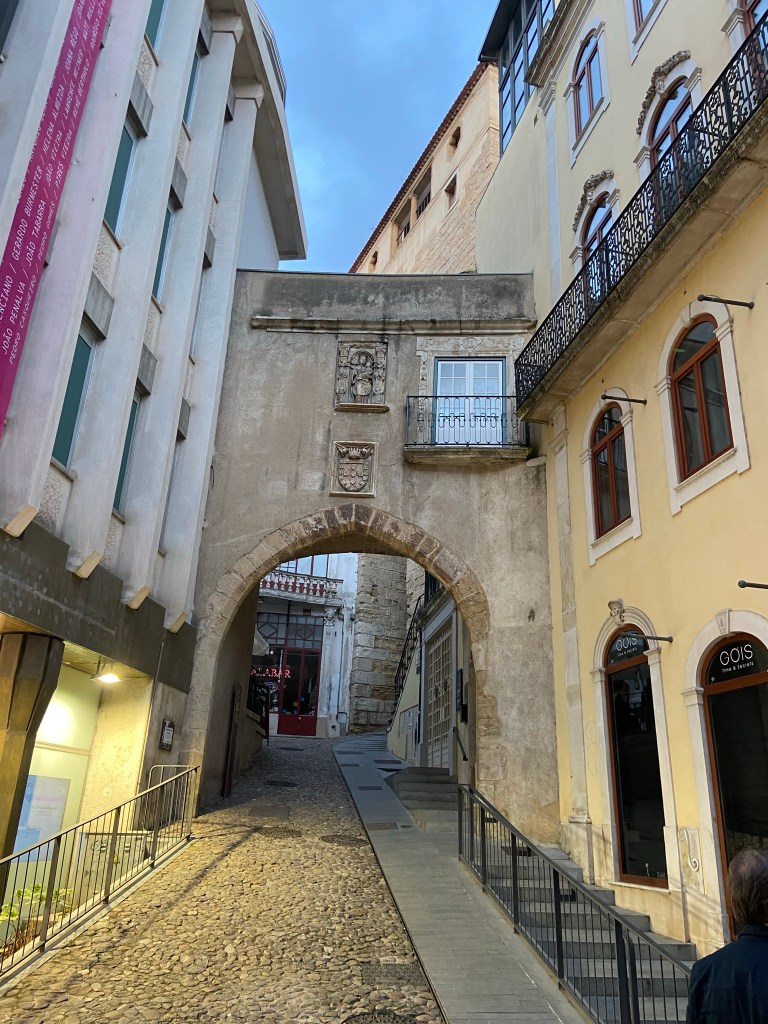
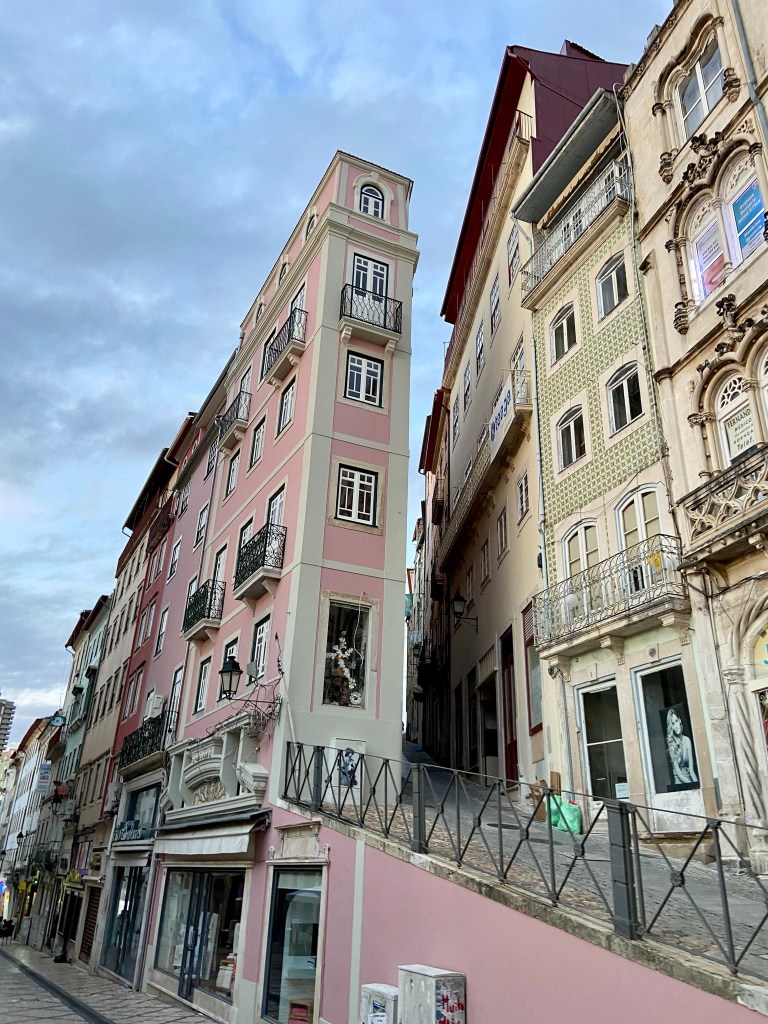

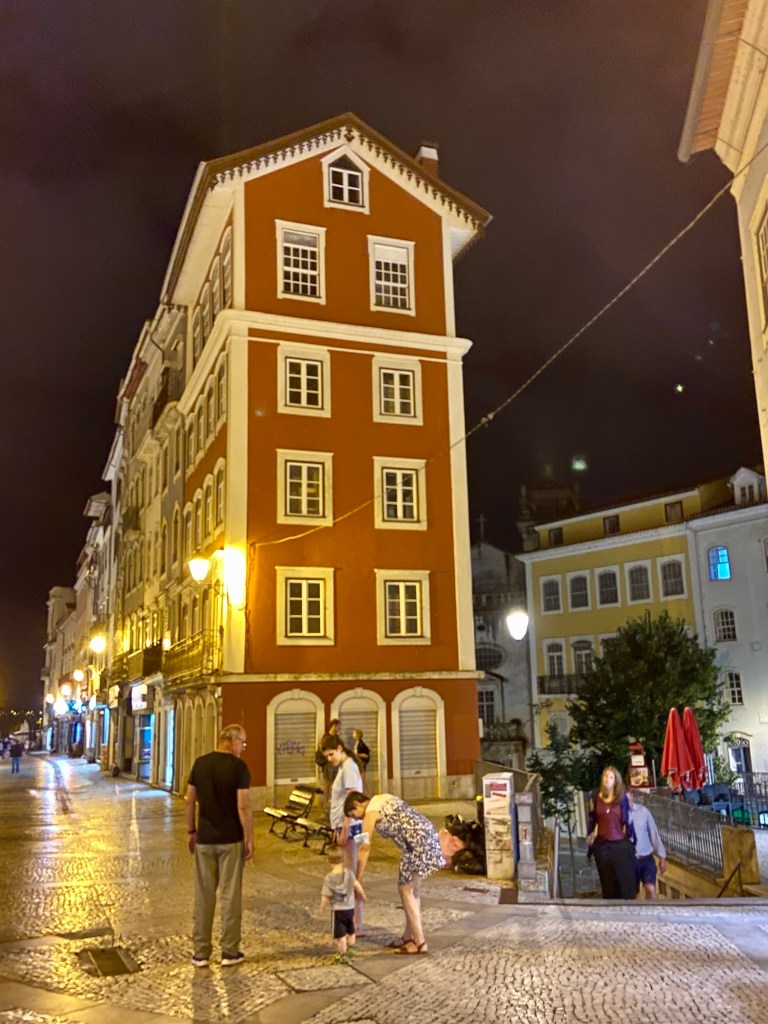
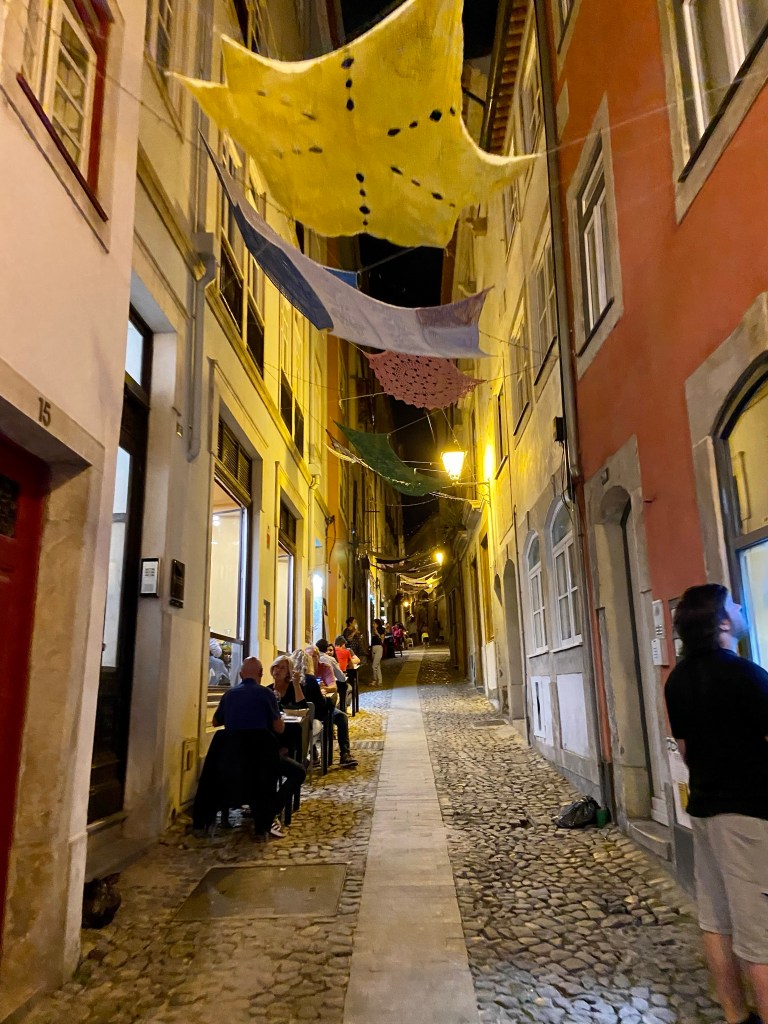

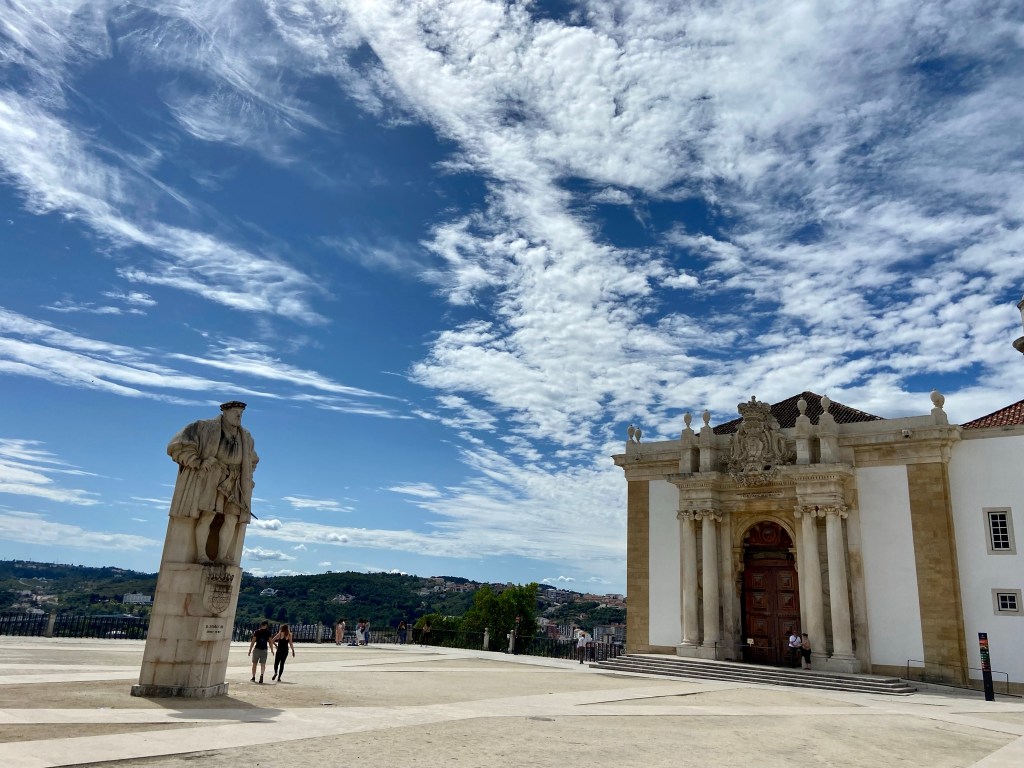
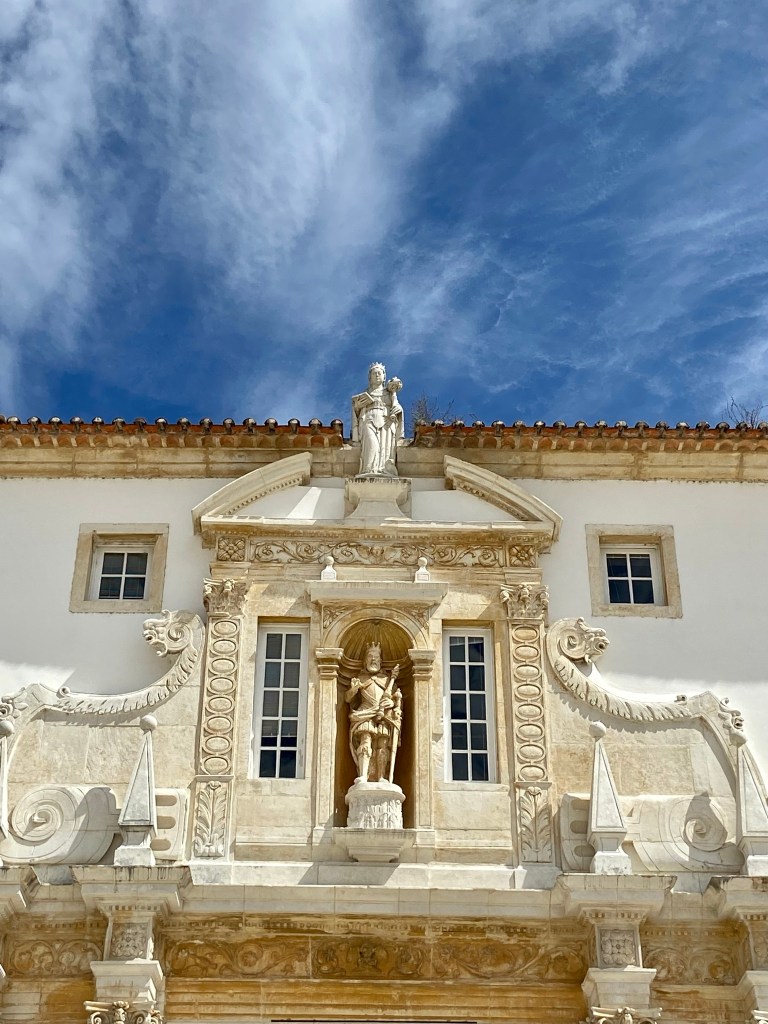
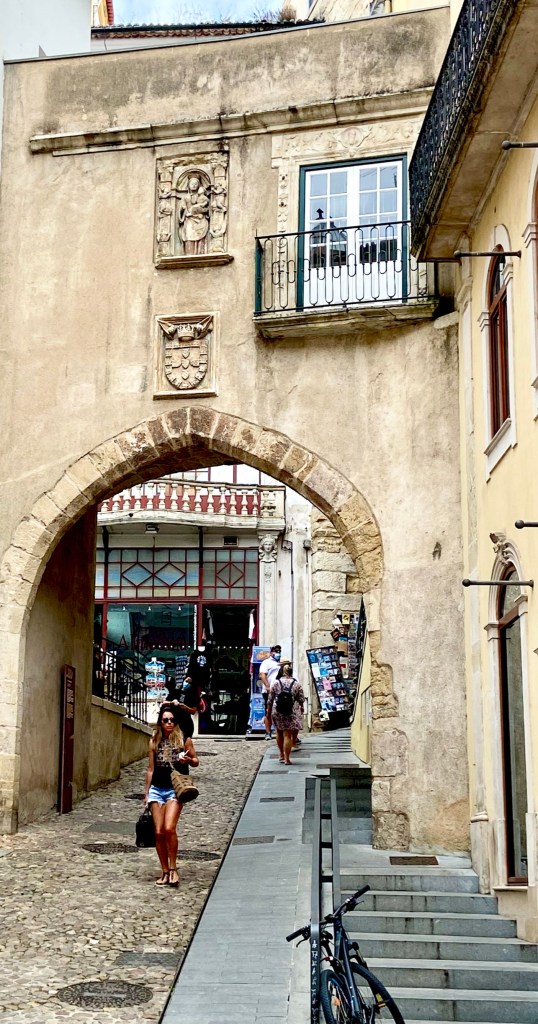
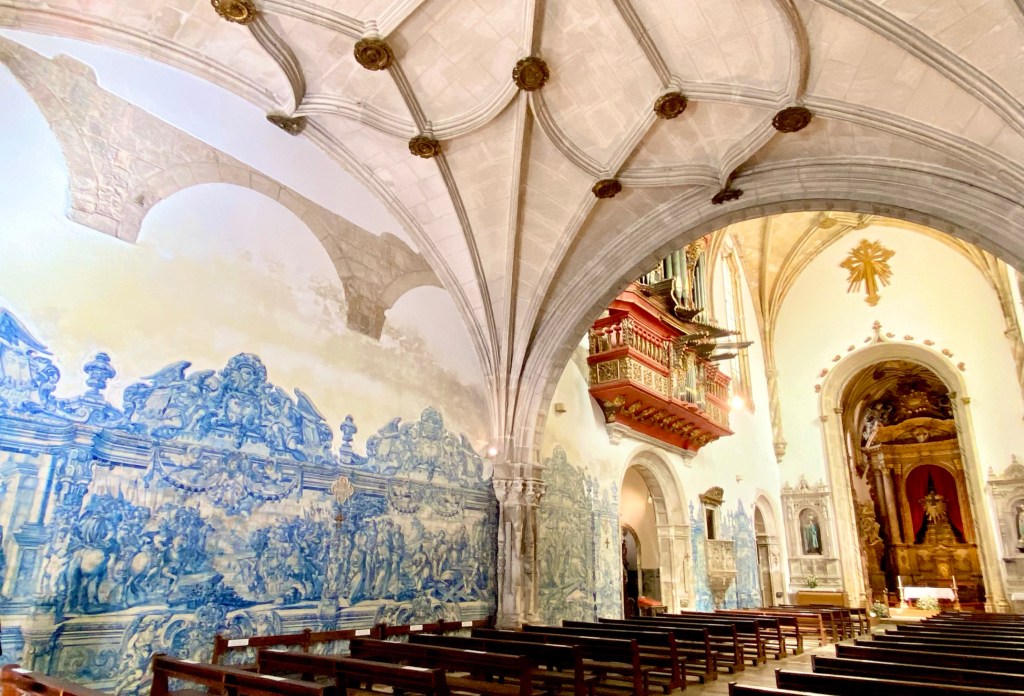
Our next stop was in Cascais, which is approximately 2.5 hour drive from Coimbra. We did a day trip to Cascais and Sintra back in 2017, and it made such an impression that Dave picked it as his birthday destination. Cascais is another small town that is really perfect for a day trip or a weekend stay. Since it was Dave’s birthday, we splurged on a stay at the Hotel Albatroz. Our beautiful room overlooked the pool and the beach, and we enjoyed two meals at the hotel restaurant. As usual for us, most of our visit was spent crawling the cafes, but if you want a more immersive experience, visitors have options. In addition to the beaches, there is a casino, a fort, a TON of museums, and the Pena Palace is a short drive. Lisbon is just 30 minutes by train. One of our favorite things about Portugal is the intricate black and white patterned walkways (called calçada portuguesa). Cascais has an abundance of these, so be on the lookout for them as you explore.
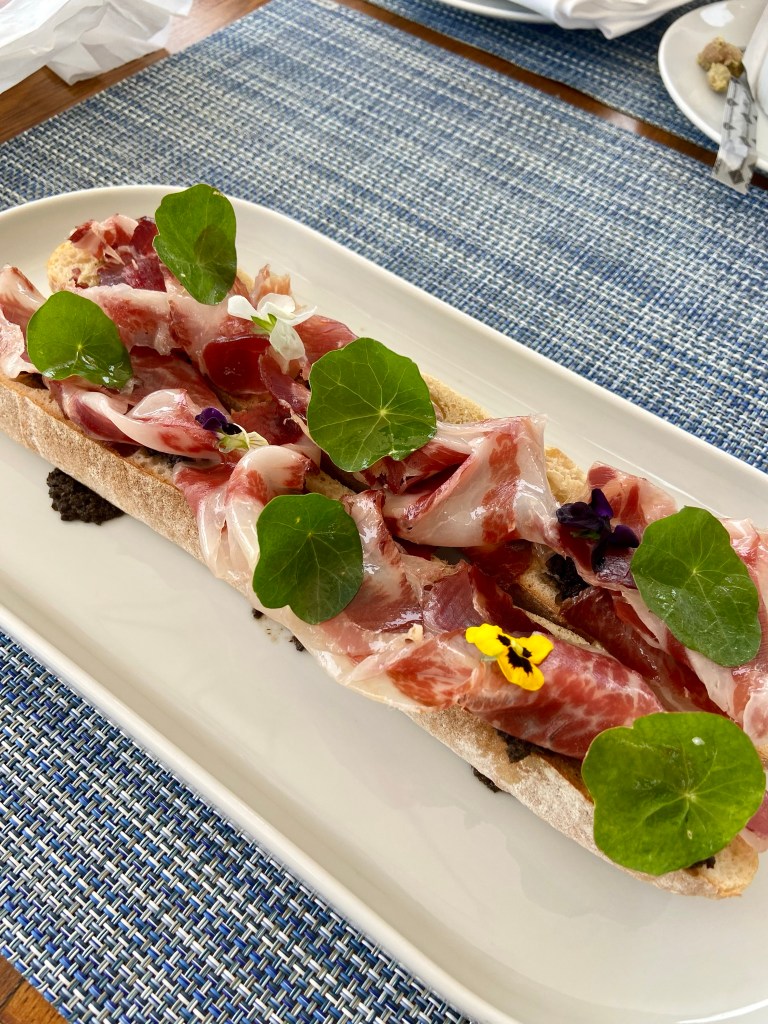

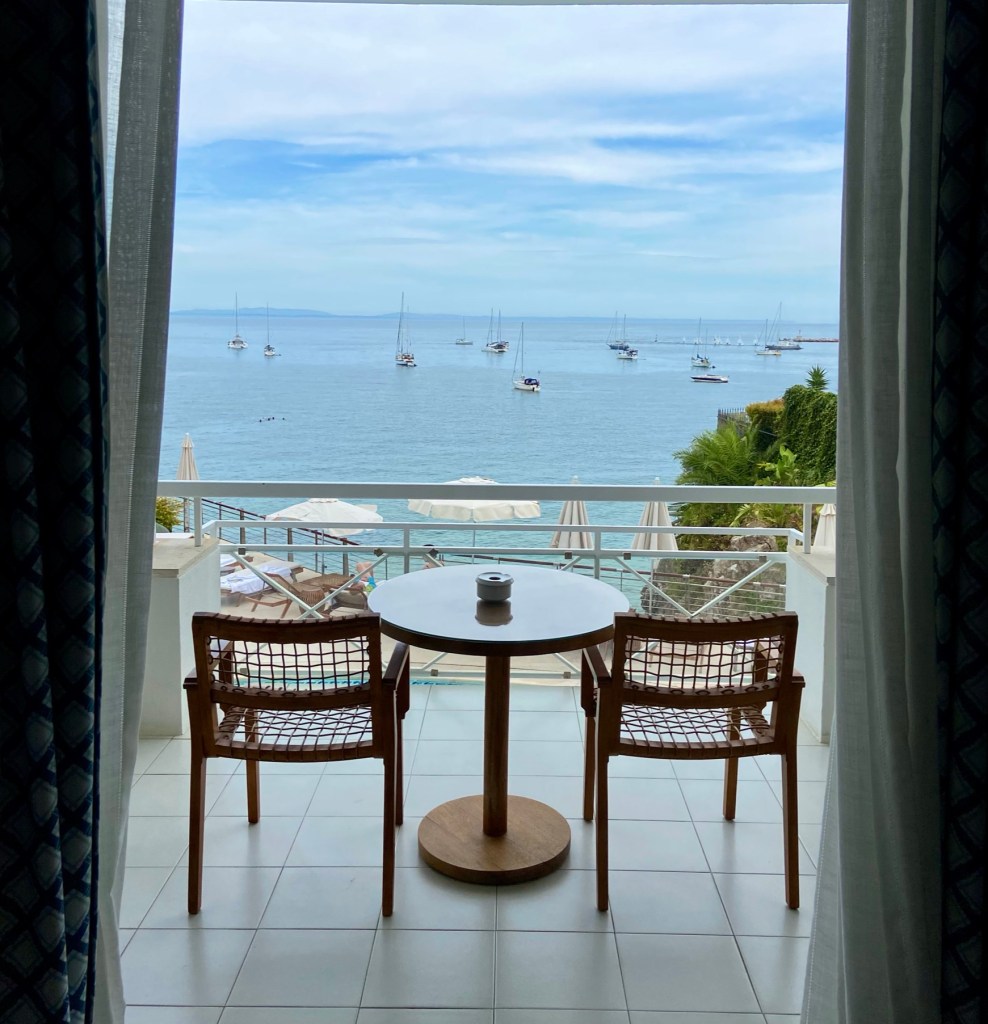

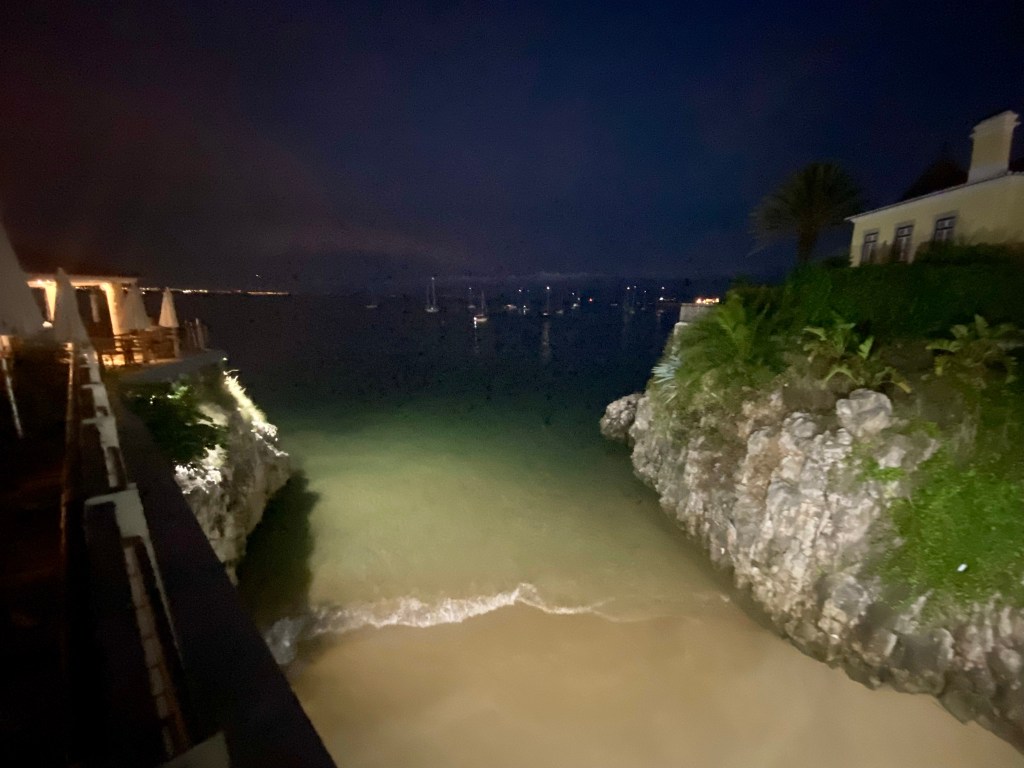
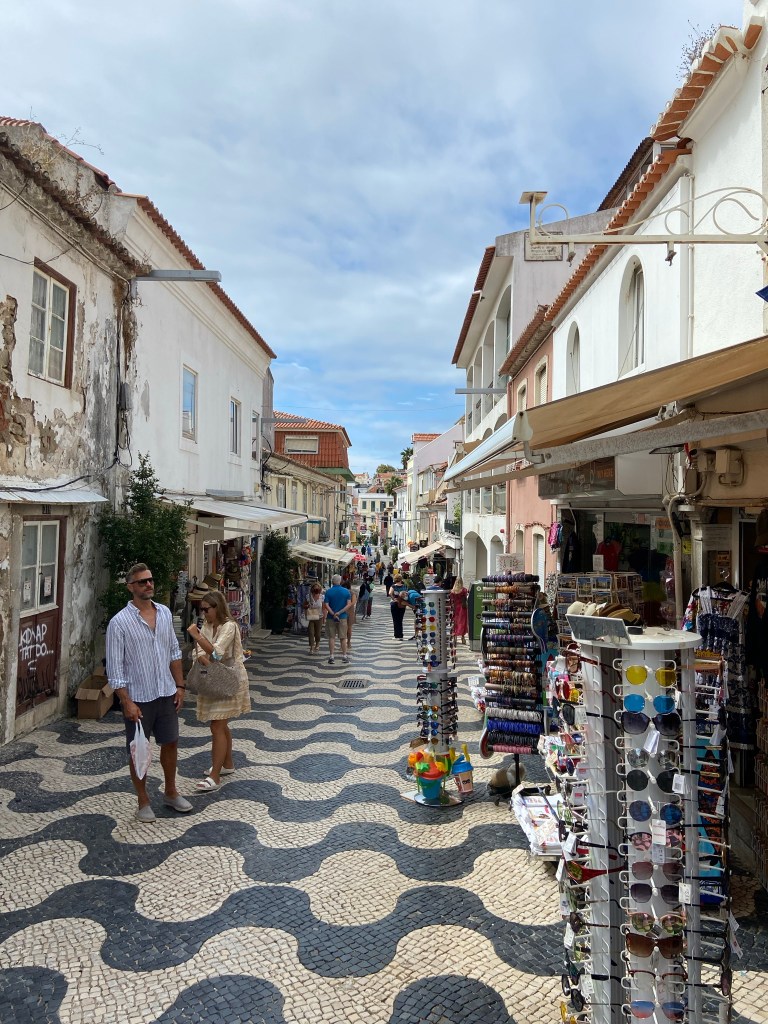
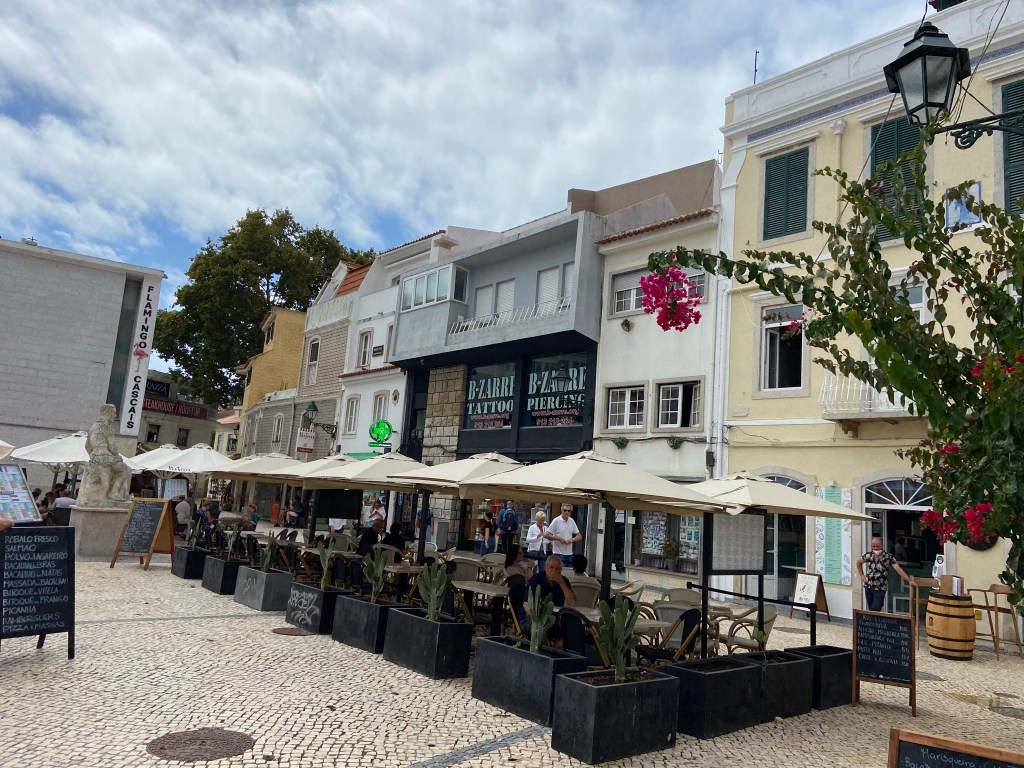
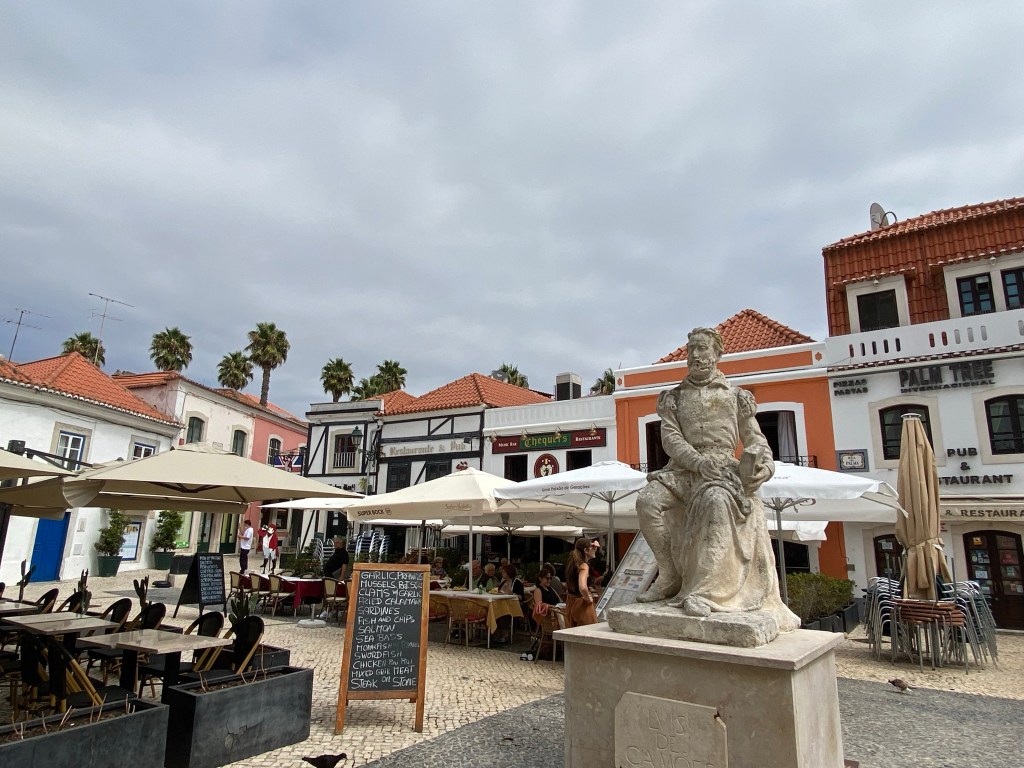

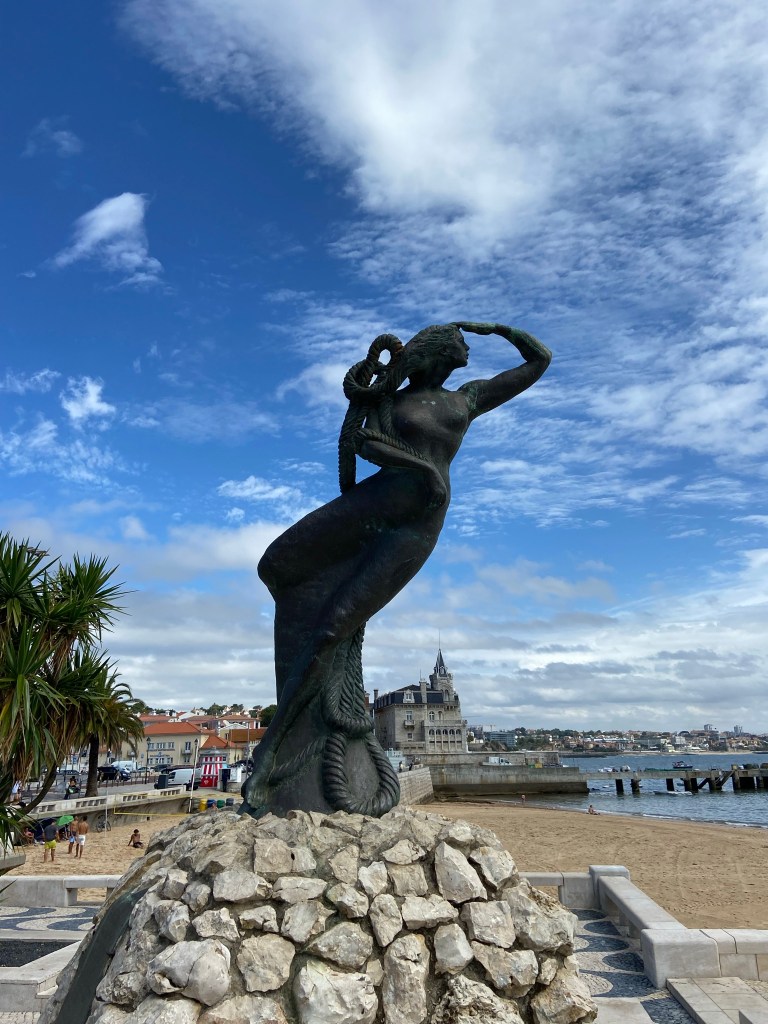
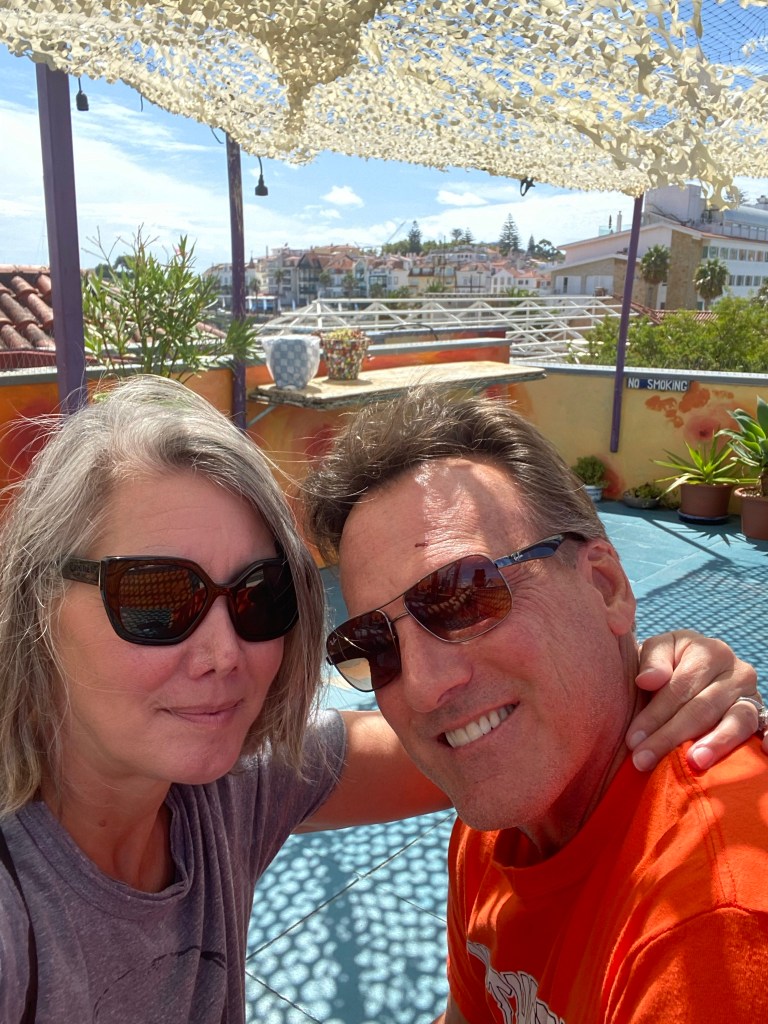

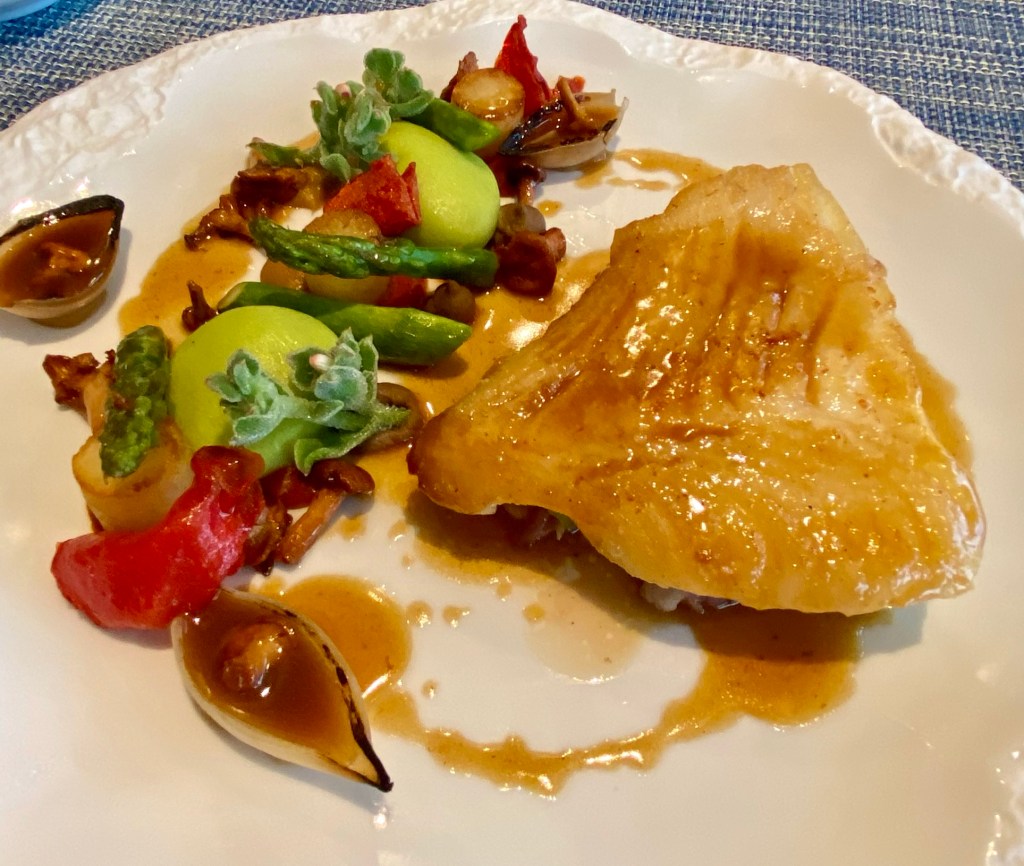
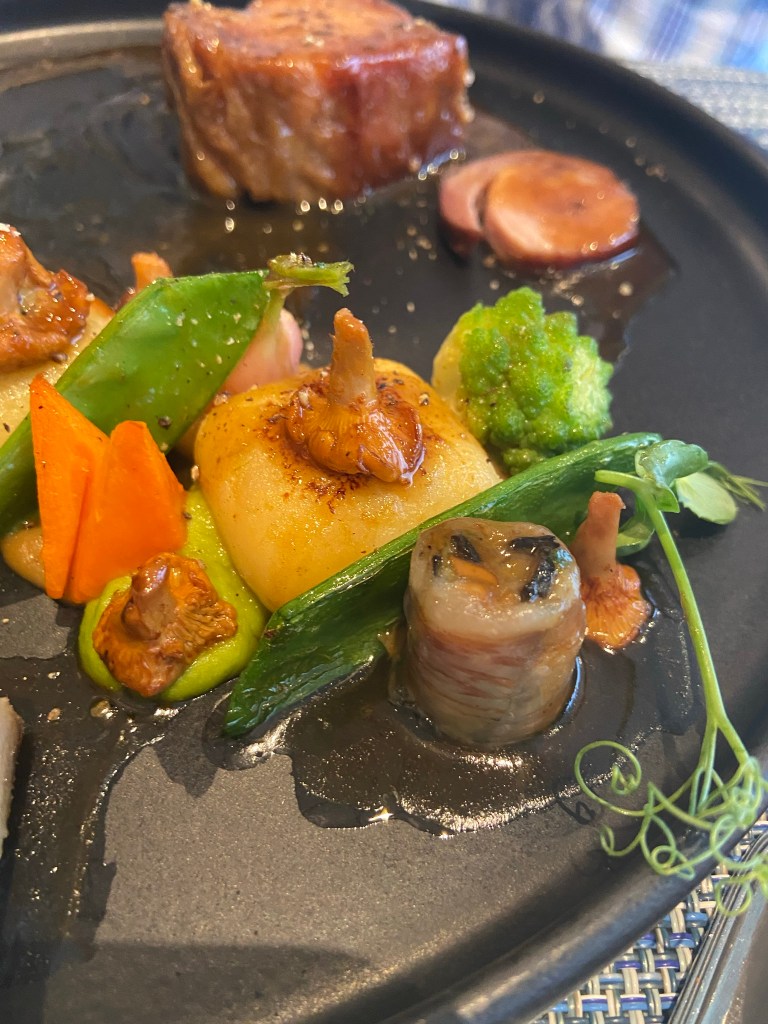
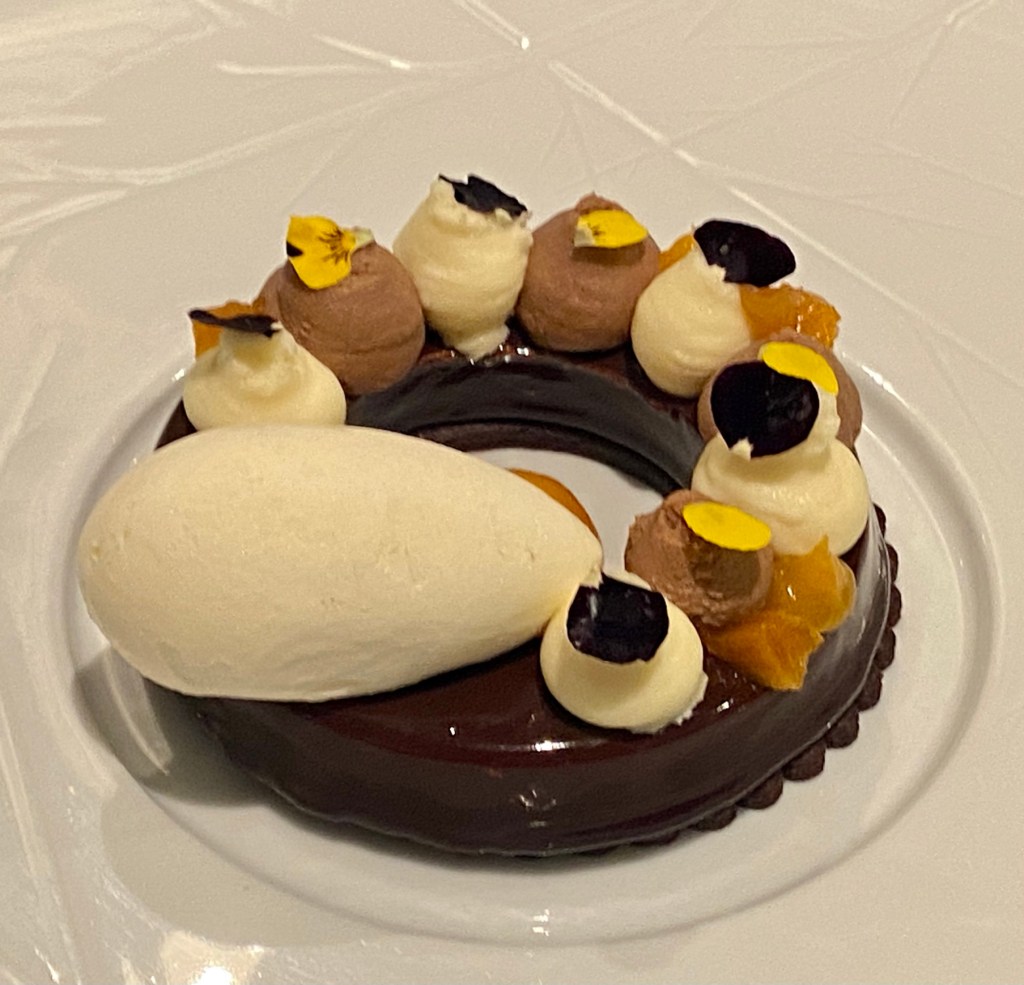


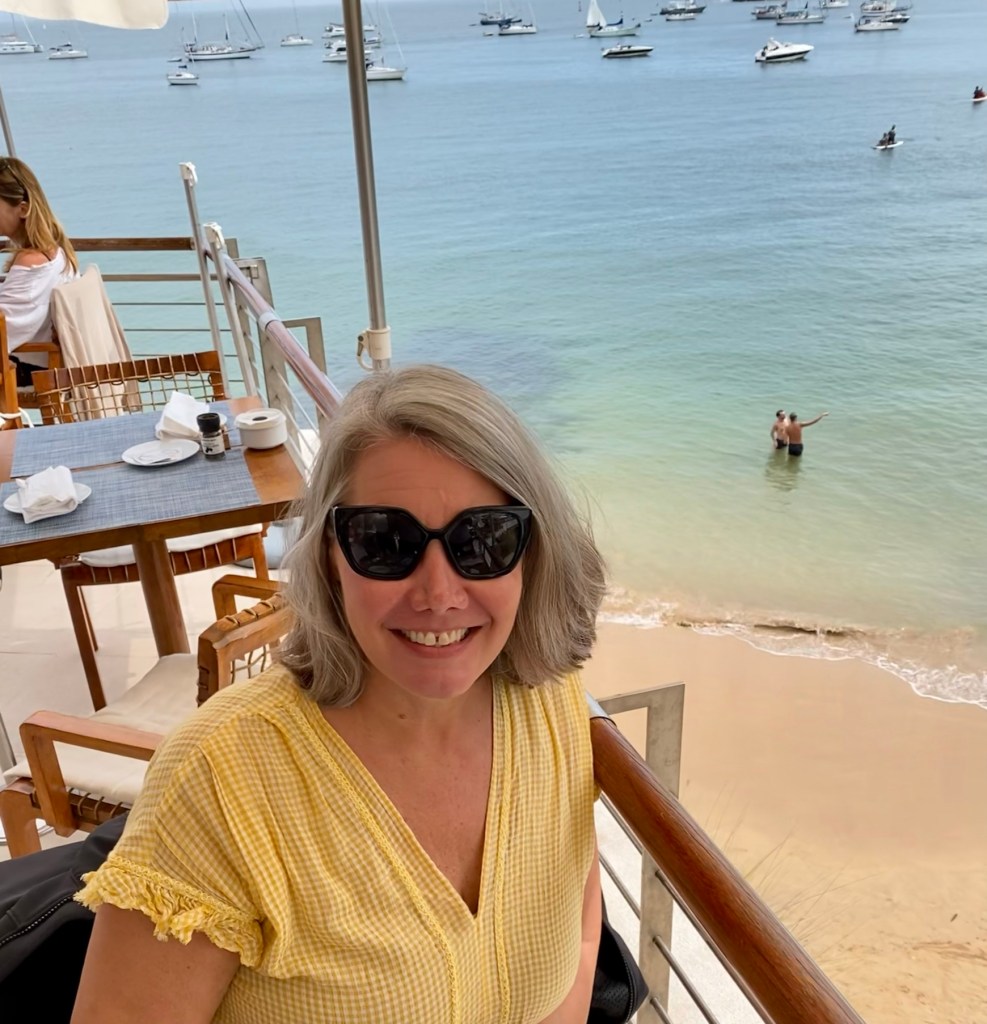
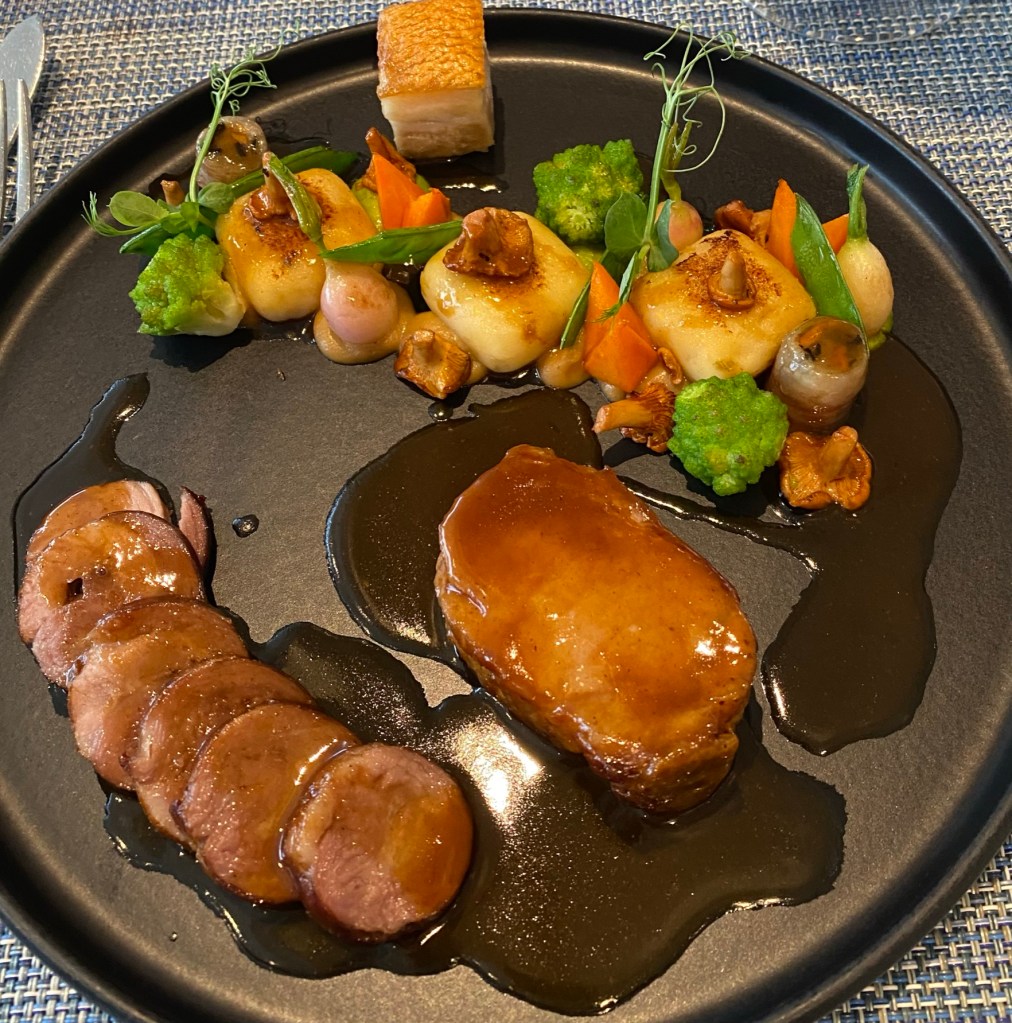
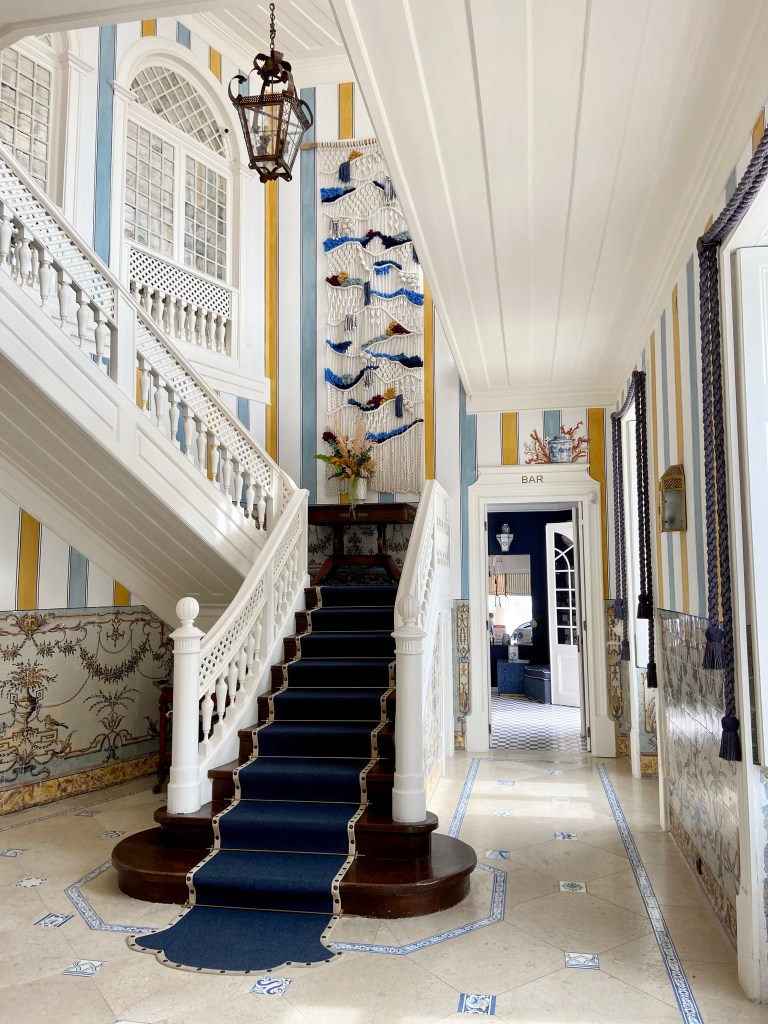
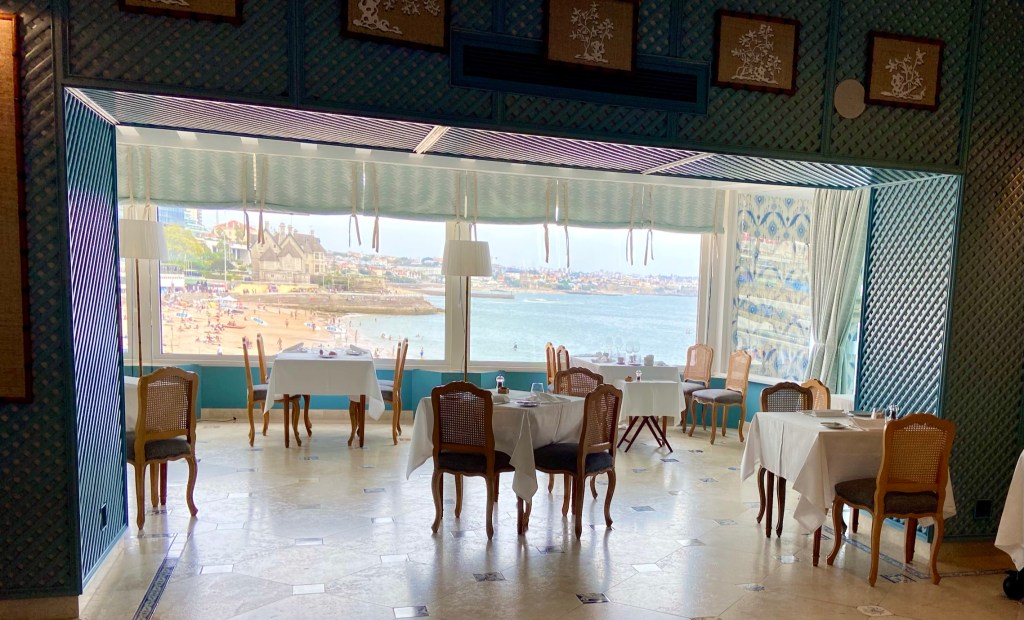
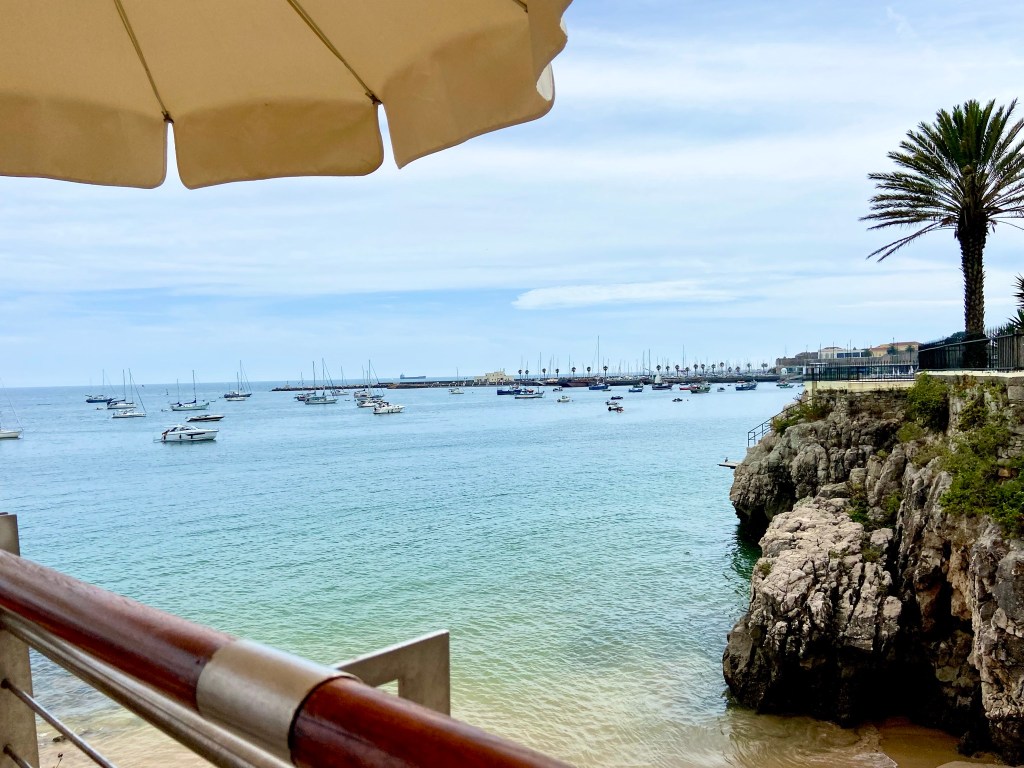

After two relaxing days, we made the long 3-hour drive to Lagos. We checked in to our cute Airbnb for the next five days and dropped the rental car. Having been to Lagos before, we were familiar with the town and anxious to revisit some favorite spots. The star attraction in Lagos is definitely its famous beaches, so you absolutely should plan at least one day on the sand. Lagos also has its fair share of calçada, a swanky yacht marina, lots of unique street art, and endless options for fresh seafood. Cork is a product of the Algarve region, and a good place to shop for souvenirs is along the rua 25 de Abril.
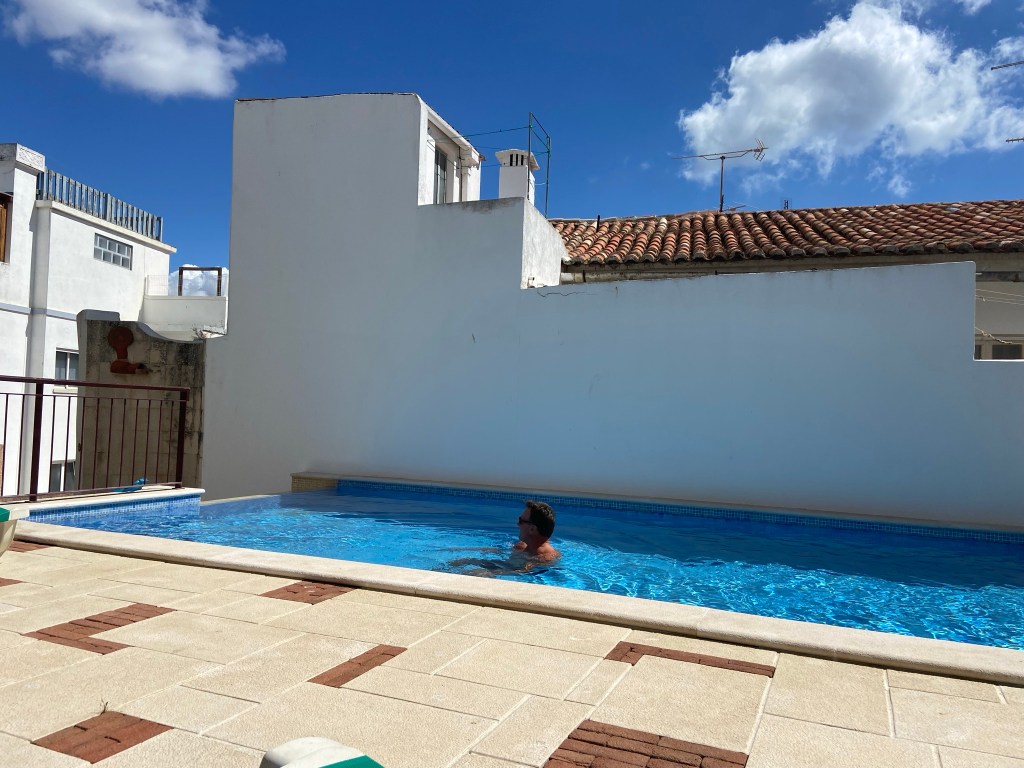
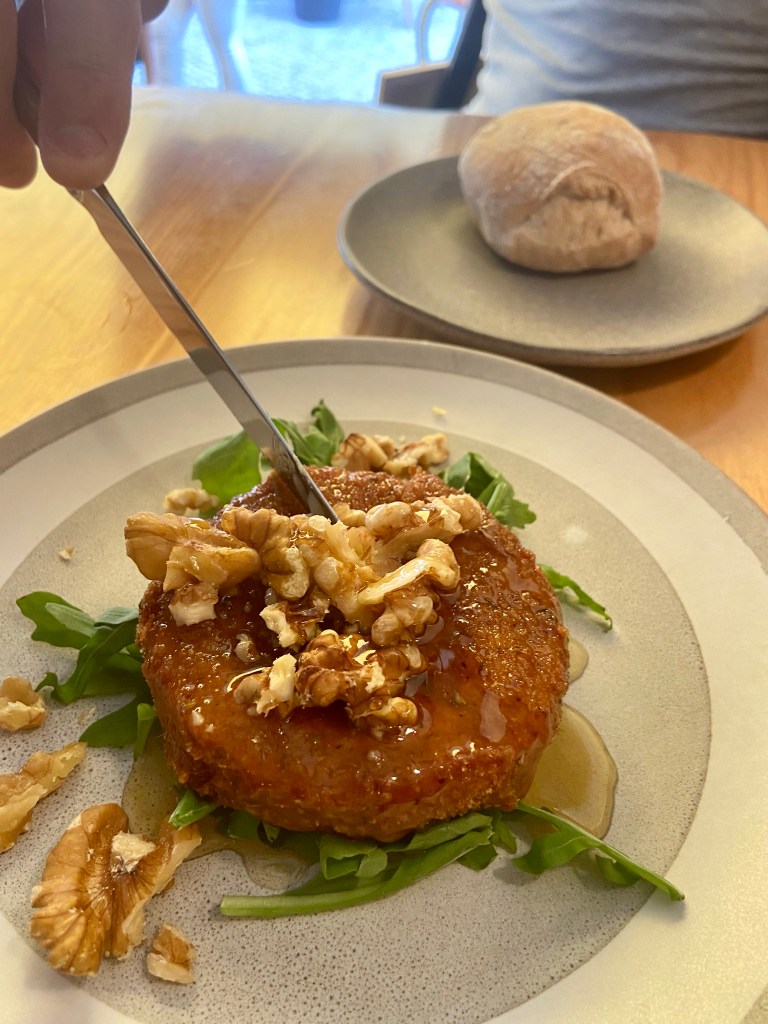
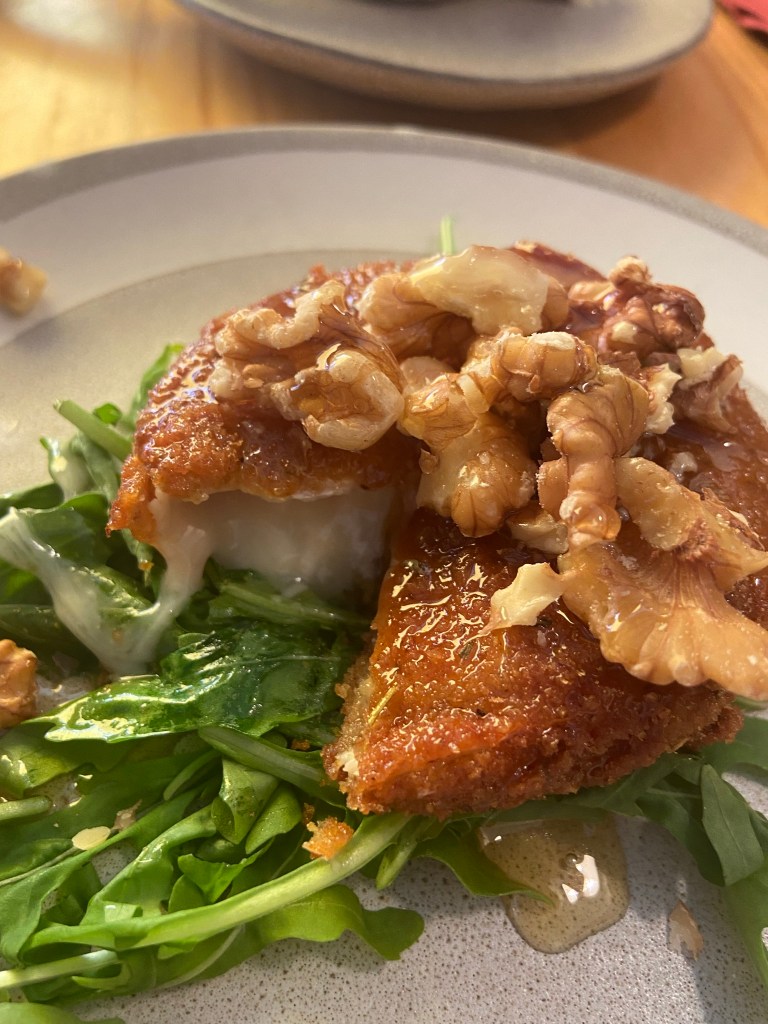
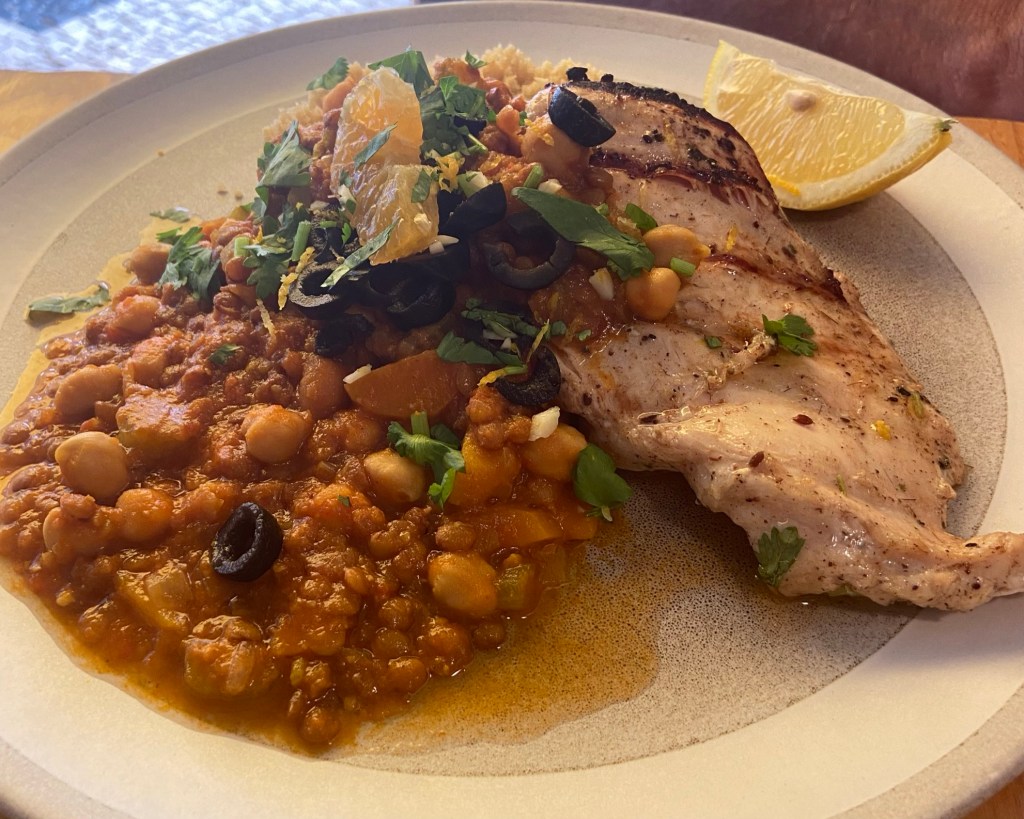

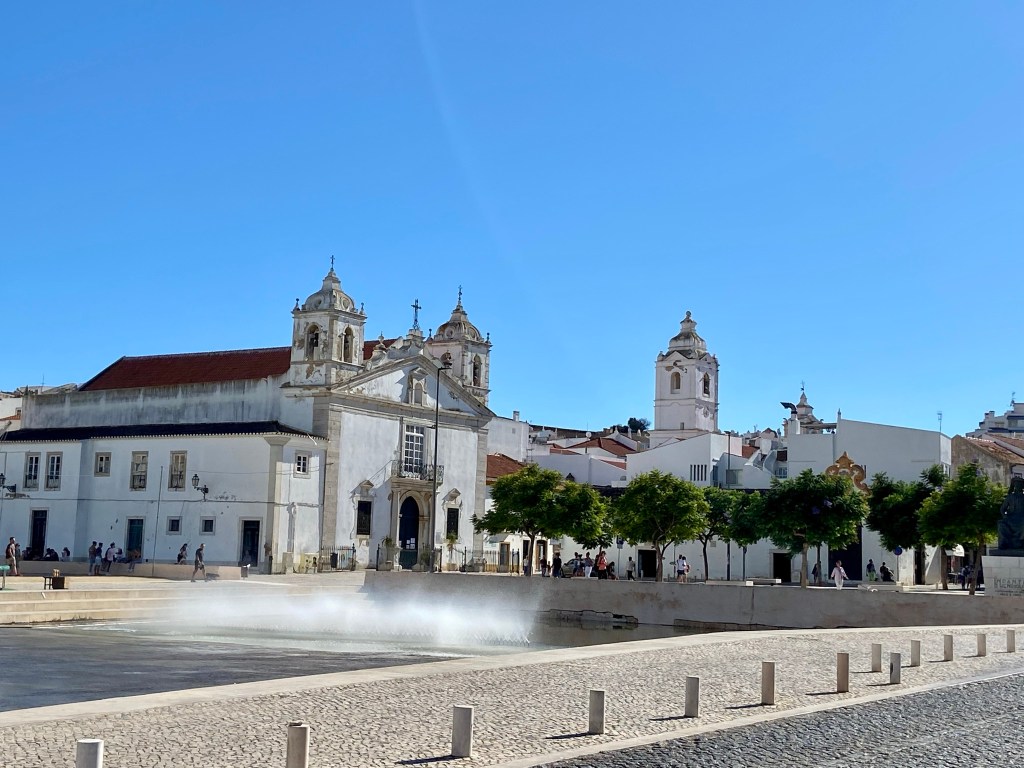





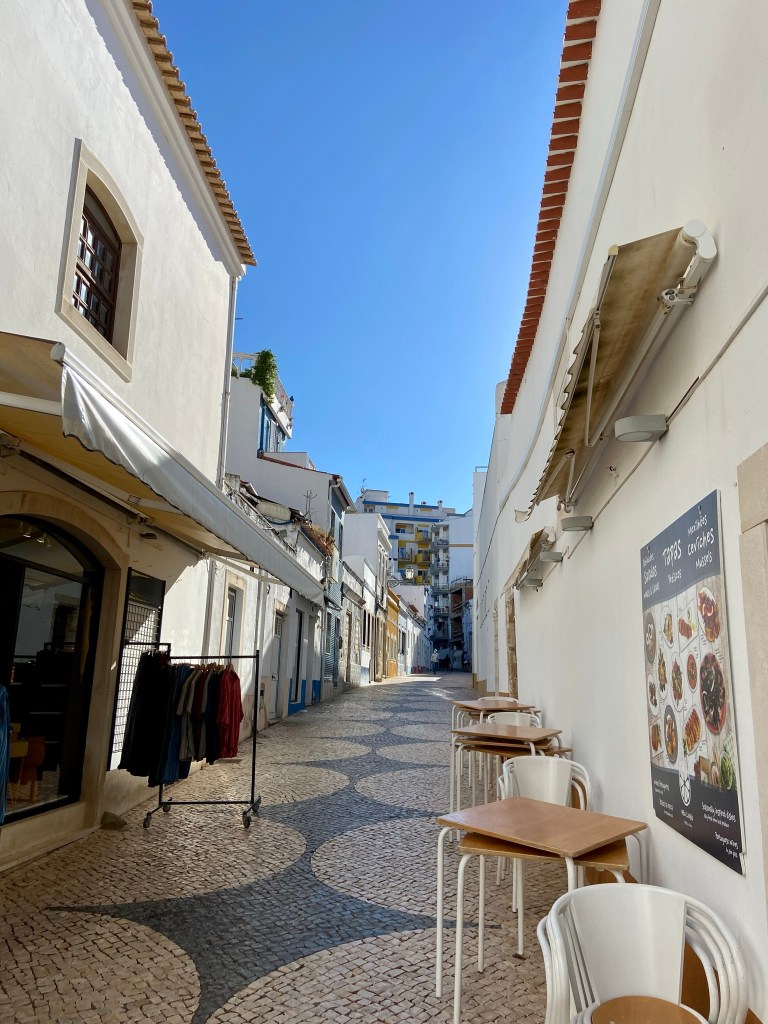
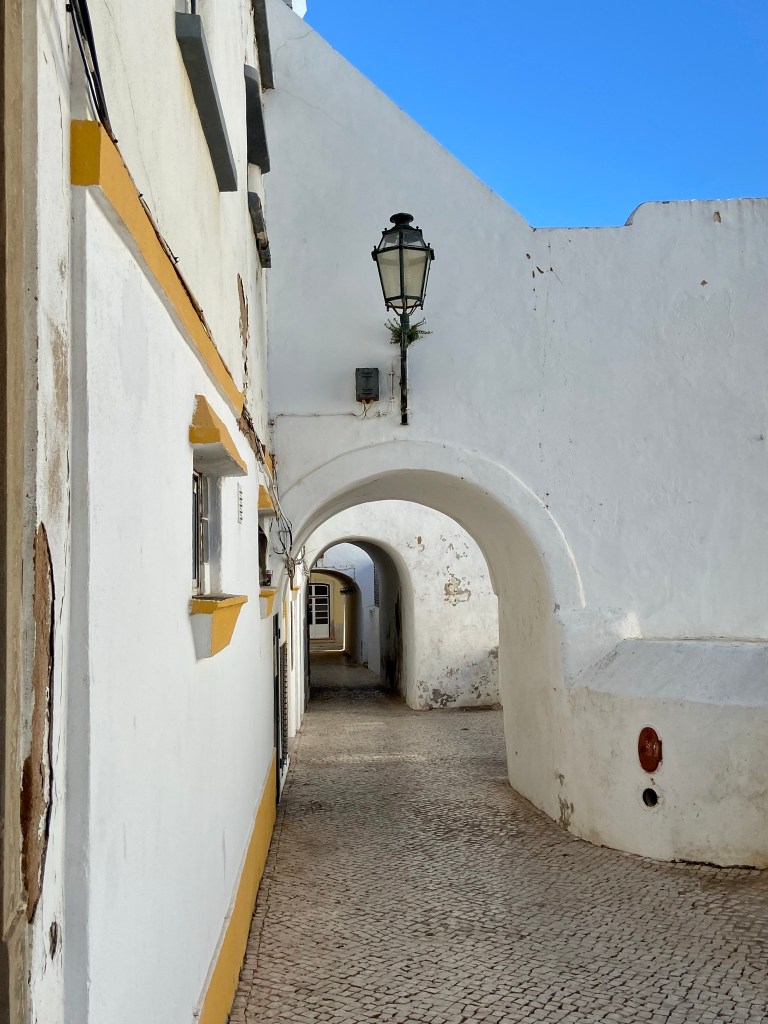
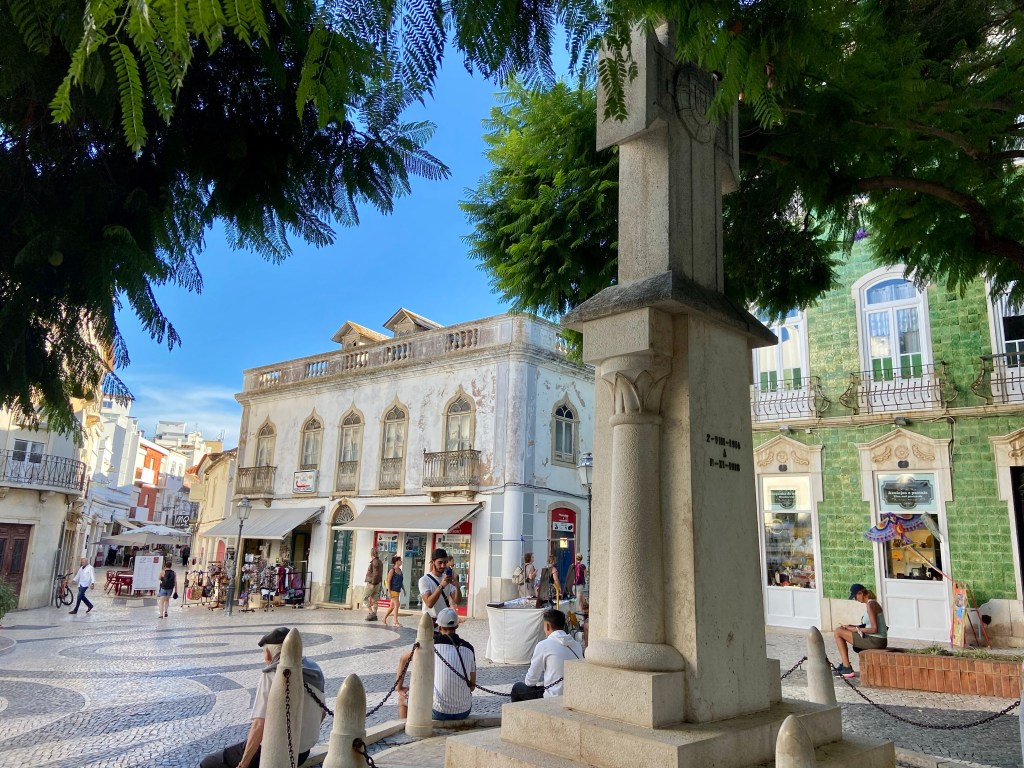
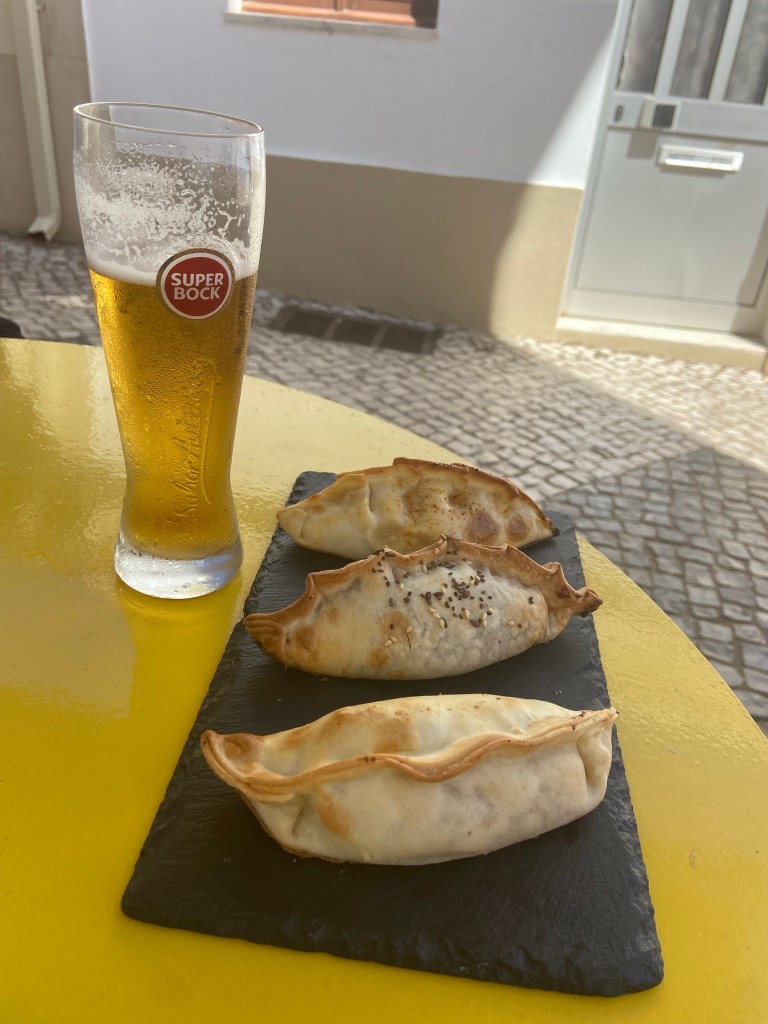

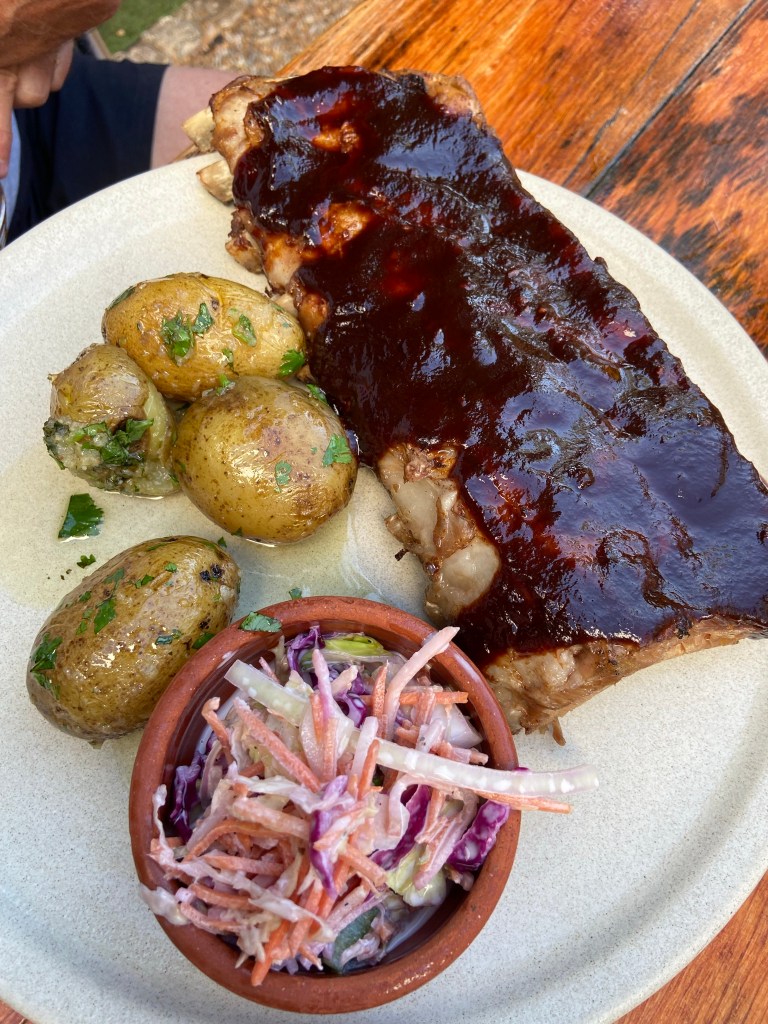

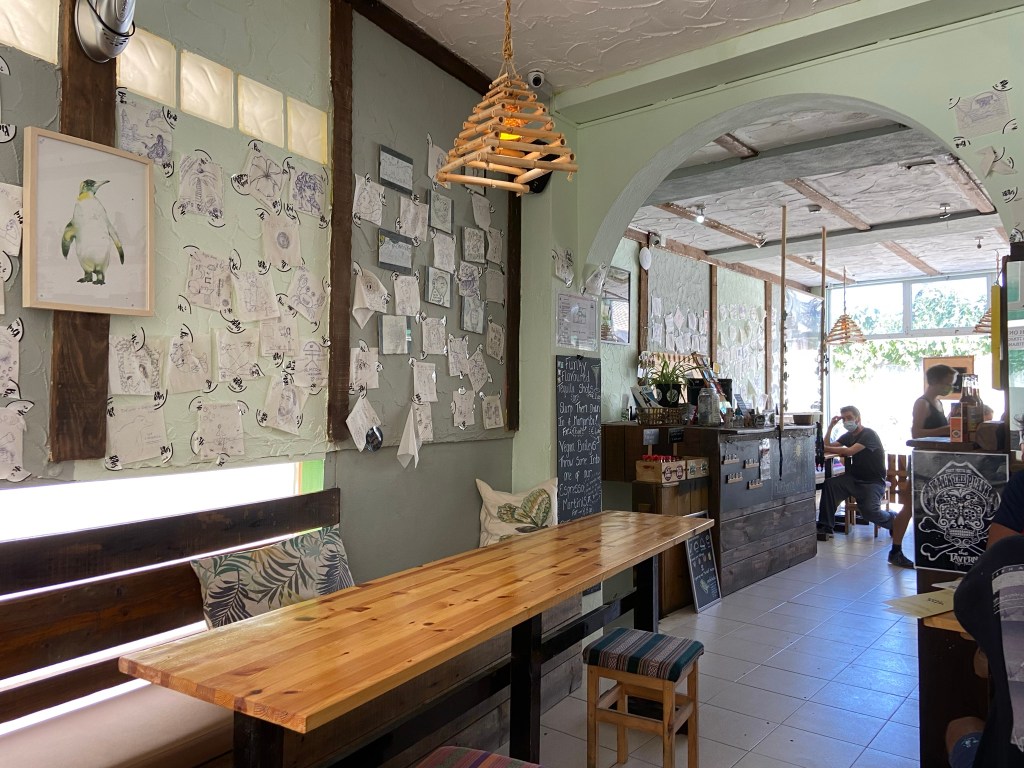
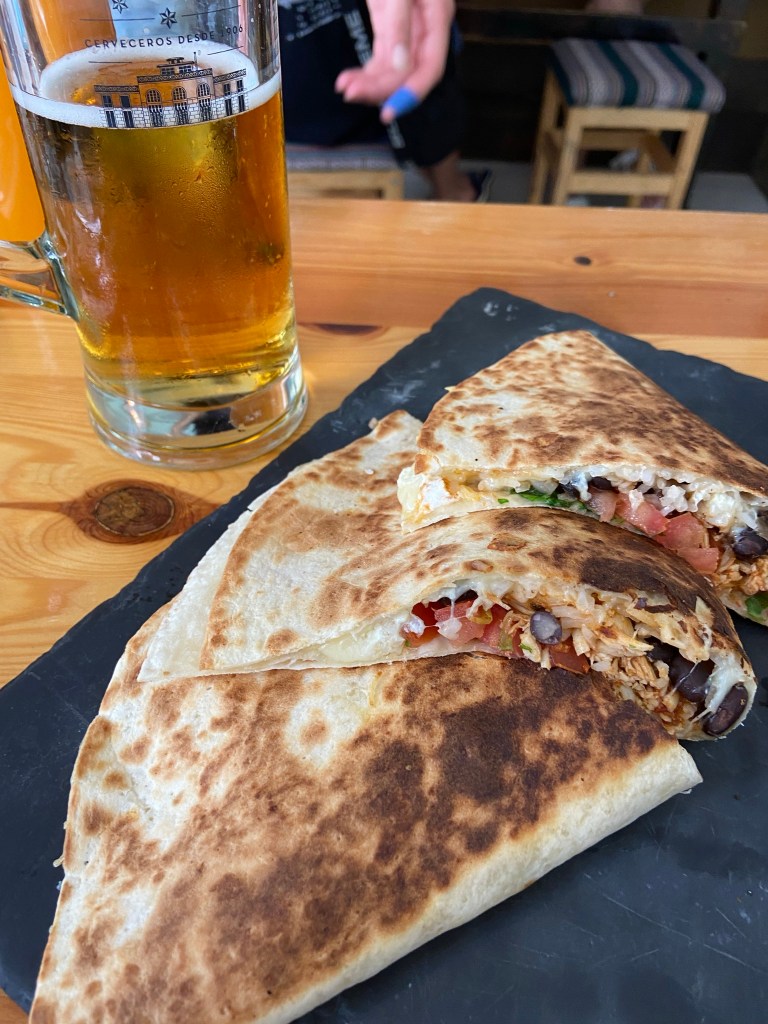

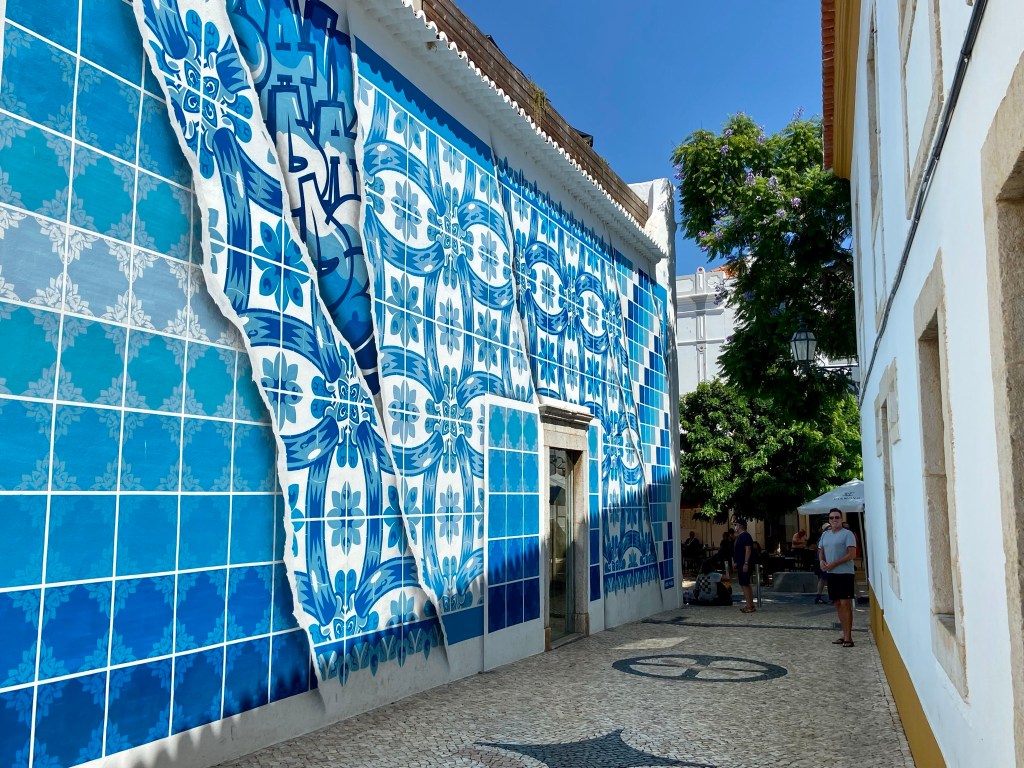

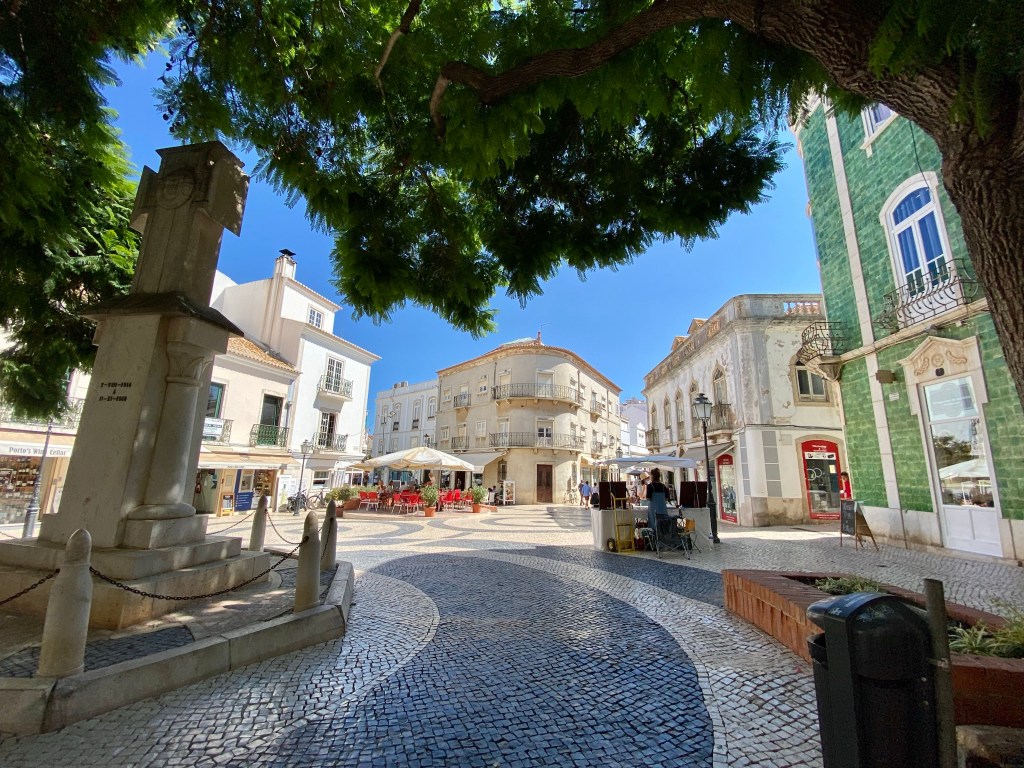

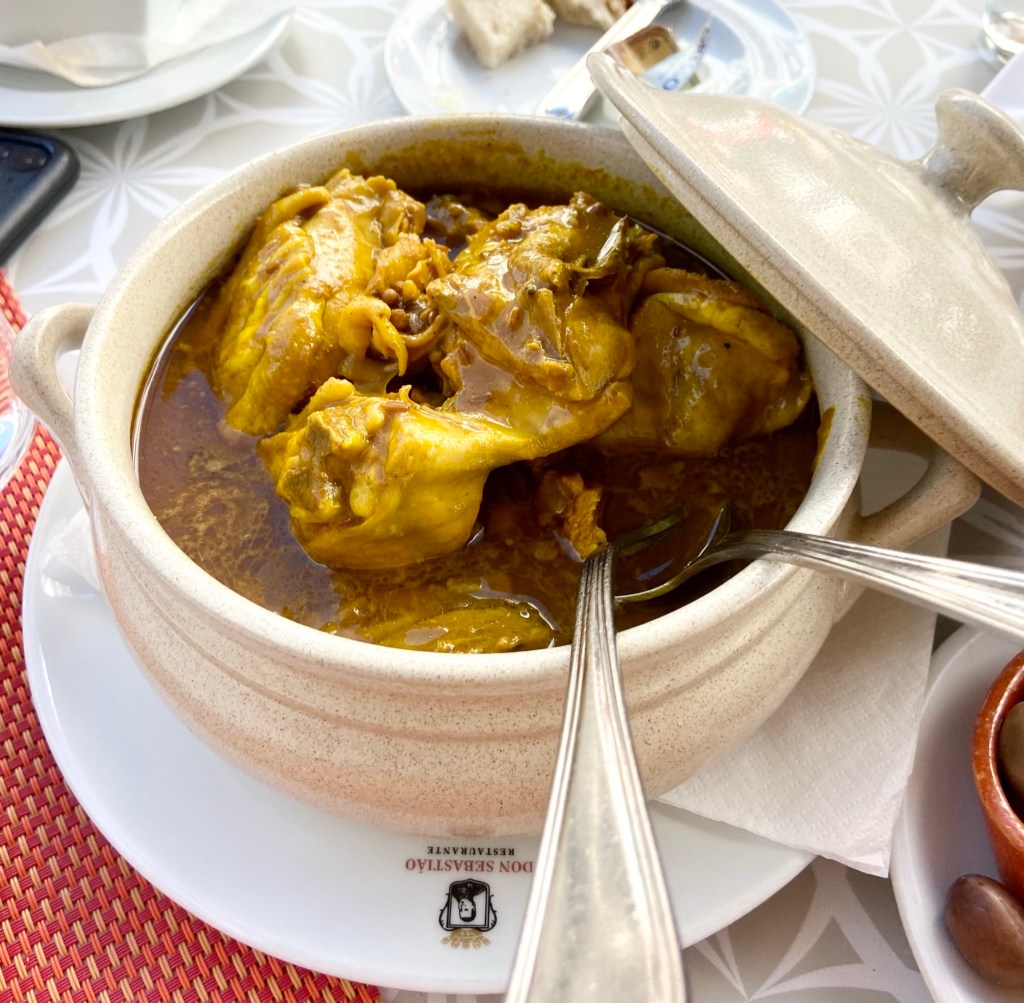

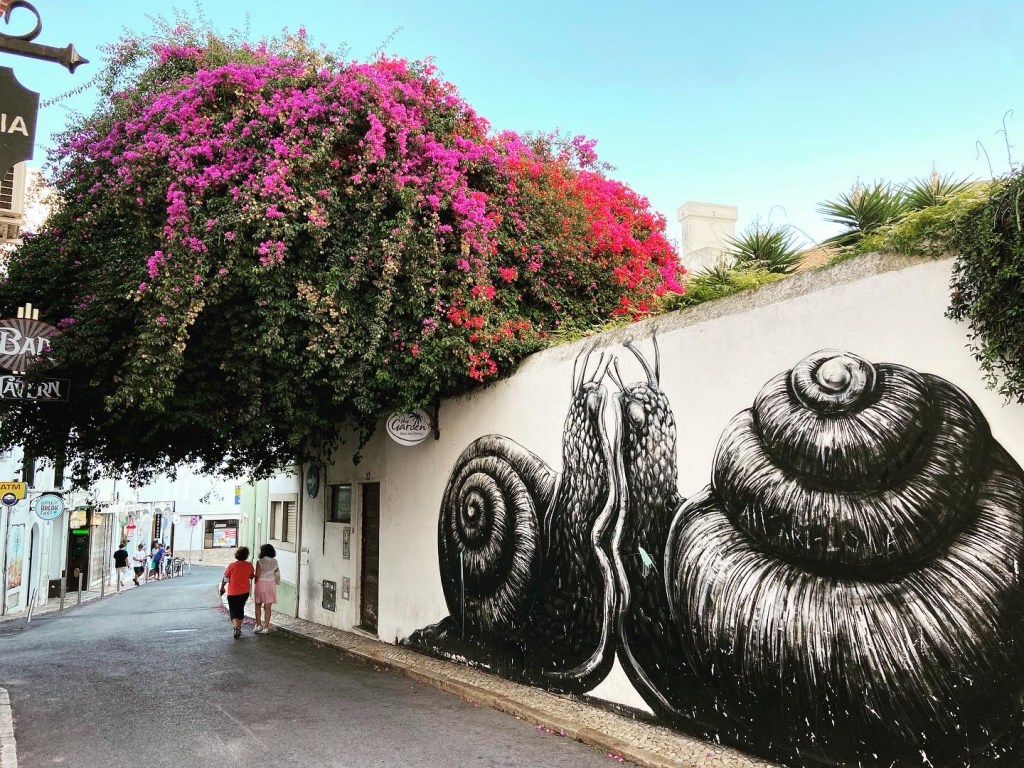

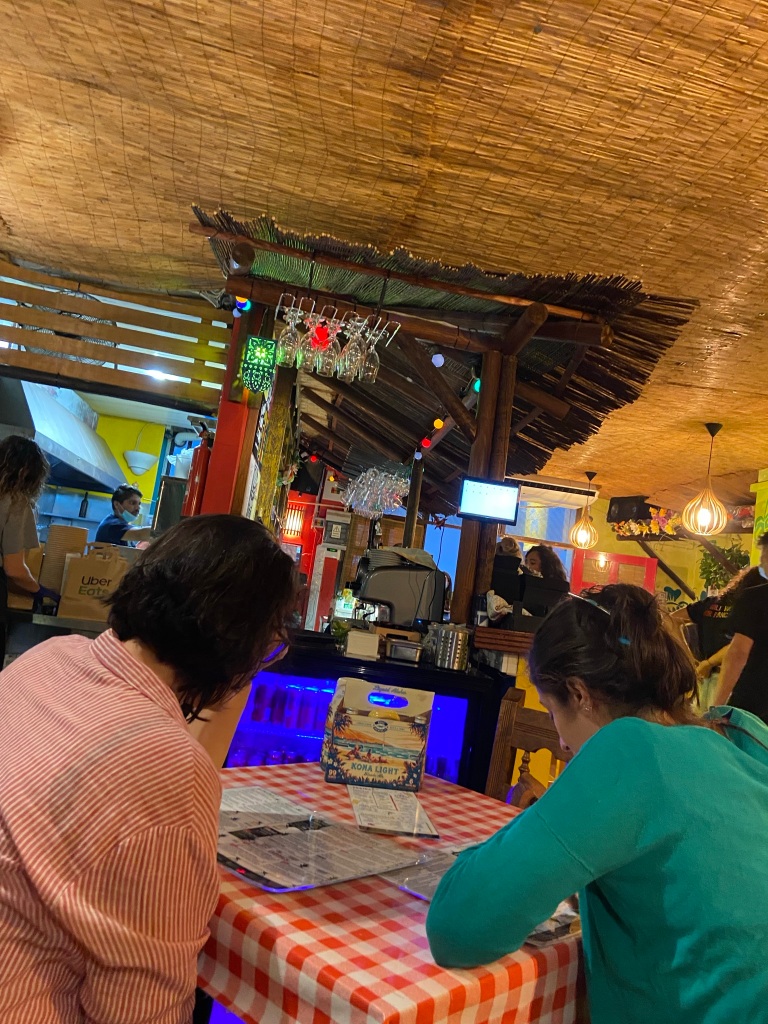
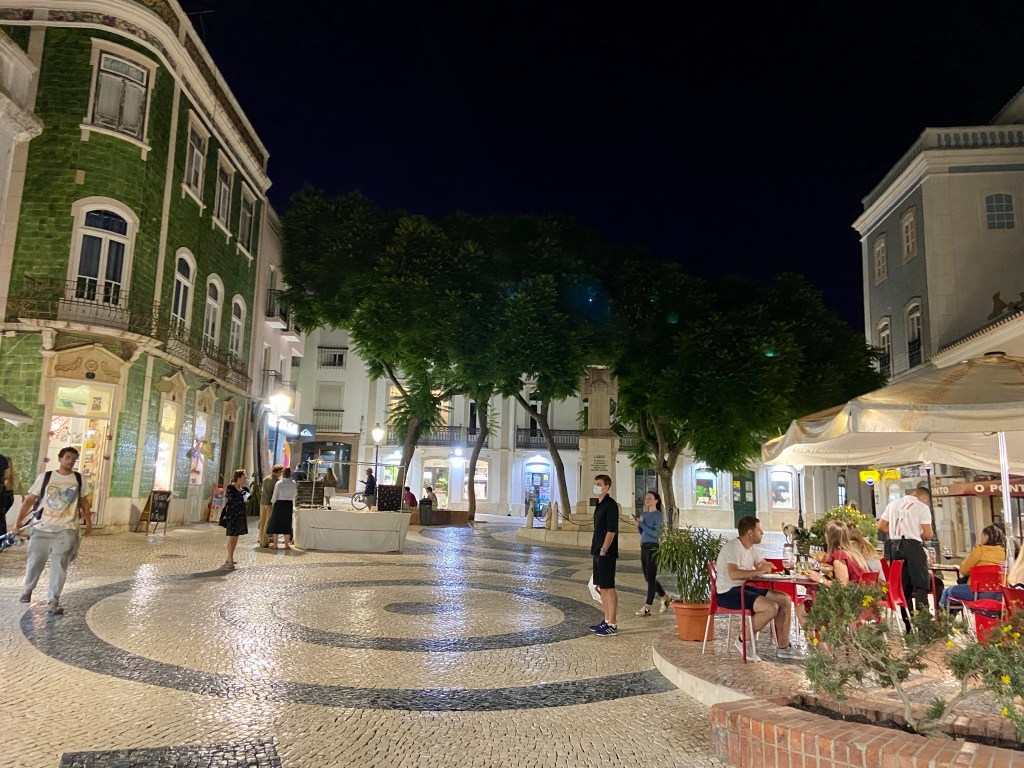
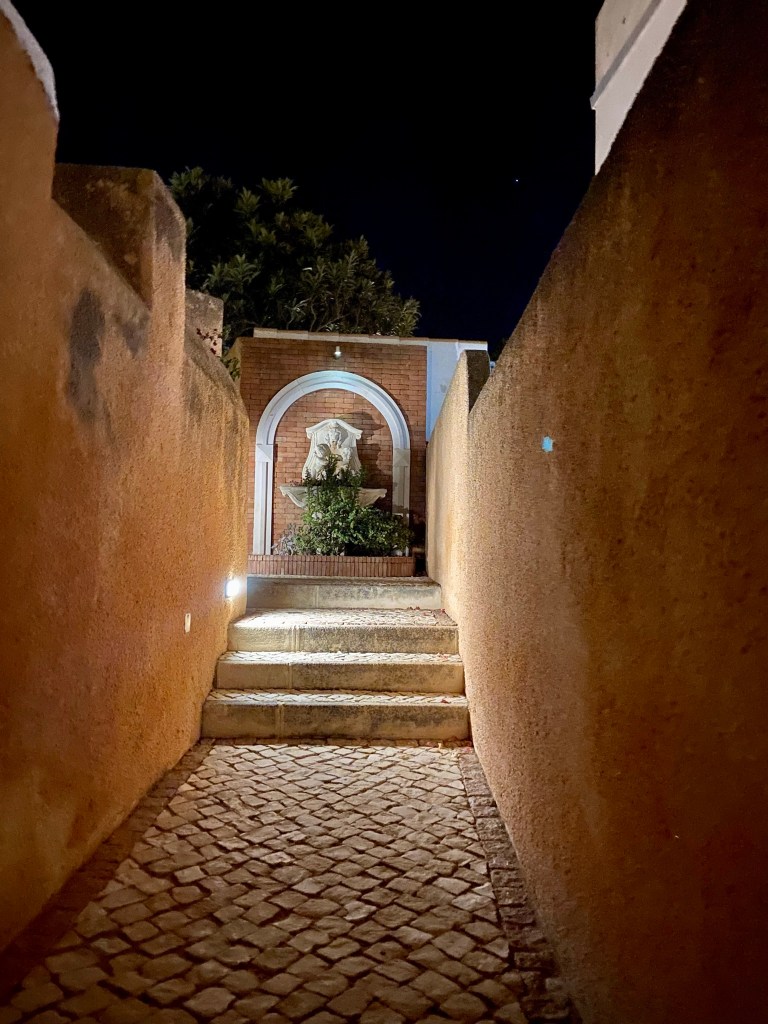
It was time to leave Lagos, although begrudgingly. We took the long train to Lisbon; Portugal is not known for having a fast or efficient rail service. CP has an app, or you can purchase tickets and check schedules via Trainline, my favortie train app. If you are making this journey, it’s important to note that there are a number of train stations in Lisbon, and the main stations may not be the closest to your accommodation. We found the best option for us was to disembark at Entrecampos and take a taxi to the hotel.
Lisbon is a great city that requires at least three days to appreciate. As always, we love to just wander around sort of aimlessly, but we definitely suggest taking a tuk tuk to the Miradouro da Senhora do Monte, which is the highest point in Lisbon. Once you’ve soaked up the view you can catch another tuk tuk down to the center, or to really get a taste of the neighborhood, walk back to town.
A great walk around Lisbon should include the rua Augusta, through the Arco da Rua Augusta, on to the grand Praca do Comercio. A few streets over is the Santa Justa lift, one of the main tourist attractions in Lisbon. Other excellent things to see in Lisbon are the 11th century Castello de S. Jorge, the ruins of the Carmo Convent, and the Lisbon Cathedral. You can’t leave Lisbon without sampling the famed pastel de nata, and enjoying a fado performance. You won’t have any trouble finding an abundance of both!

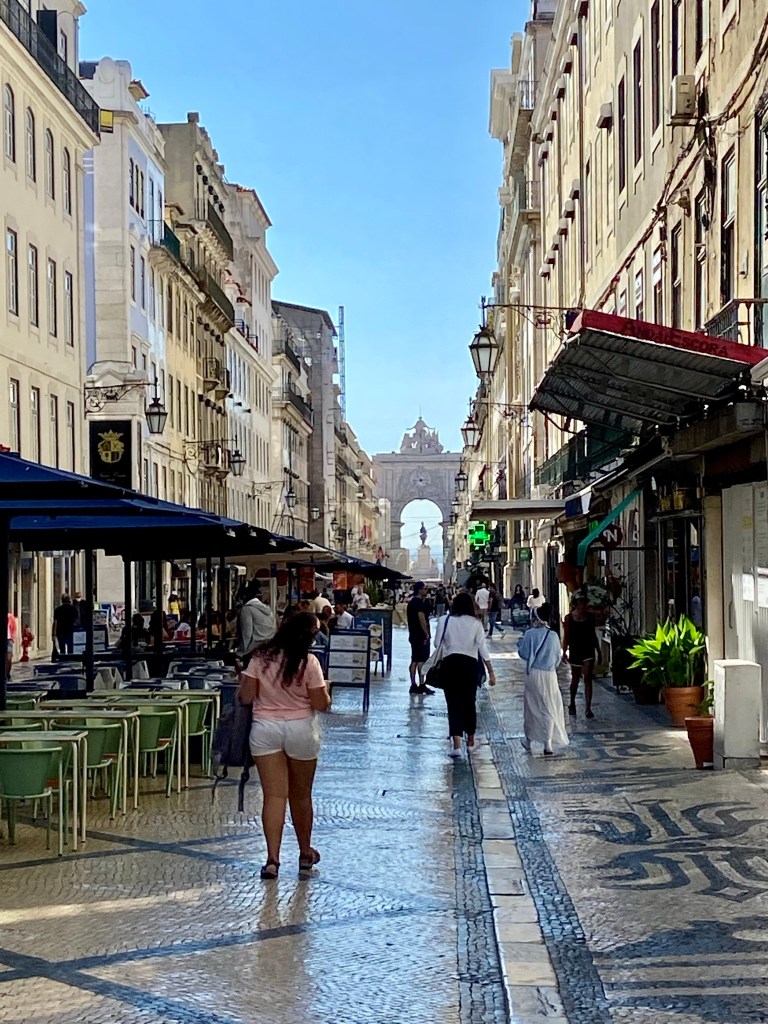
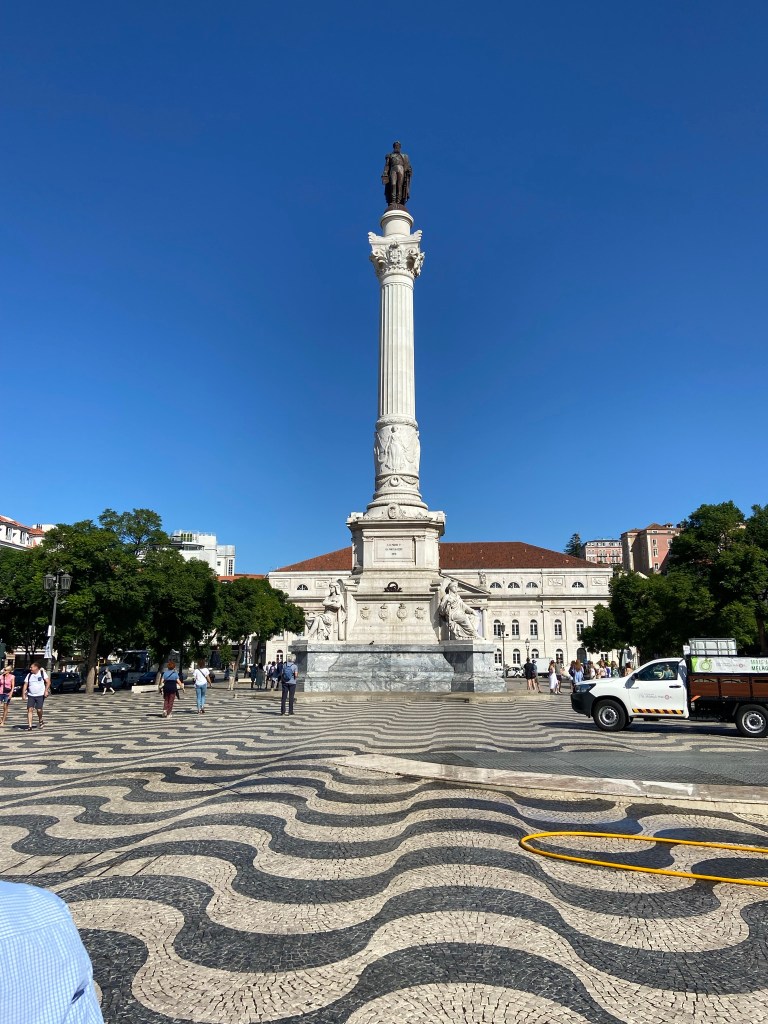


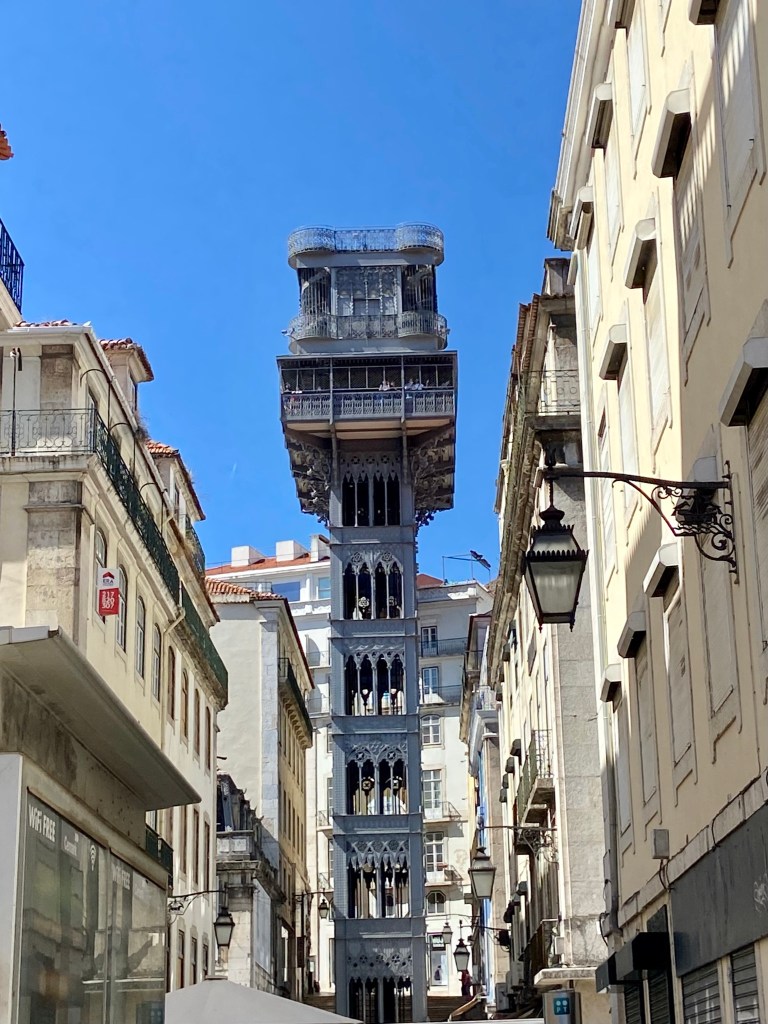
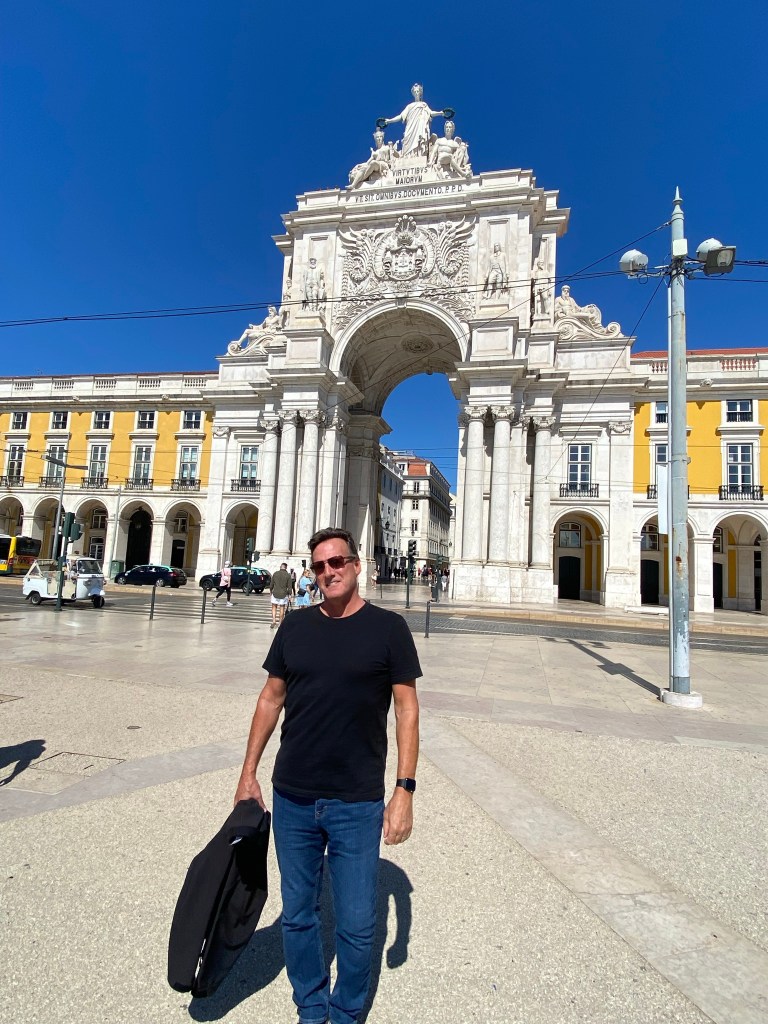
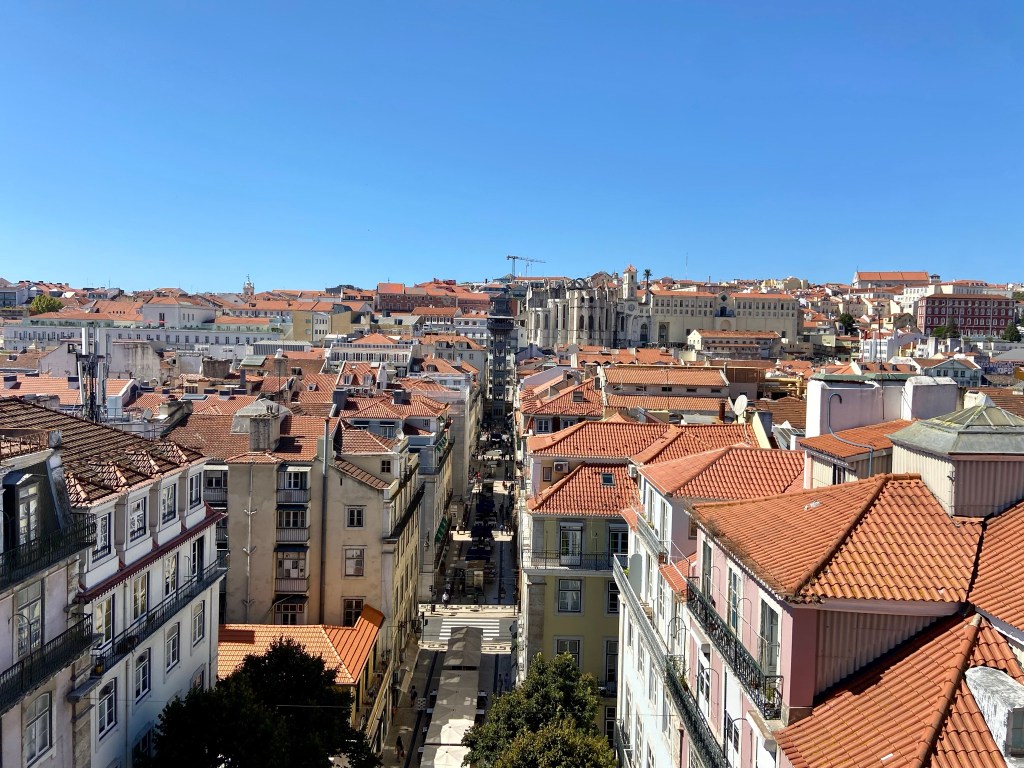

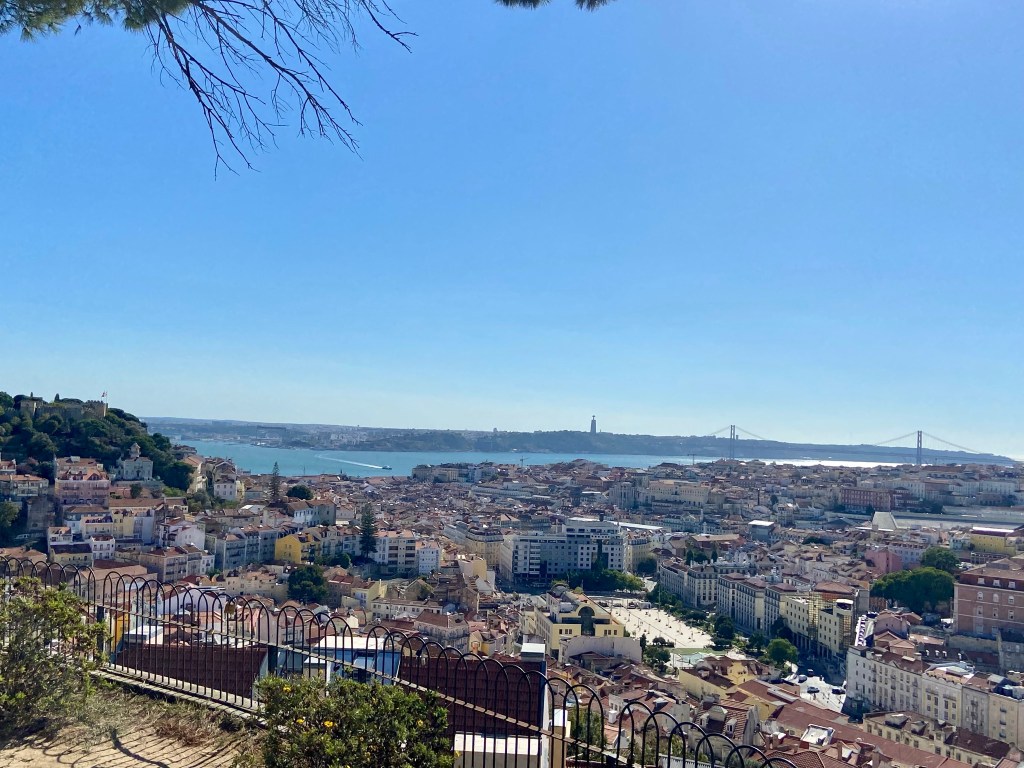
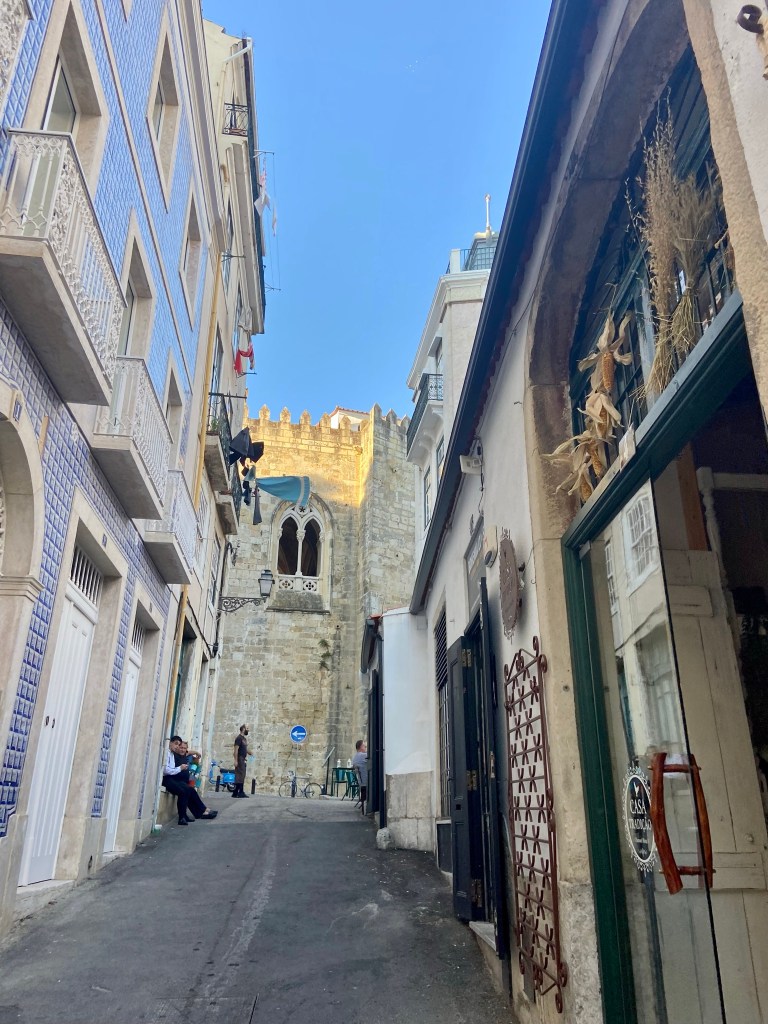
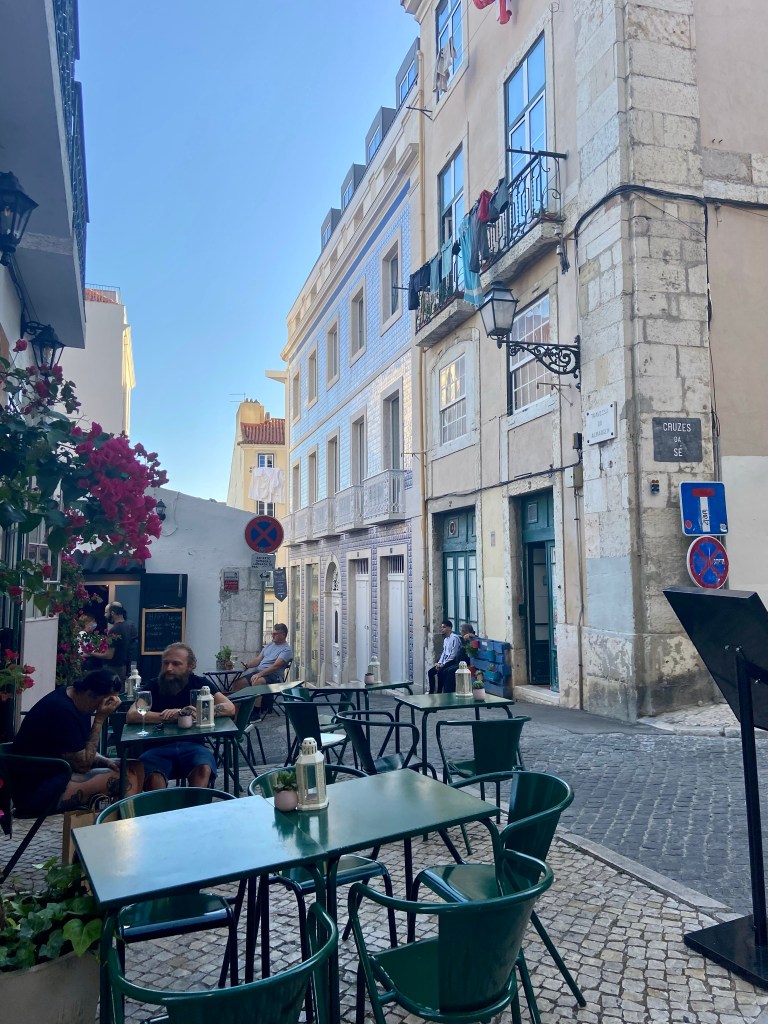
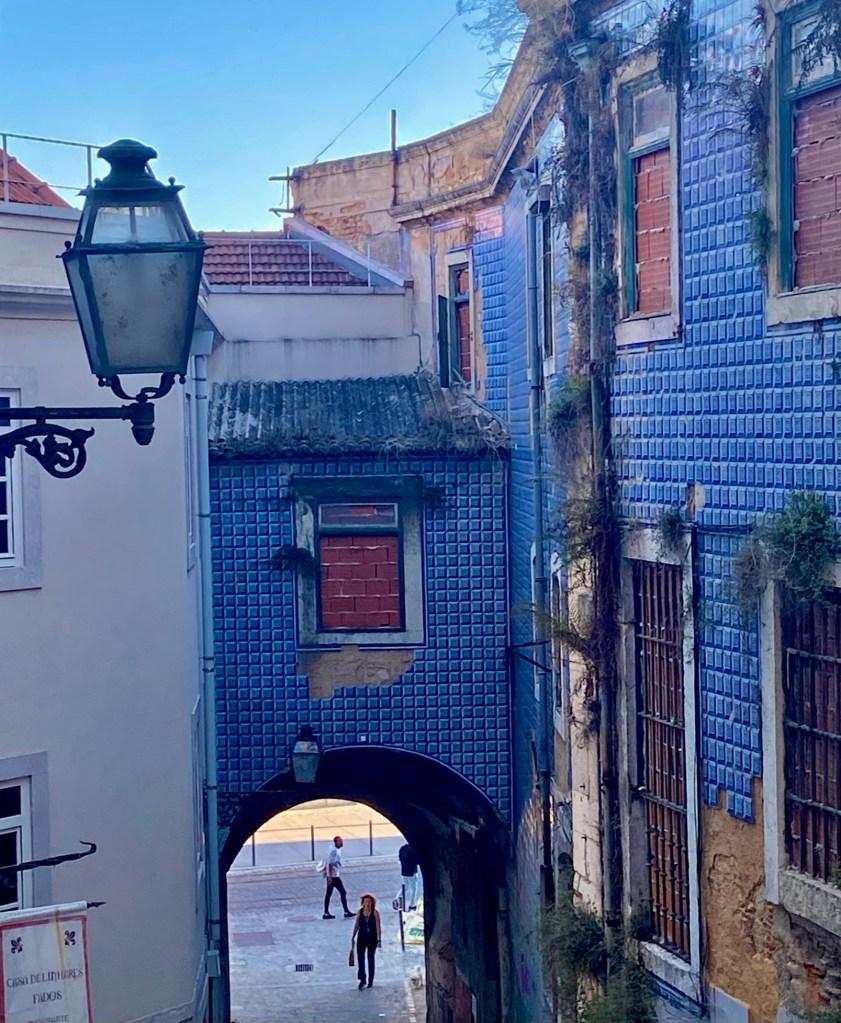
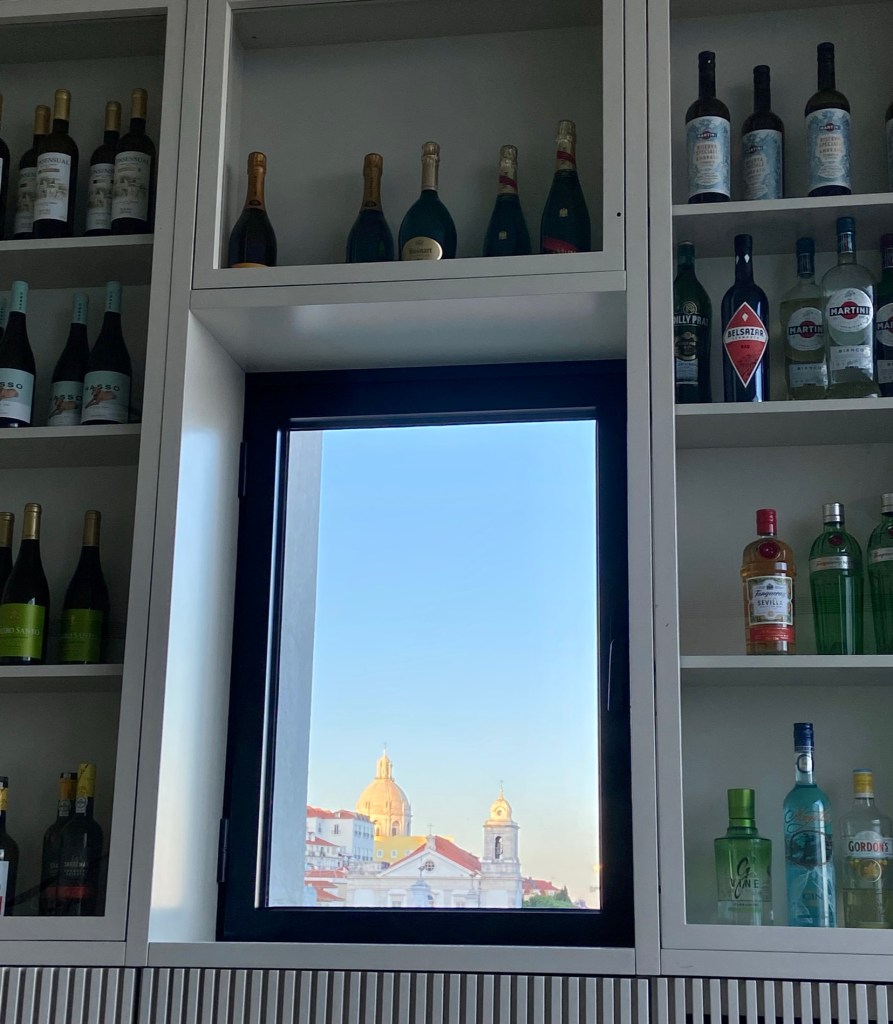

It was finally time for the last, and most anticipated, leg of our Portuguese trip: the Azores. The Azores is an archipelago composed of nine volcanic islands in the Macaronesia region of the North Atlantic Ocean, about 900 miles west of mainland Portugal. We took a 2 hour flight from Lisbon to Ponta Delgada, the largest municipality in the Azores, on the island of Sao Miguel. We rented a car here to get around, although there are buses and taxis for those who don’t want to drive. Our hotel was a 10 minute drive from the airport, and an easy walk into the Ponta Delgada center.


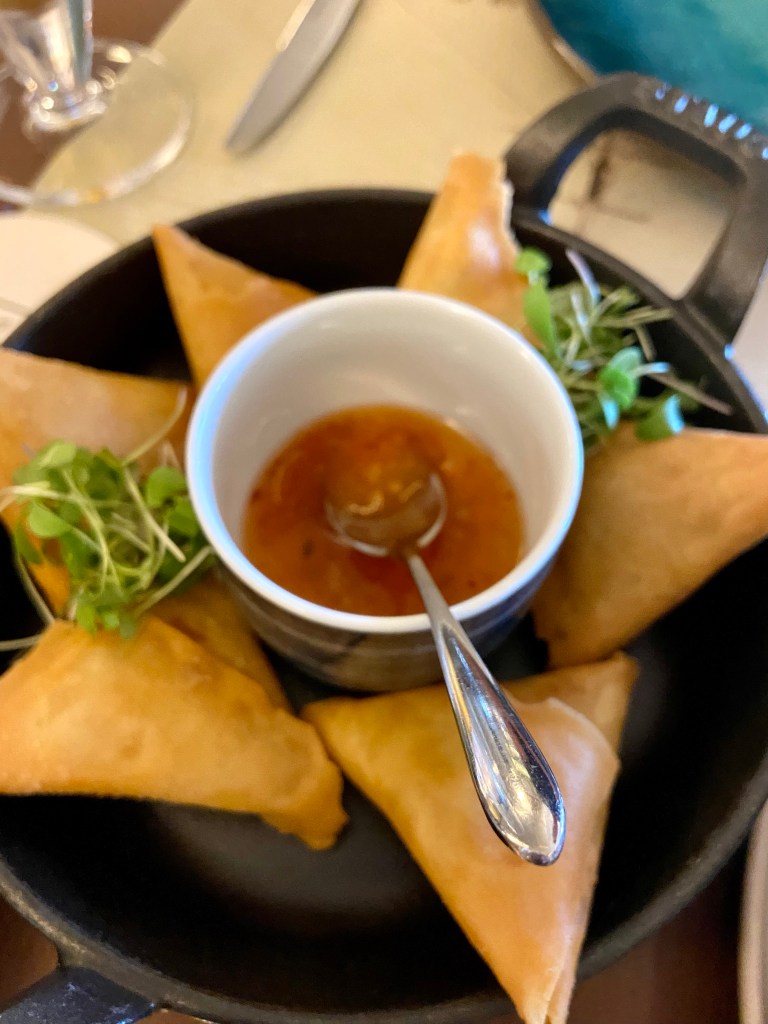
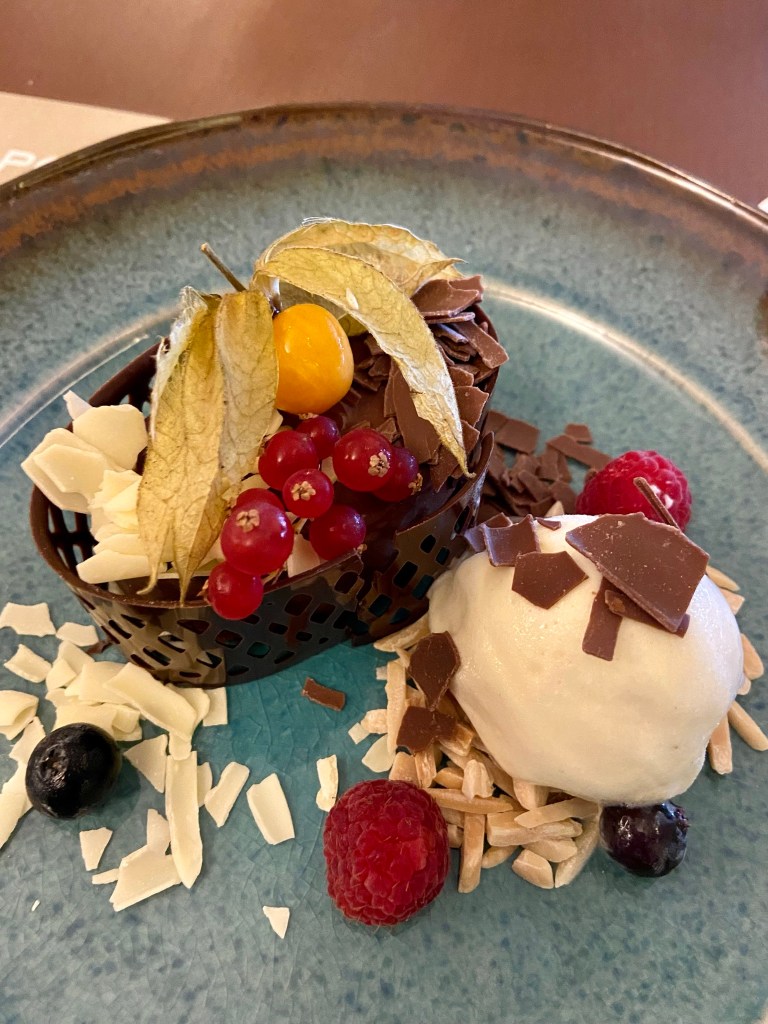


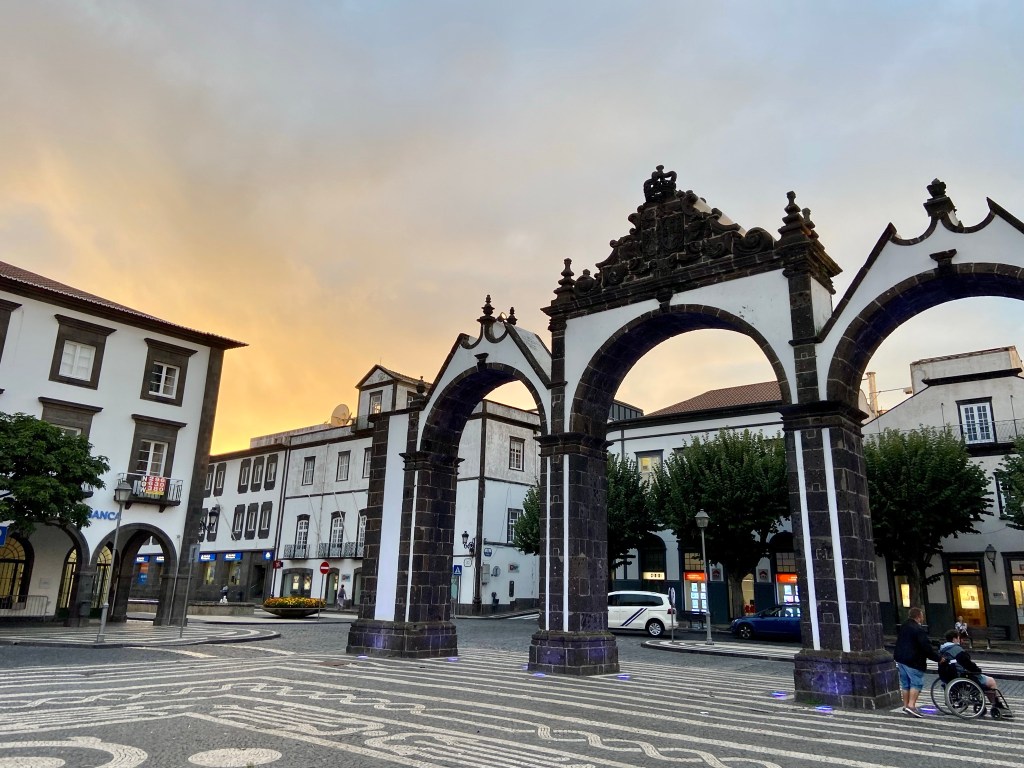

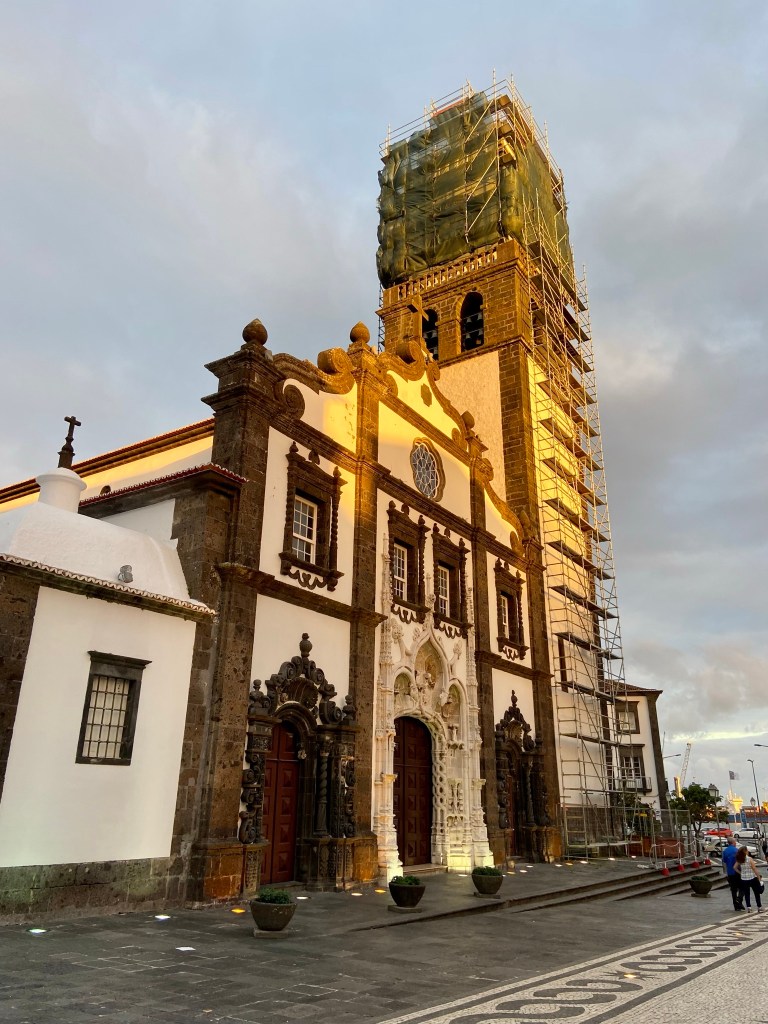


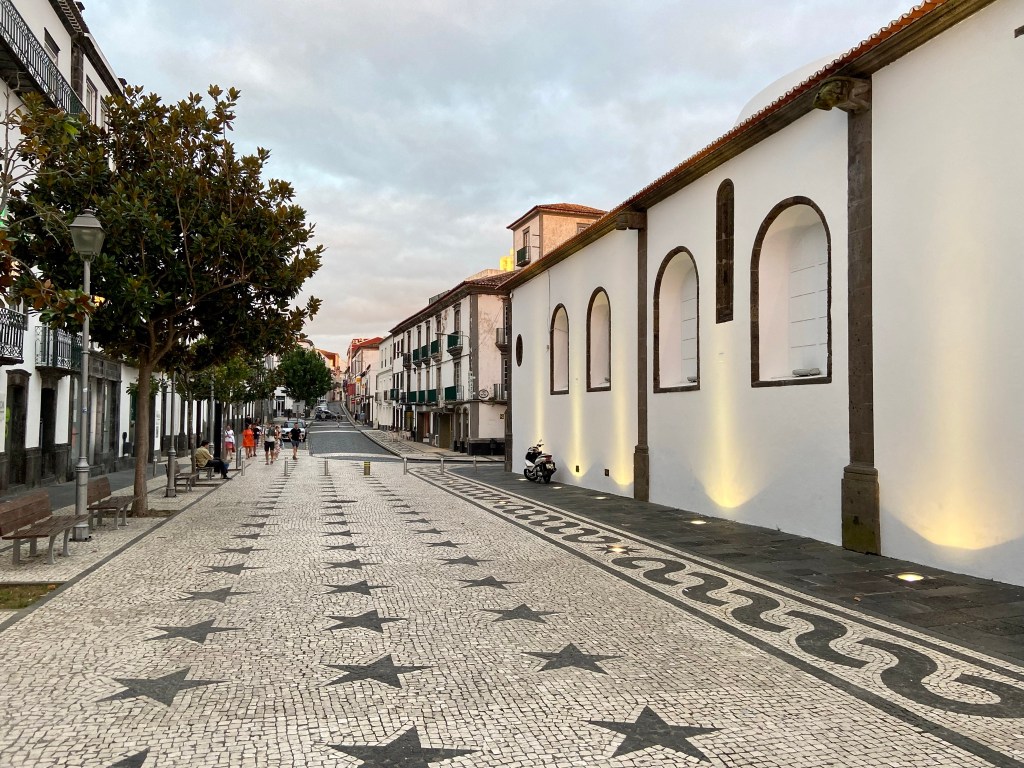

Sao Miguel is a wonder. For a small island, we were amazed at the numerous microclimates we experienced as we drove around. It would be warm and sunny one minute, and the next, we’d be driving through a rain storm. As we explored the island, we were astounded by the hydrangeas. They were everywhere! Other attractions in abundance are hot springs and tea. We visited a couple of the hot springs. At Parque Terra Nostra, once you’ve paid your entrance fee, you’re welcome to swim in the thermal baths, or just spend the day exploring the vast botanical gardens. I highly recommend the gardens, and allow yourself at least 2 hours. Parking in the town is scarce, so you may have to walk a bit to the park entrance. The Caldeira Velha provides a more natural backdrop for your soak, but be sure to make a reservation if you want to enjoy the baths. Without a reservation you’re welcome to walk around as long as you don’t enter the pools.

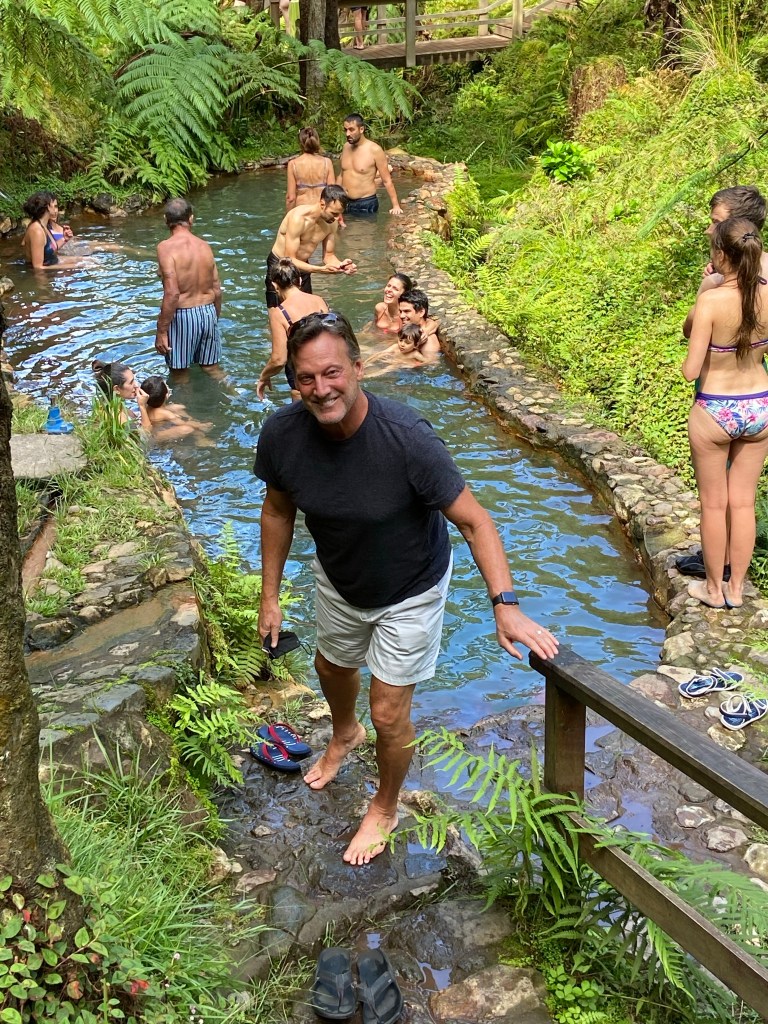
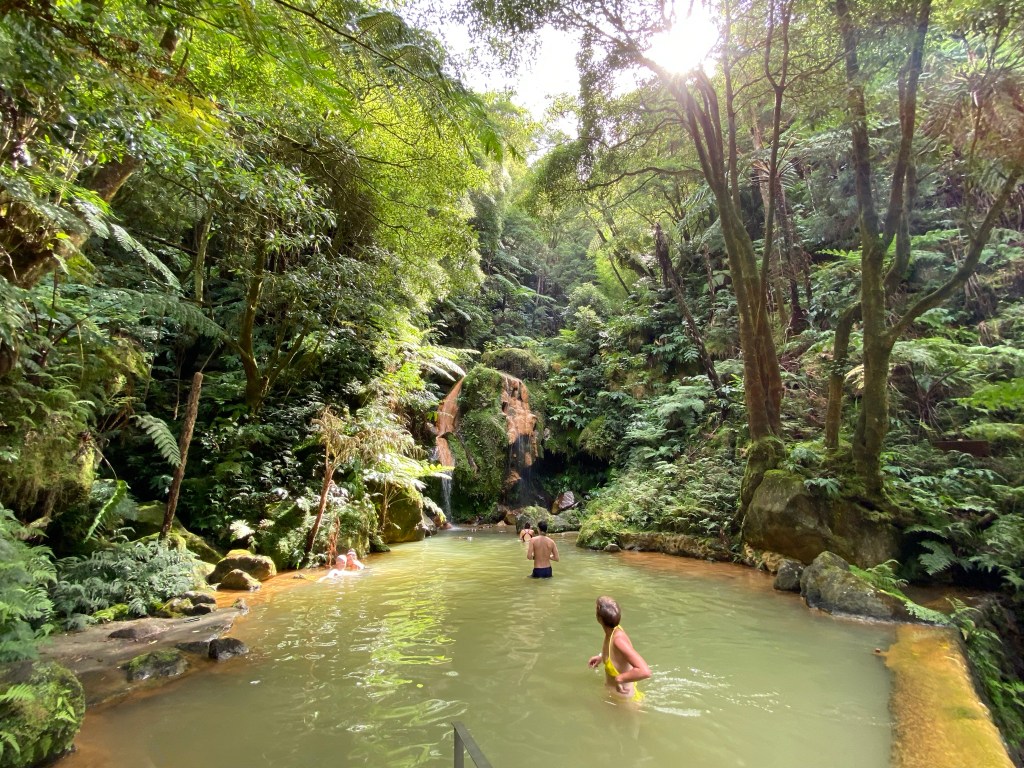
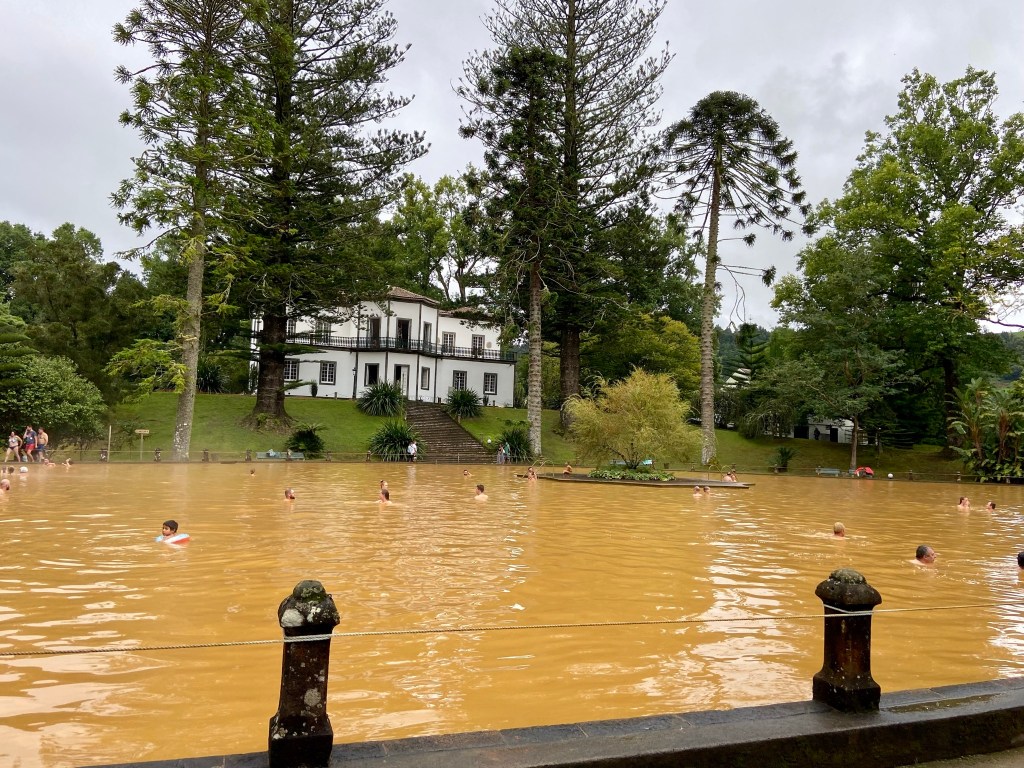
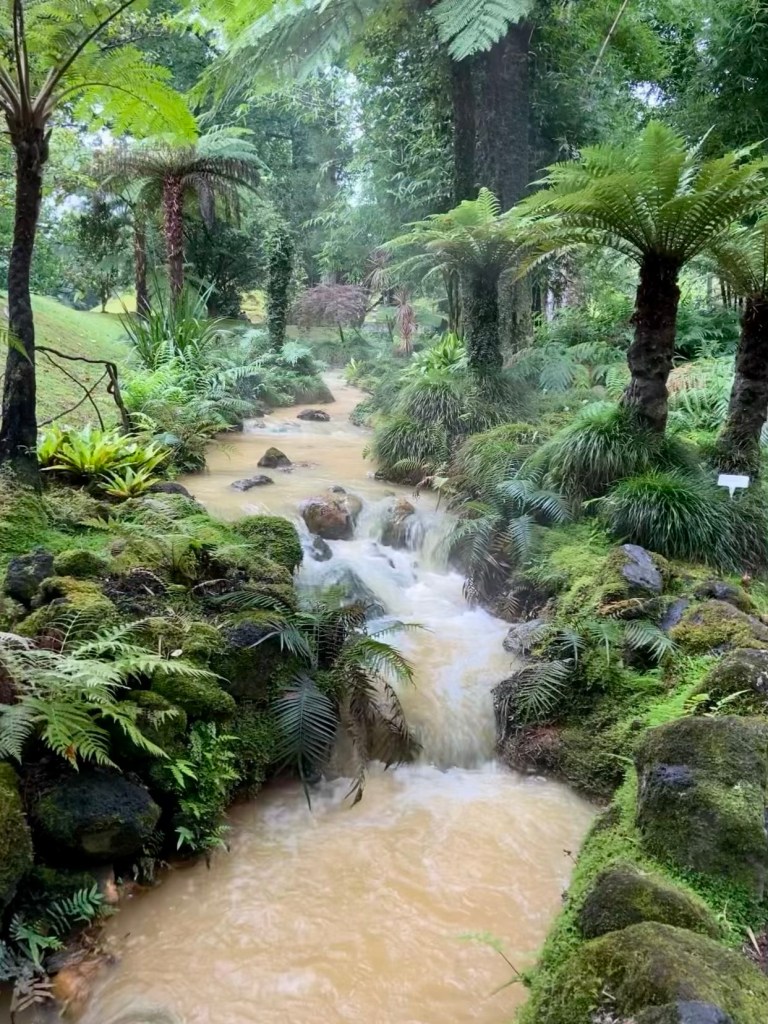

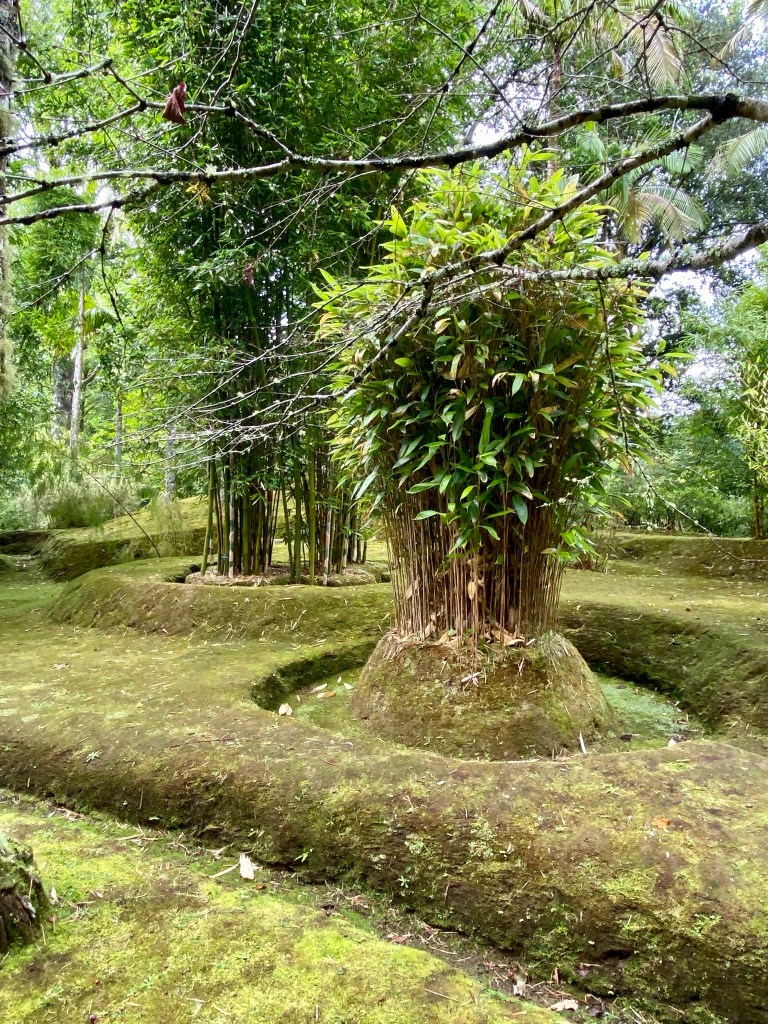
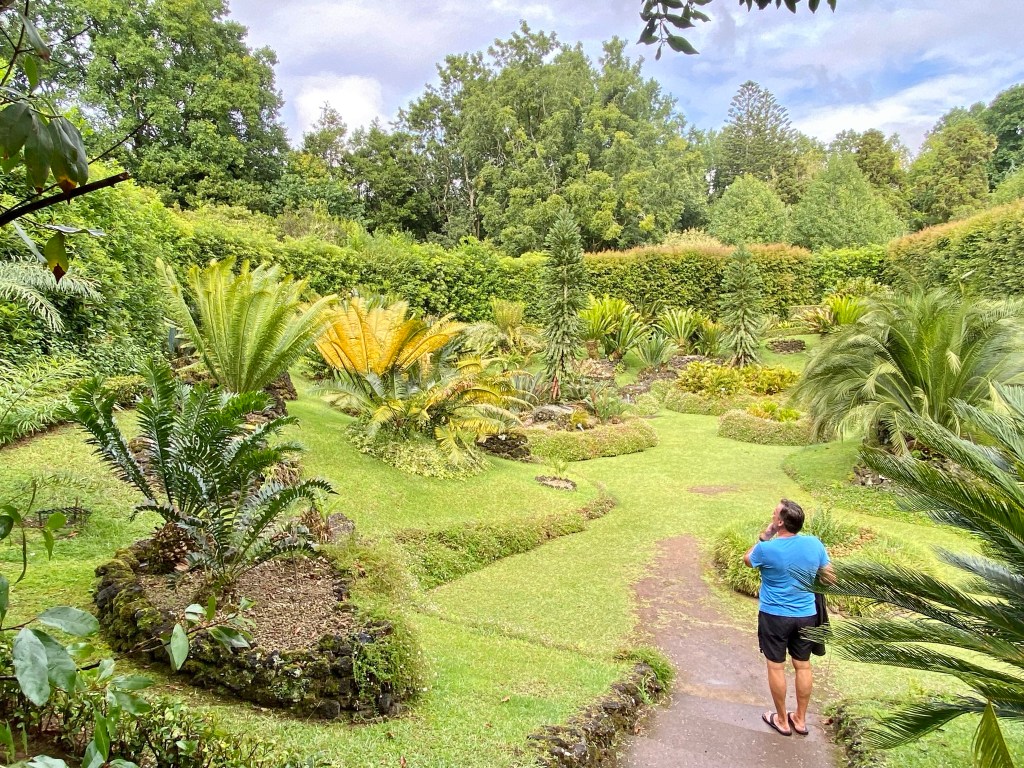
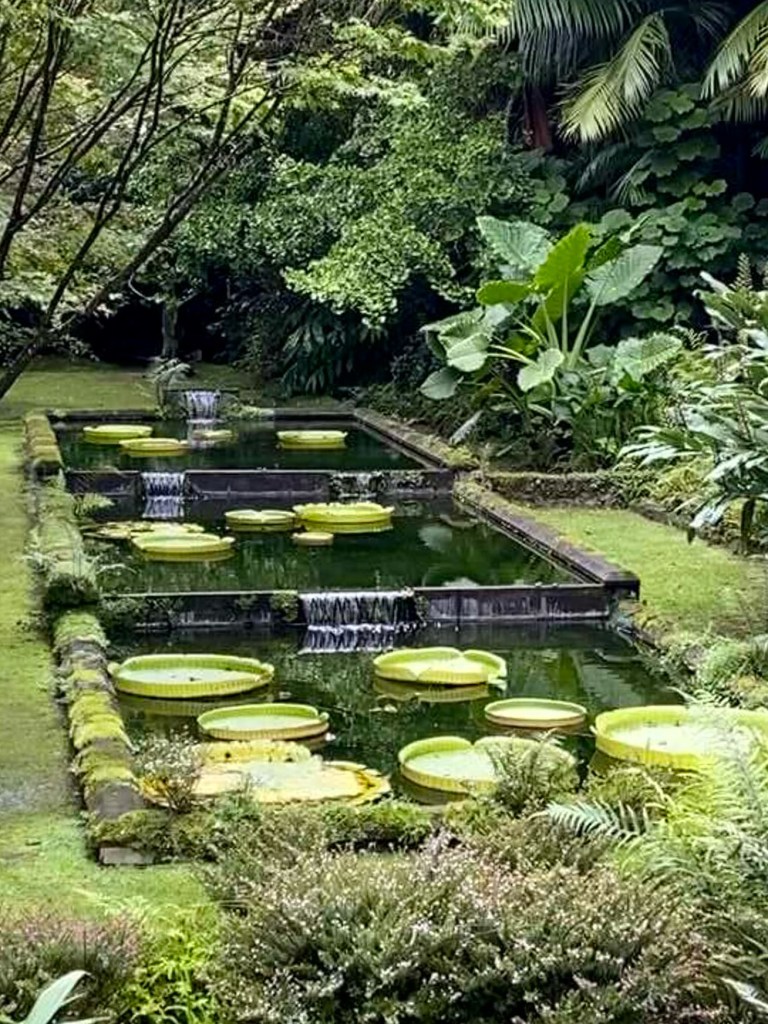
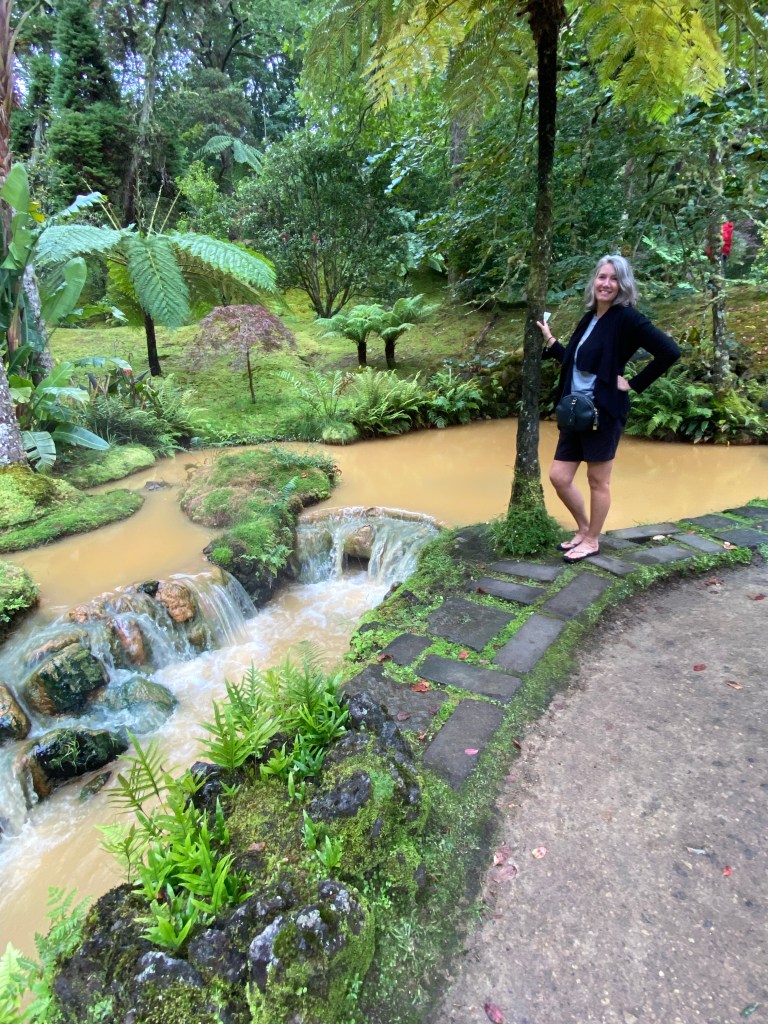
You can’t visit Sao Miguel without checking out the tea plantation of Cha Gorreana. This place doesn’t appear to have changed much since it was founded in 1883, and it’s interesting to explore the old factory, sample the tea, and walk about the tea growing in the fields.
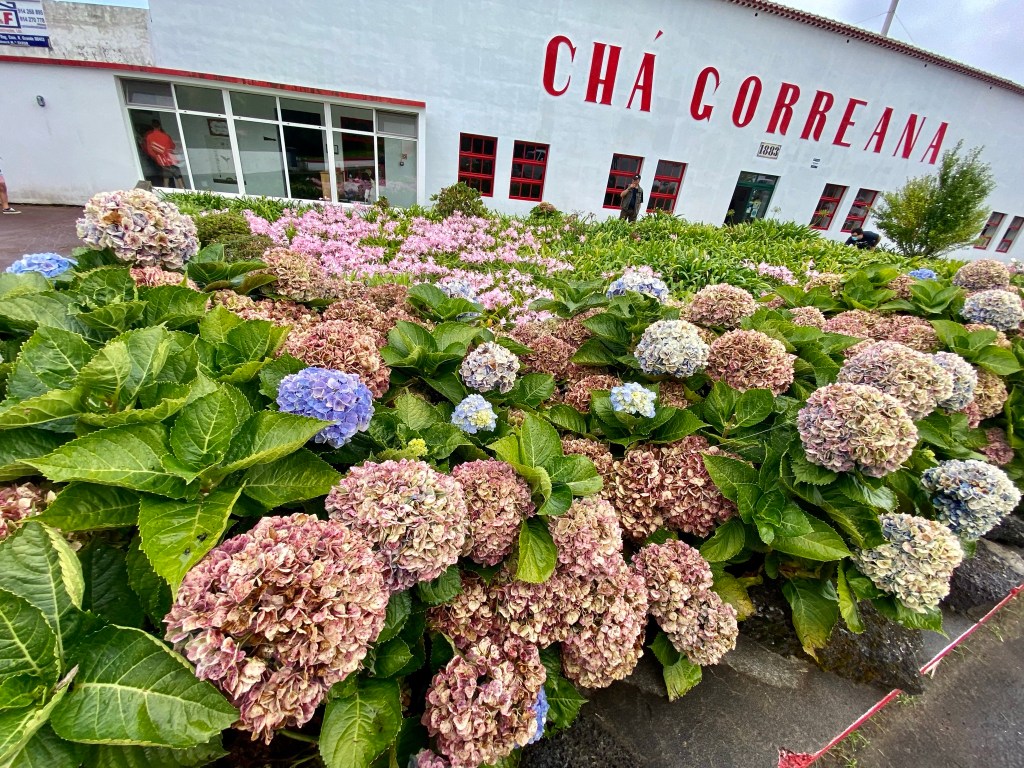
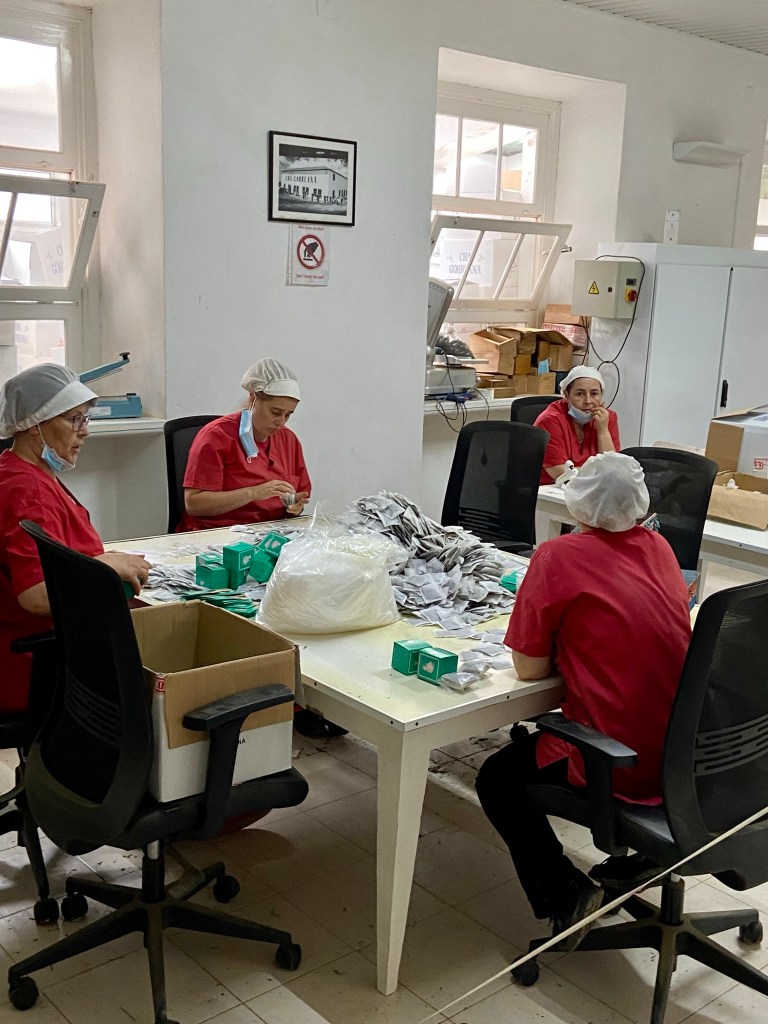

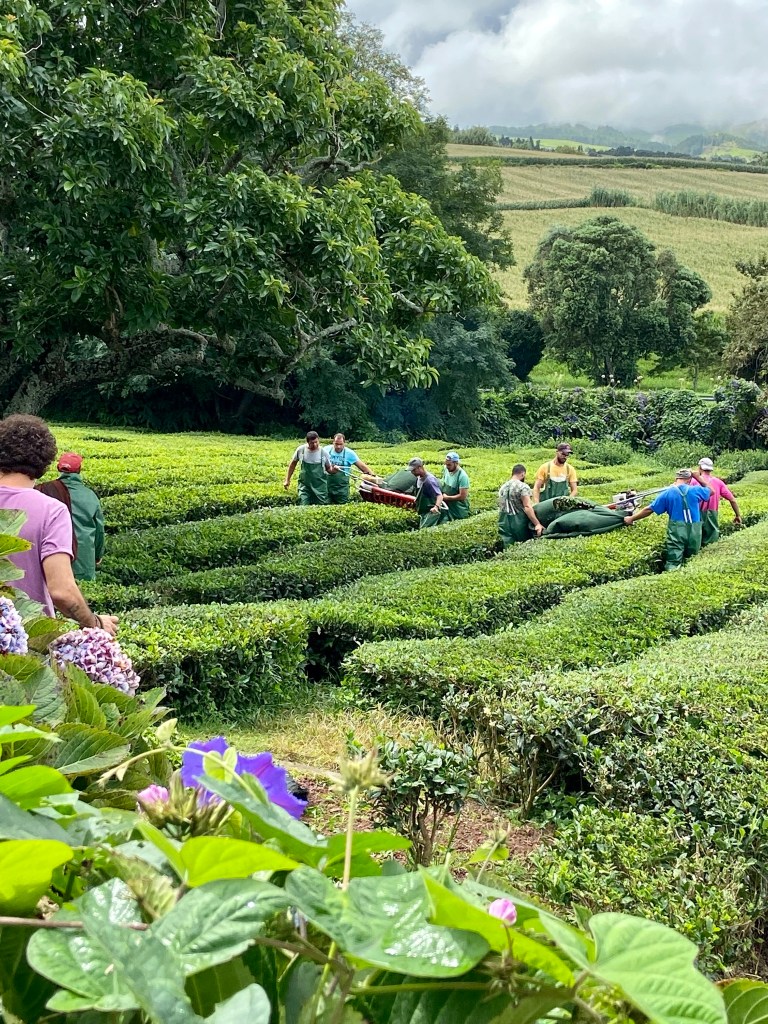
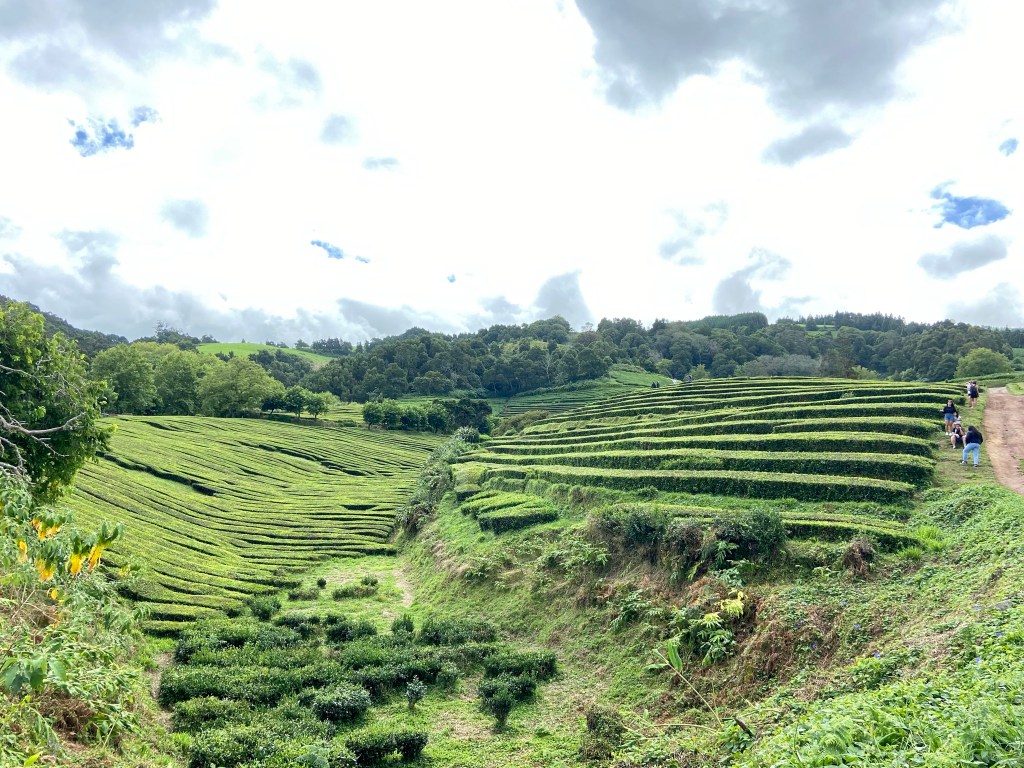
Another must-see in Sao Miguel is Sete Cidades, which is home to the twin lakes, and probably the most famous landmark in Sao Miguel. The lookout at Miradouro do Cerrado das Freiras provides an excellent vantage point for both lakes, and from here you can clearly see that one lake is blue and the other green. To get a lakeside view, drive to the Green Love café for some local tea, or walk to the water’s edge for a picnic. Nearby is the Miradouro da Vista do Rei, where you can find the creepy ruins of the abandoned Monte Palace hotel. Despite the copious Keep Out signs, there are plenty of people wandering about the ruins. We had no desire to explore after reading about open elevator shafts and debris everywhere.
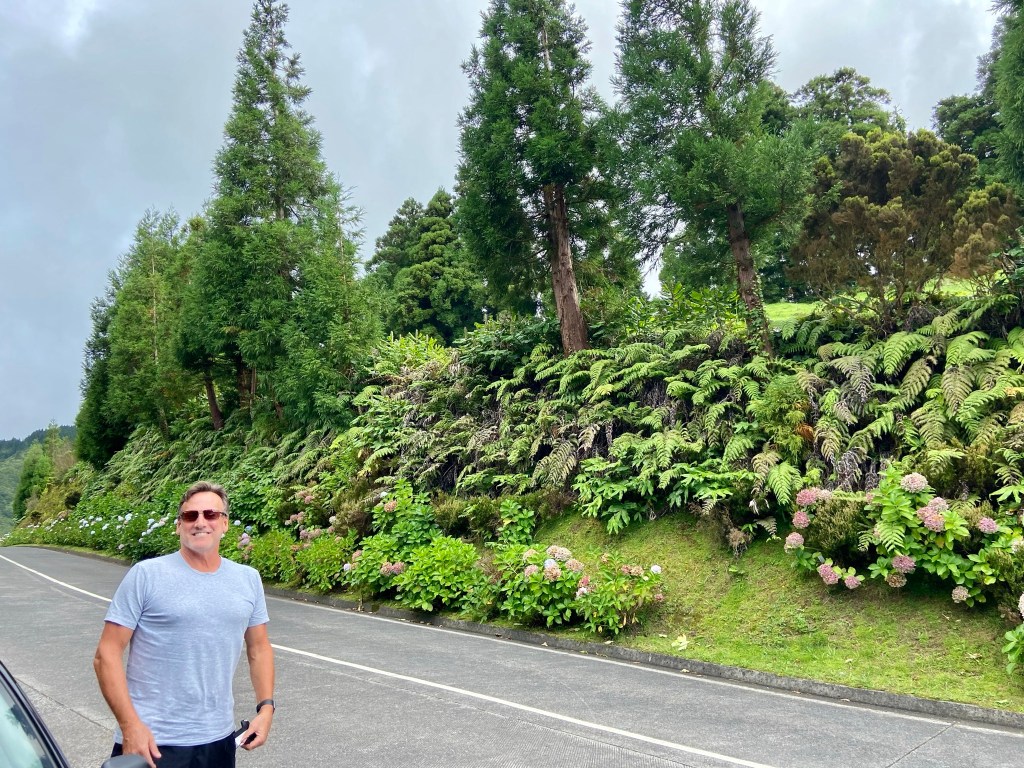
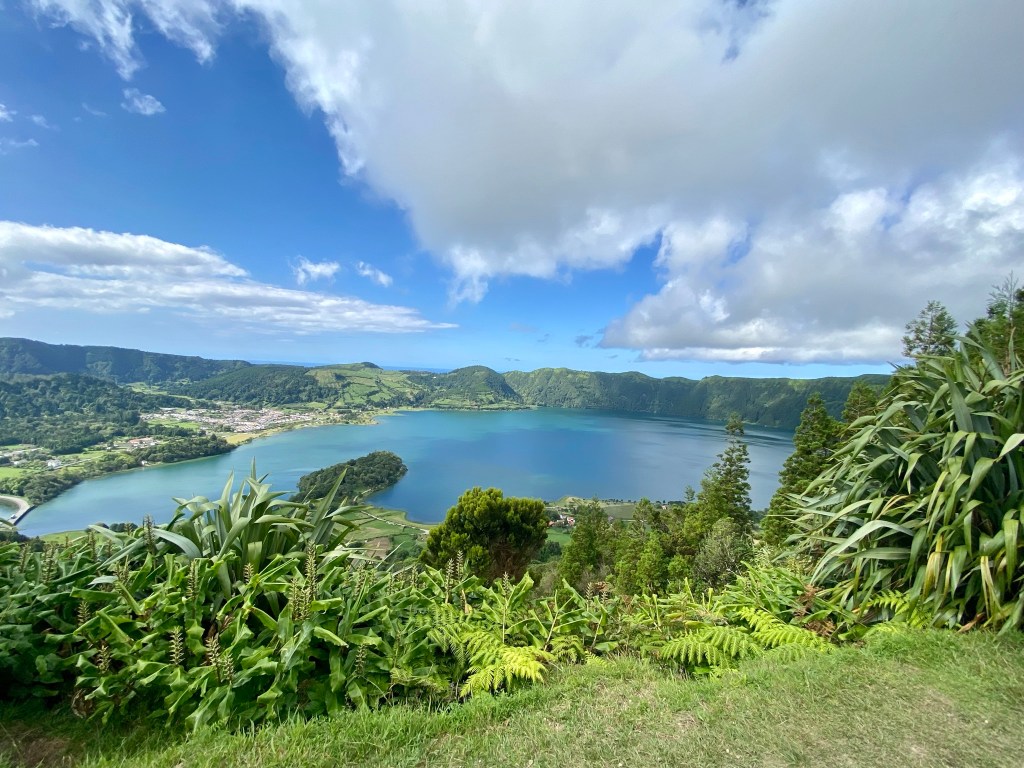
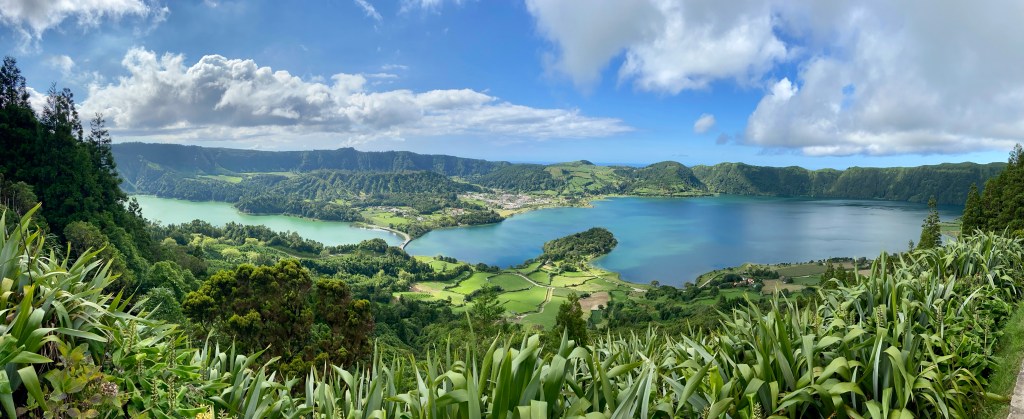

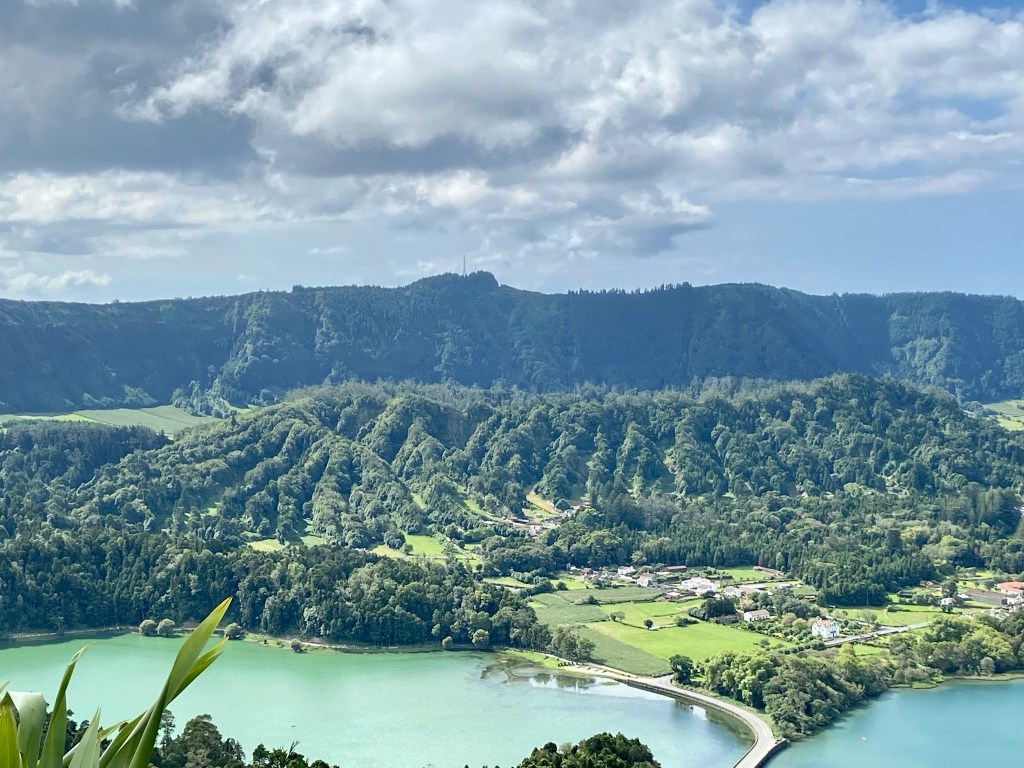

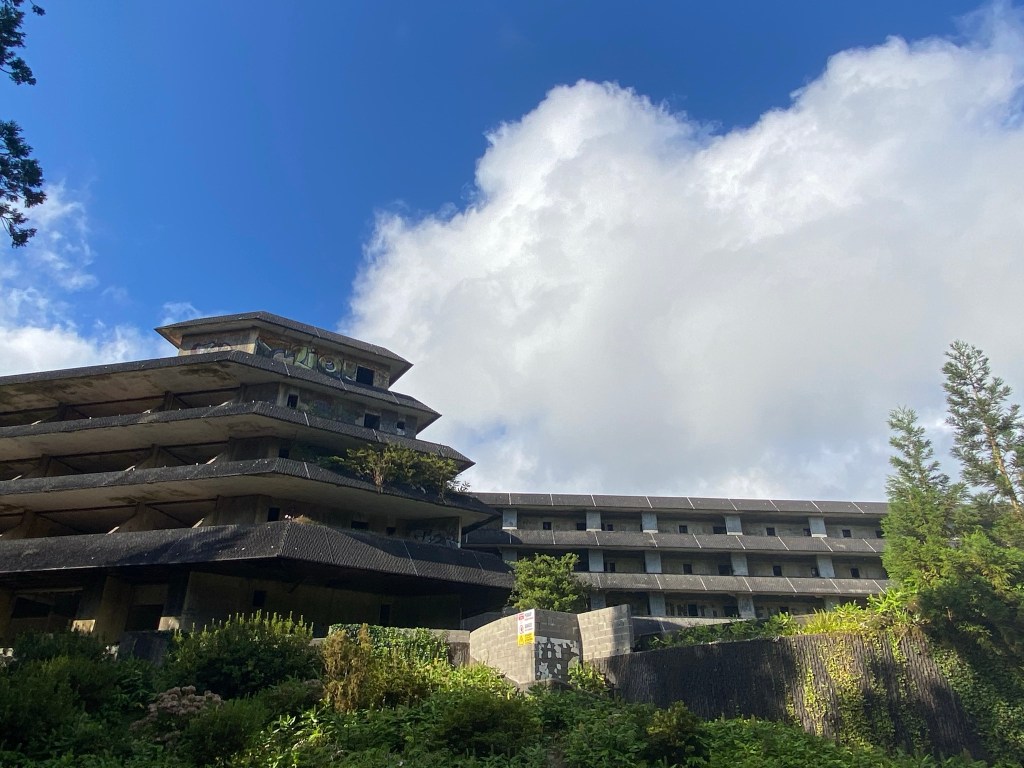

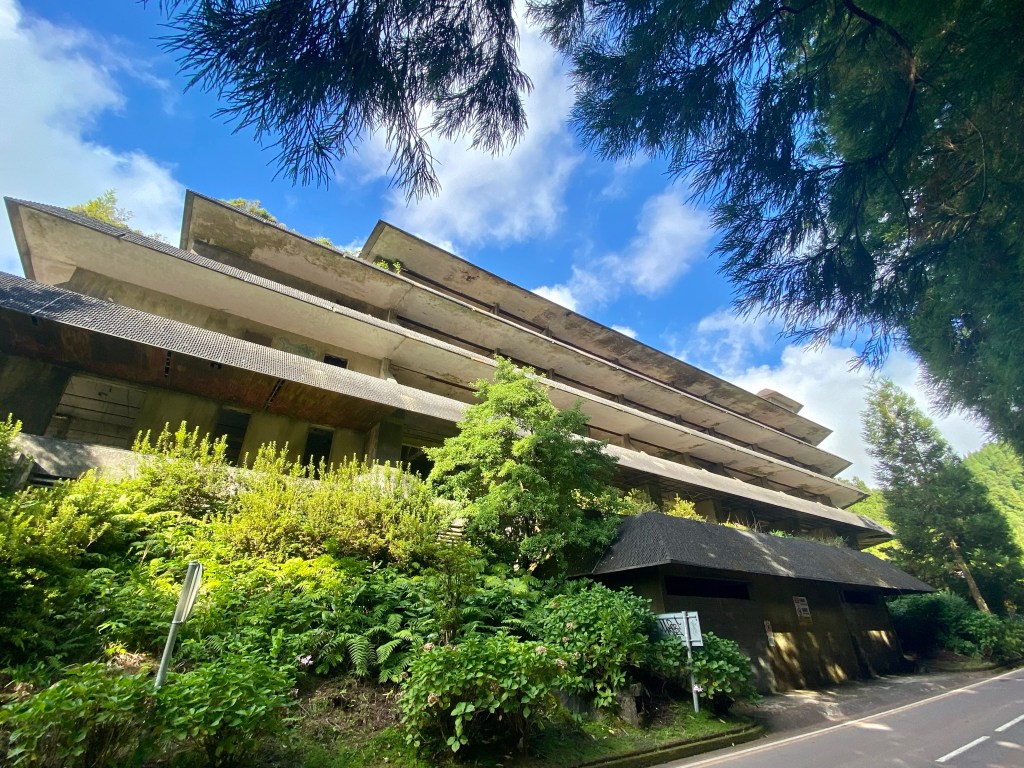
One evening we enjoyed a meal recommended to us by a friend at a cute little seaside restaurant called O Capitao (get the fish rice!). Near the restaurant there is a public swimming area called piscinas da Lagoa that would be a lot of fun on a hot day. If we go again we plan to spend some time swimming and sunbathing there!
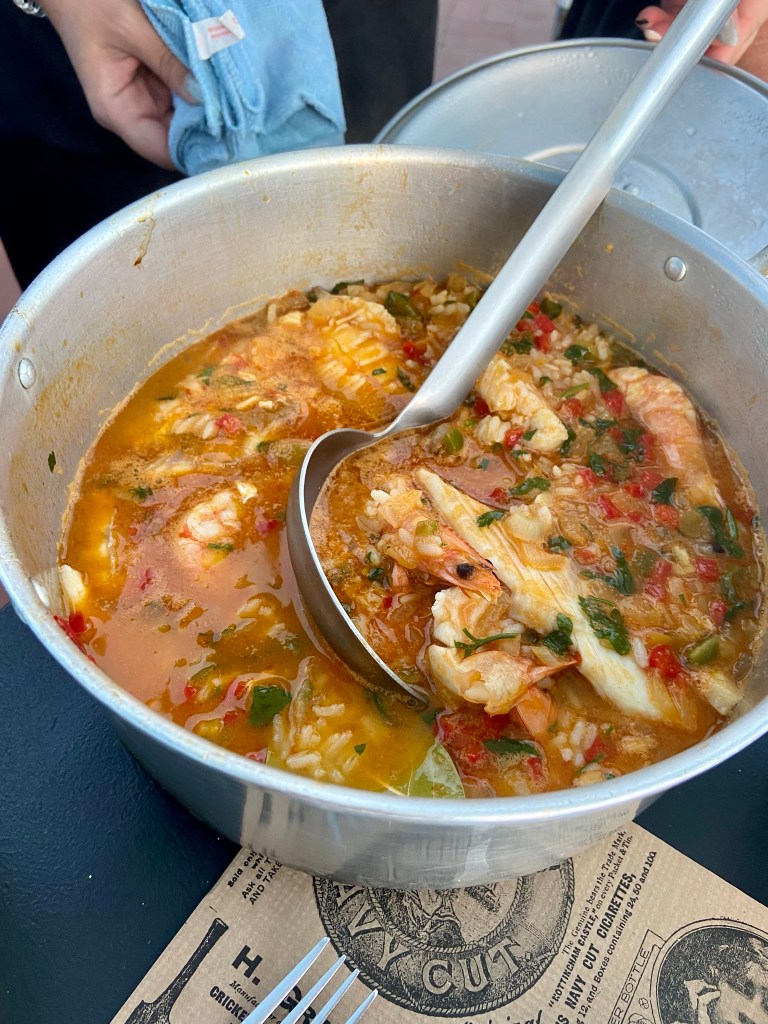
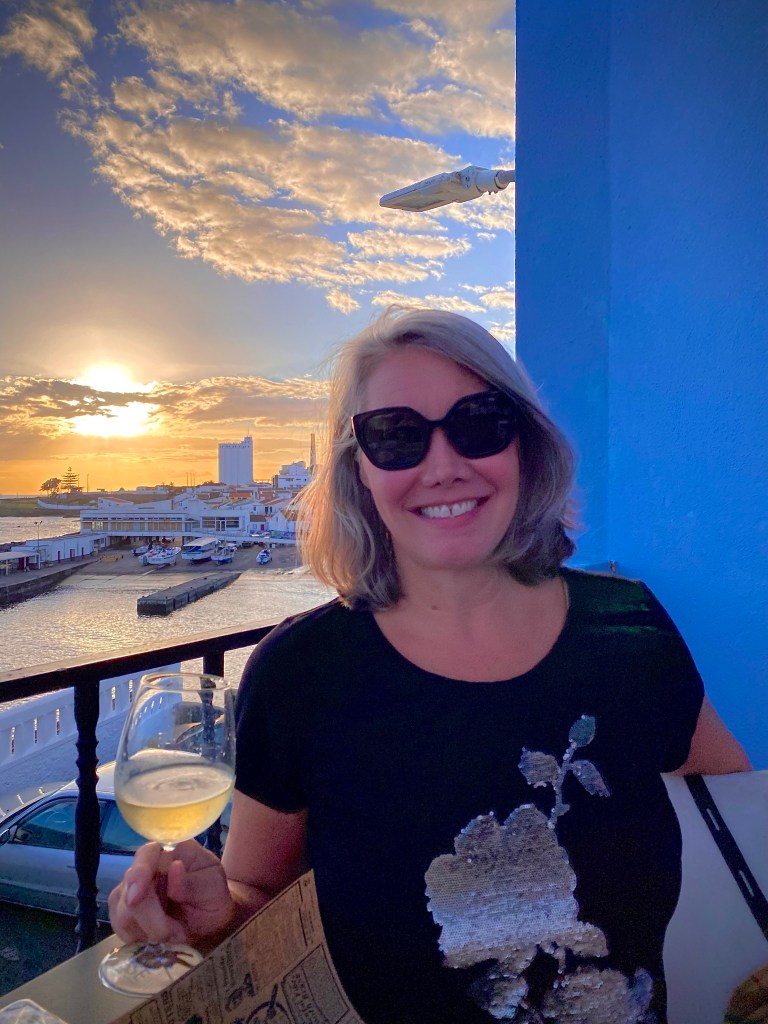

Our second visit to Portugal really ignited a love for this beautiful country and left us wanting more time. Whether you crave the city action of Lisbon, the beaches of Cascais or the Algarve, the natural beauty of the Azores, or the amazing wines of the Douro region, Portugal has something amazing and memorable to offer every traveler.
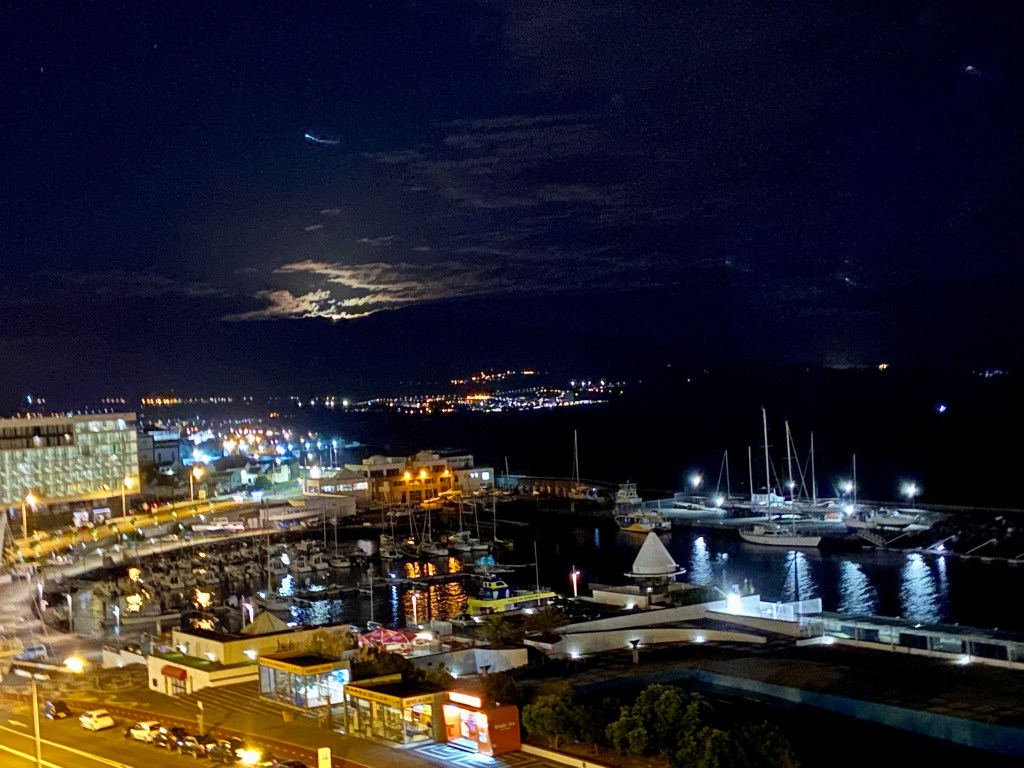


Beautiful photos, Stephanie! Envy your travels, but we’re “laying low” until the pandemic is under stricter control. Still have Scotland as our #1 go-to, but lately I’ve been intrigued by the Iceland/Greenland cruises. Keep up the great work!
On Mon, Dec 13, 2021 at 7:36 PM The Wandering Lass wrote:
> The Wandering Lass posted: ” After a four-year hiatus, we finally made a > return visit to Portugal in September 2021! In 2017, long before anyone > imagined a pandemic would press pause on basically everything, we visited > this gorgeous country for the first time with a group of friends” >
LikeLiked by 1 person